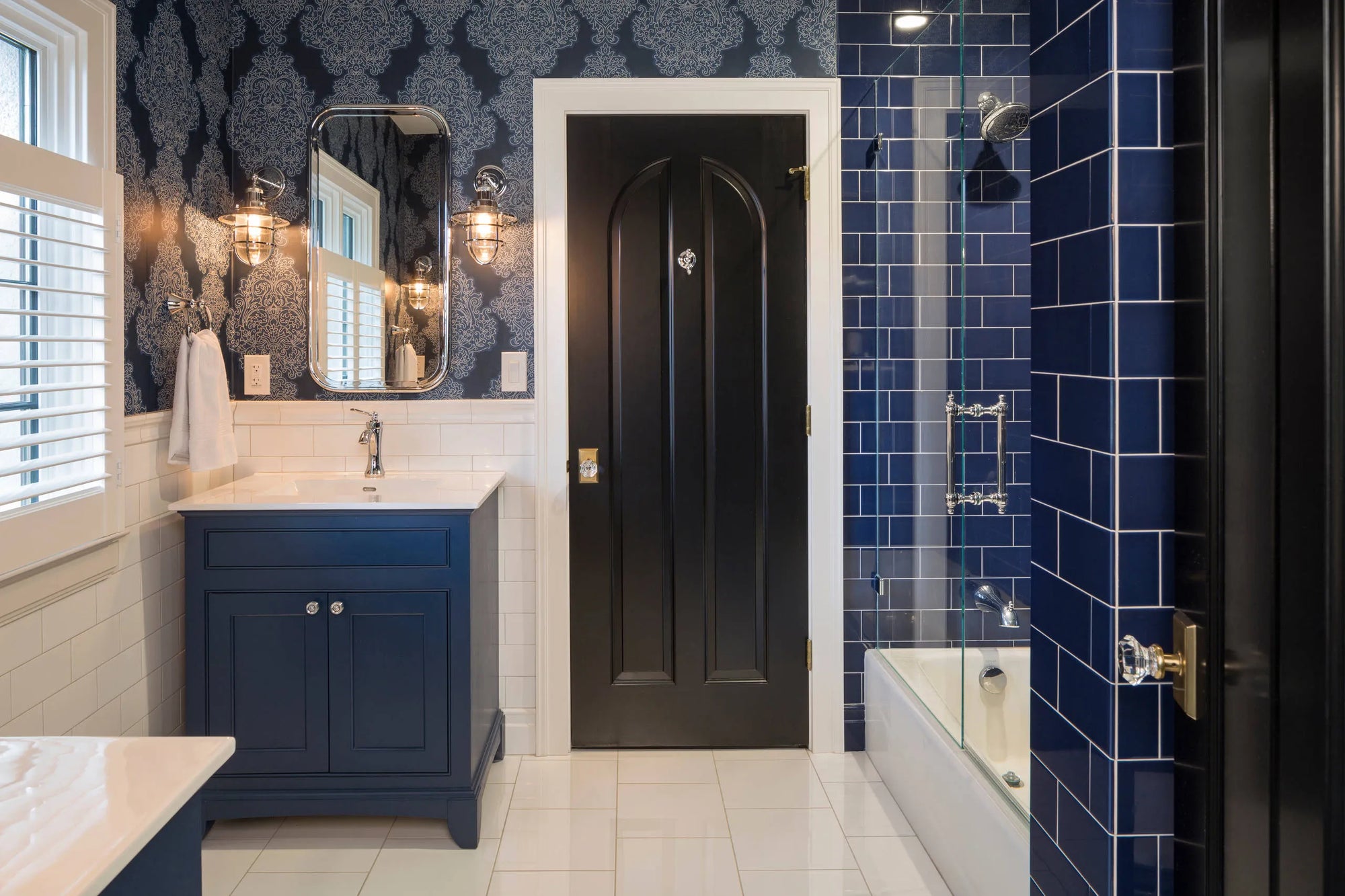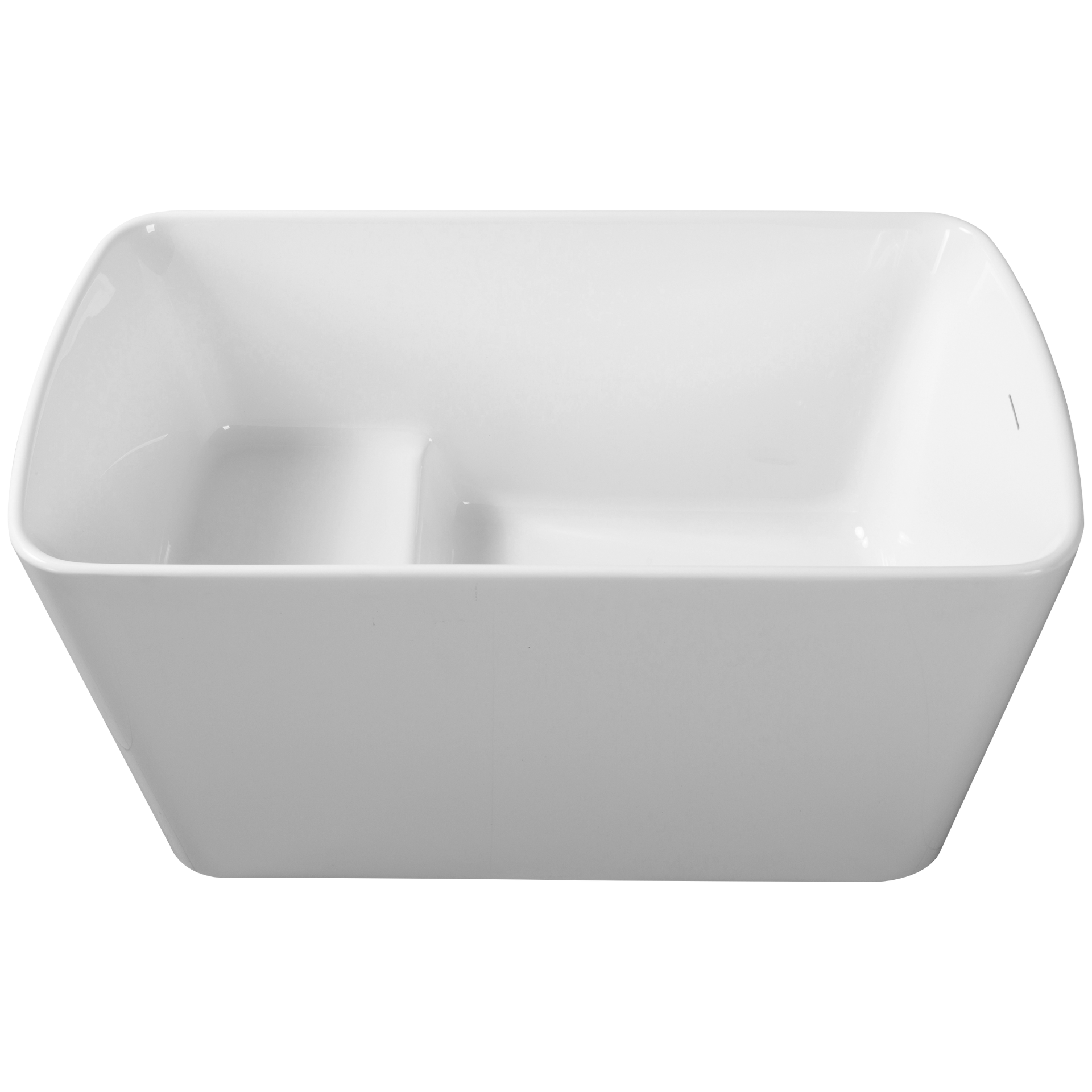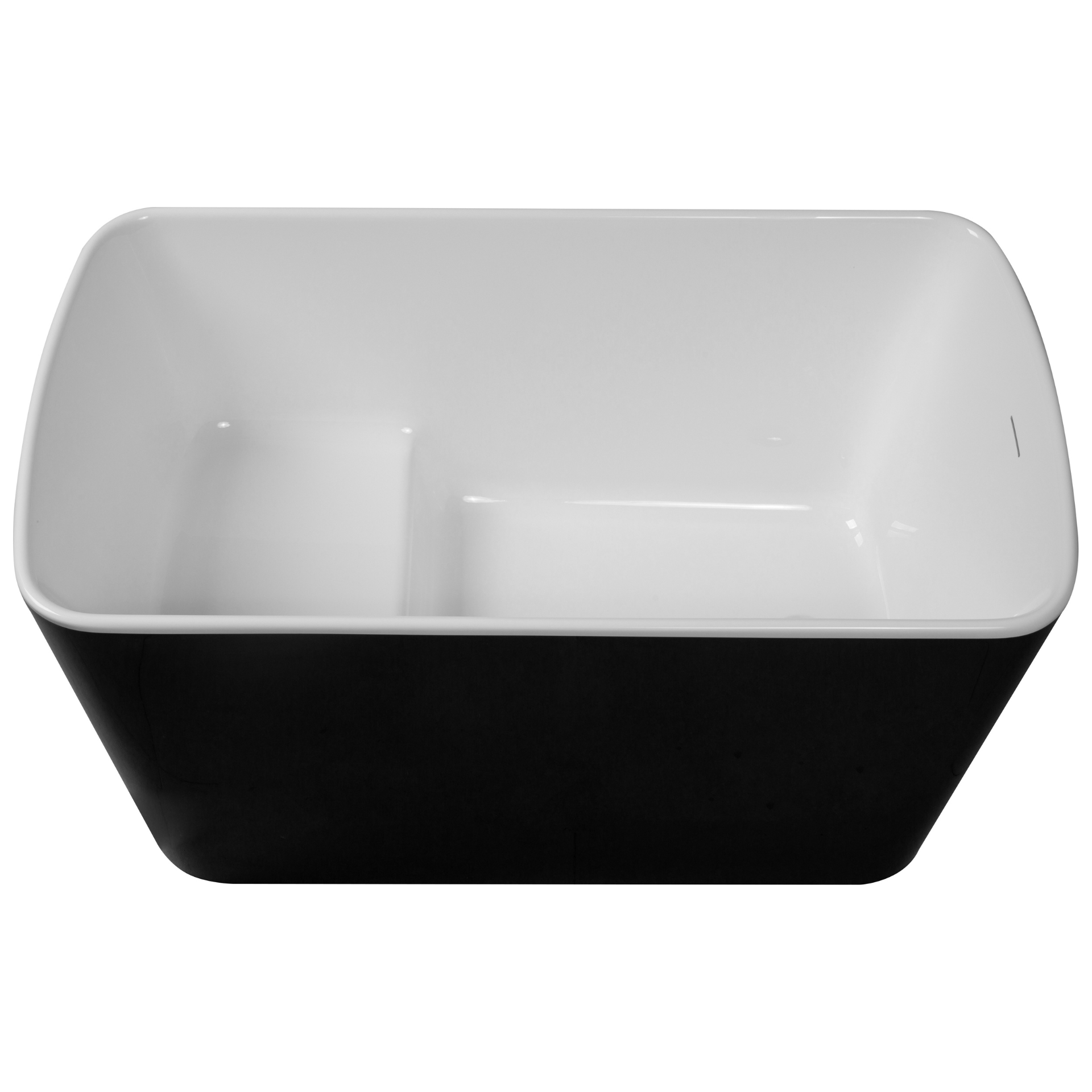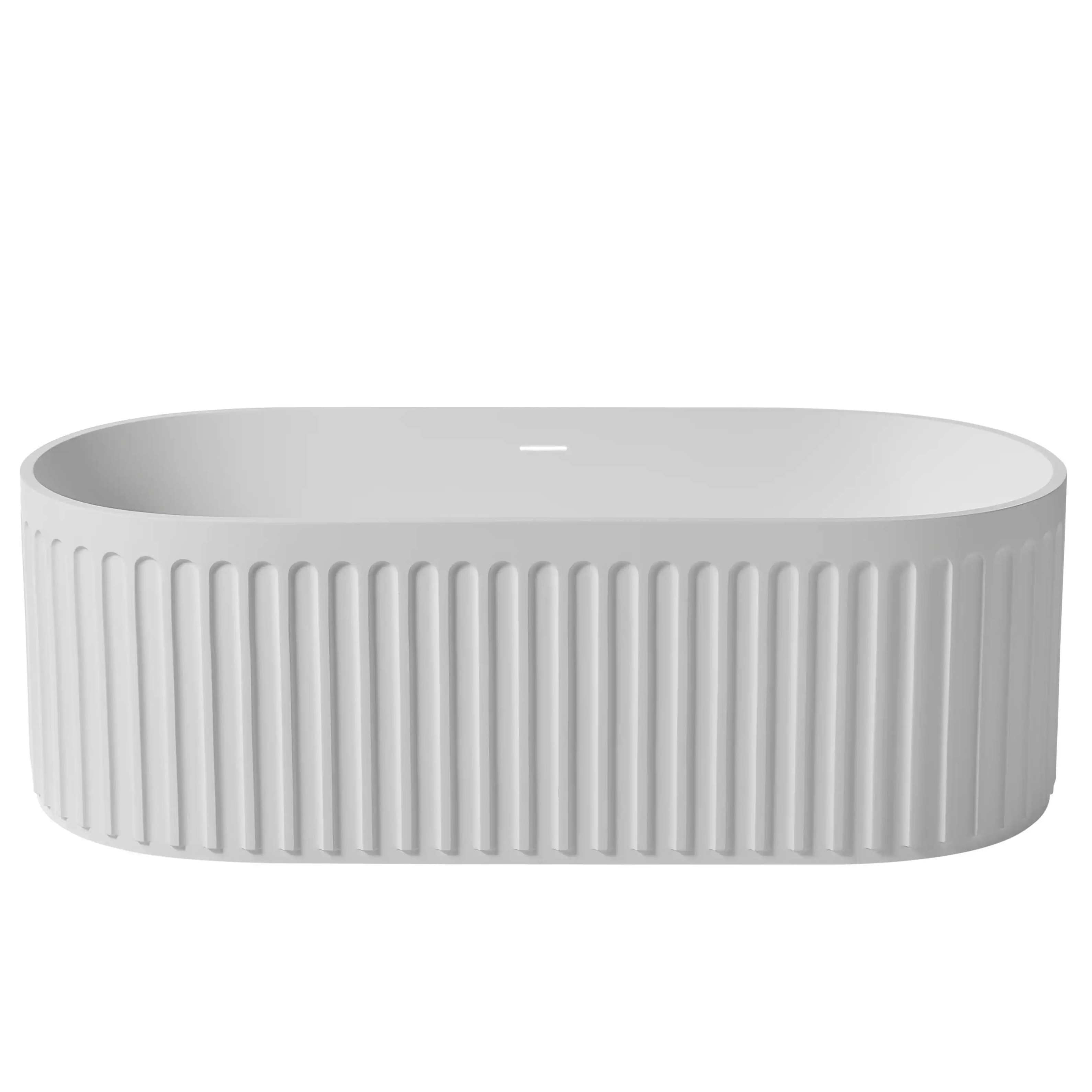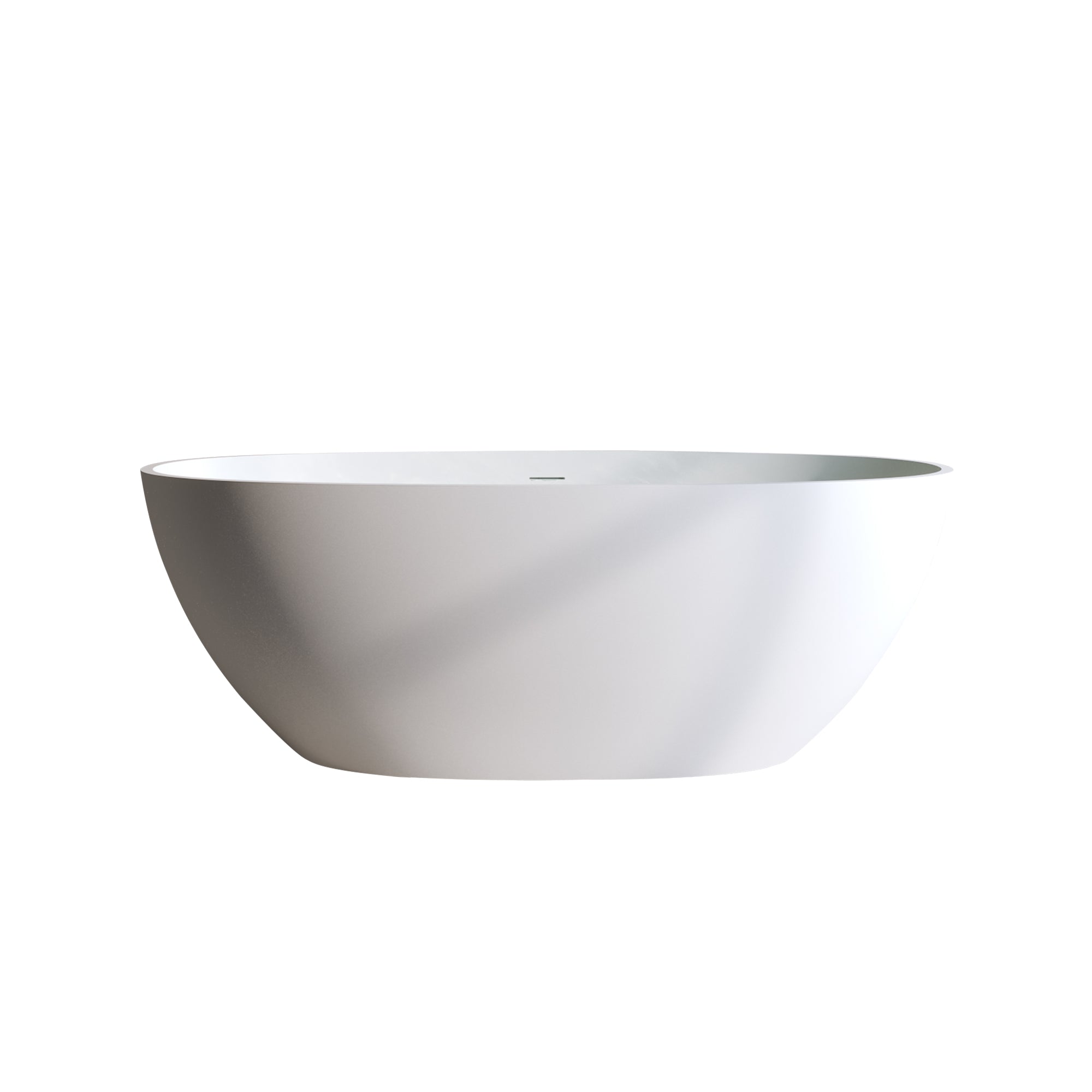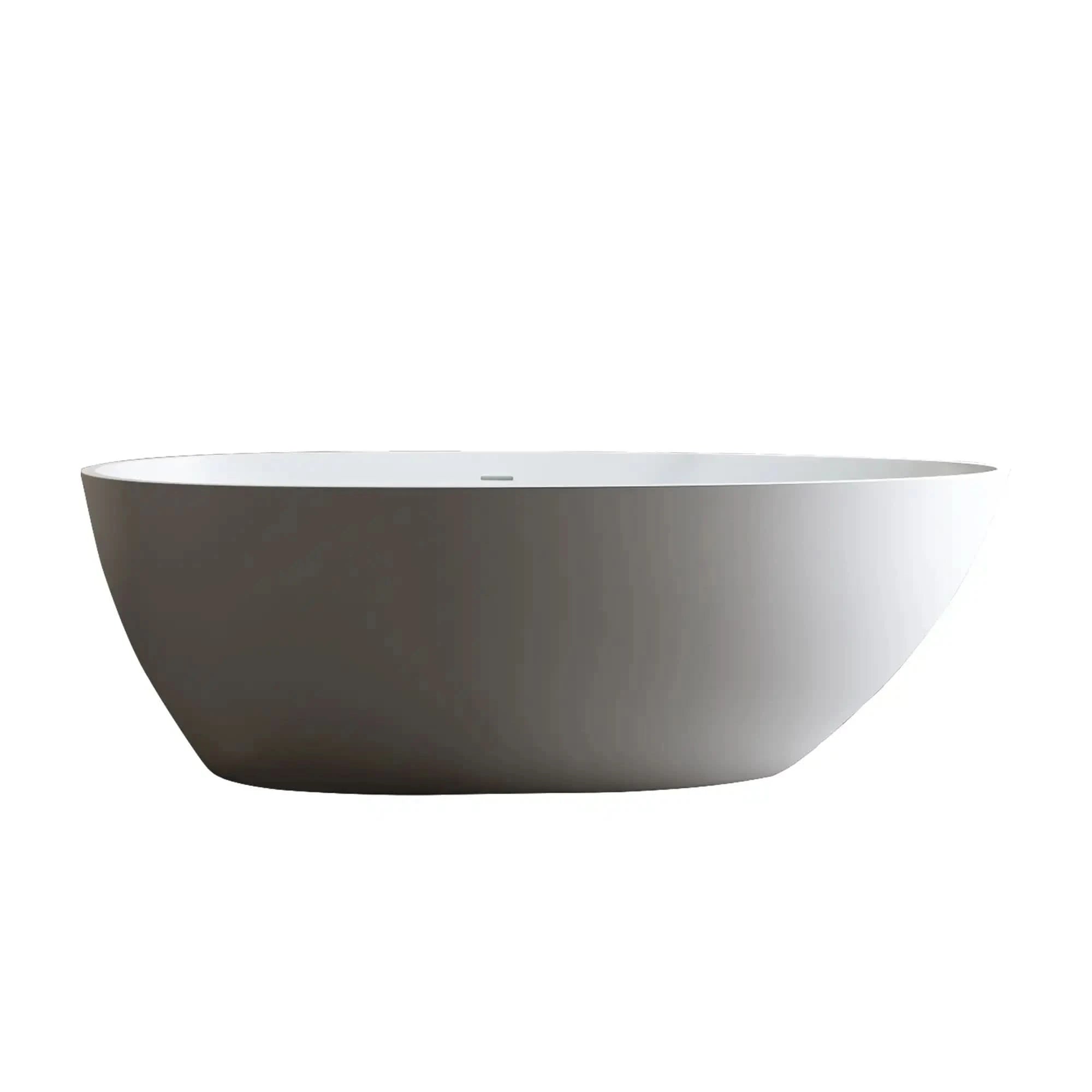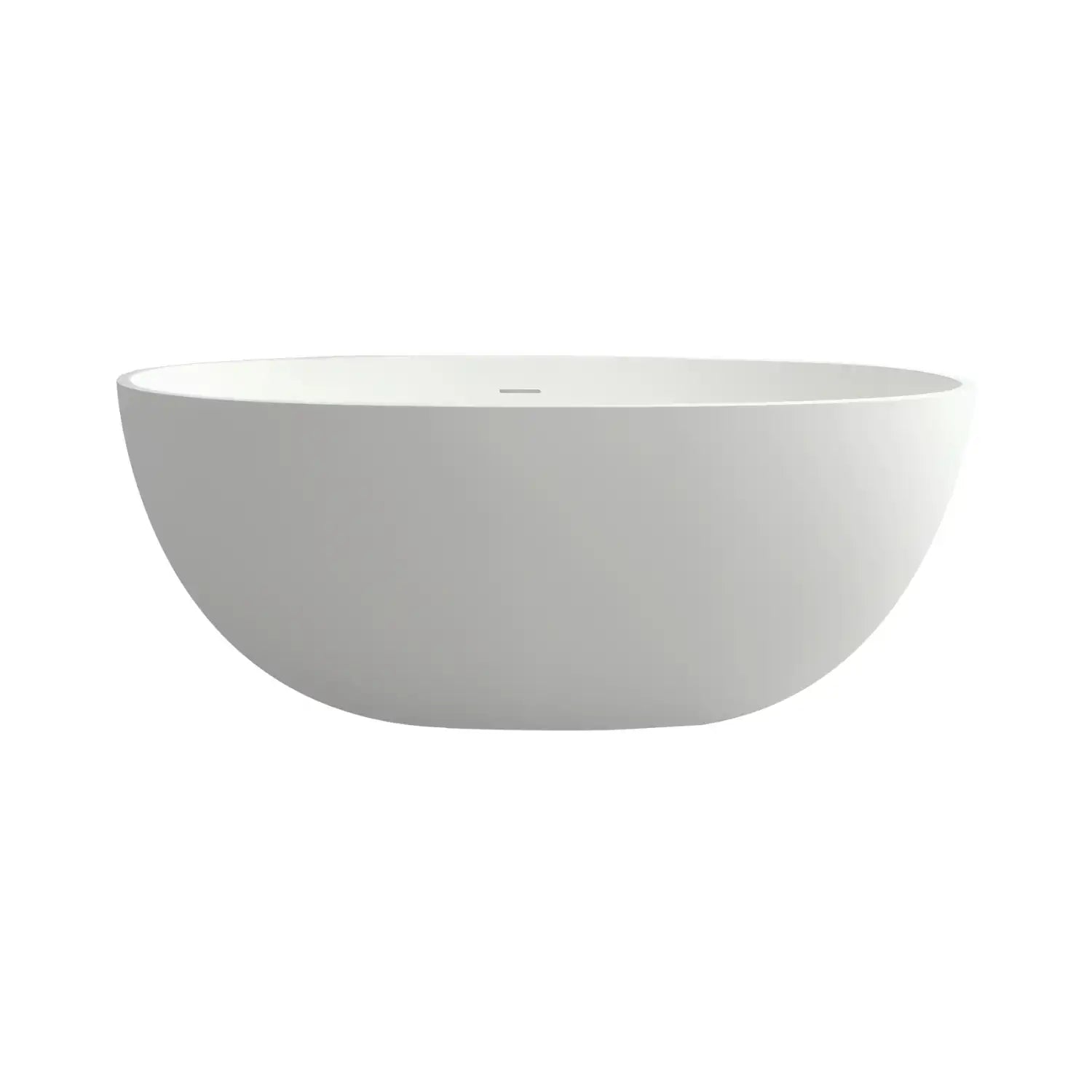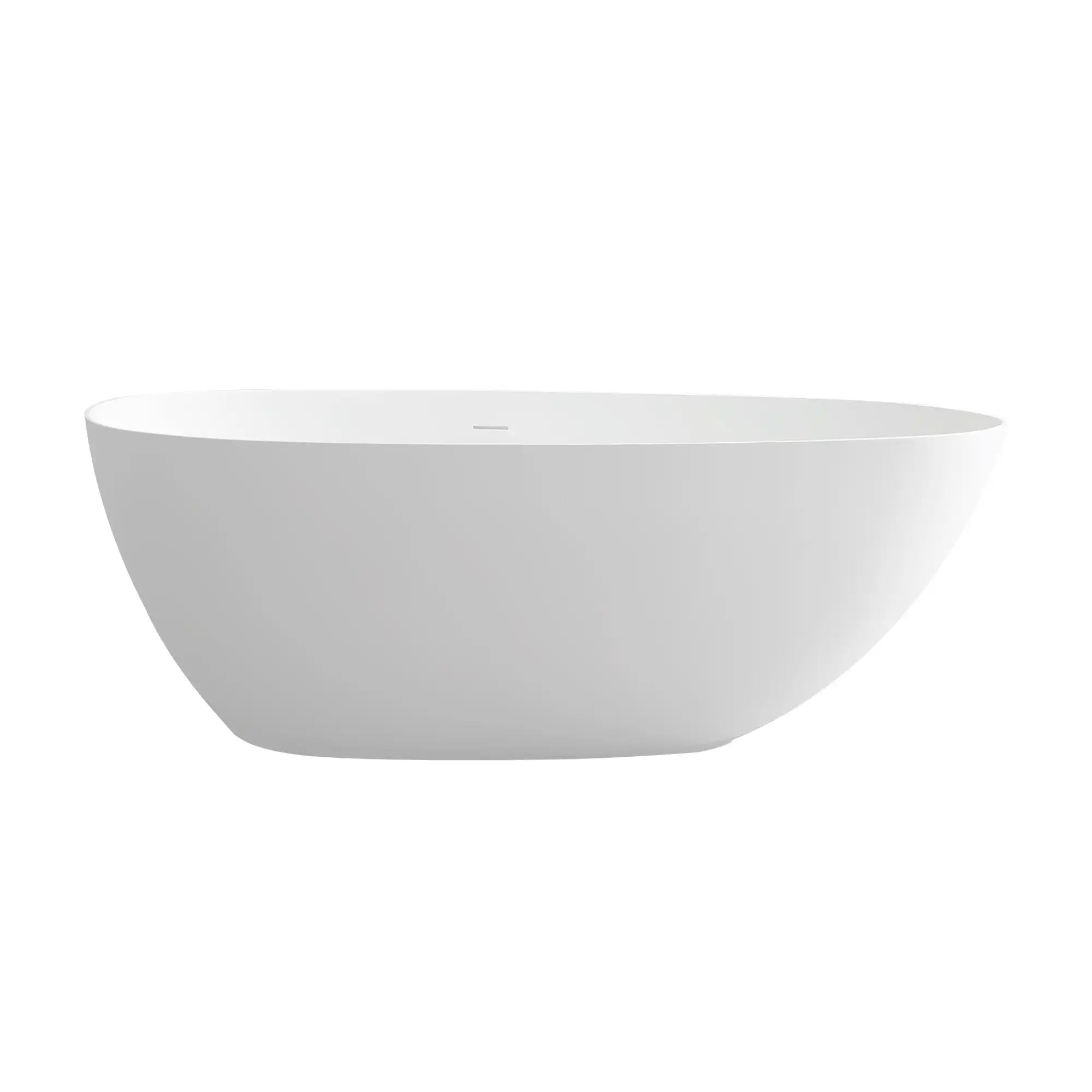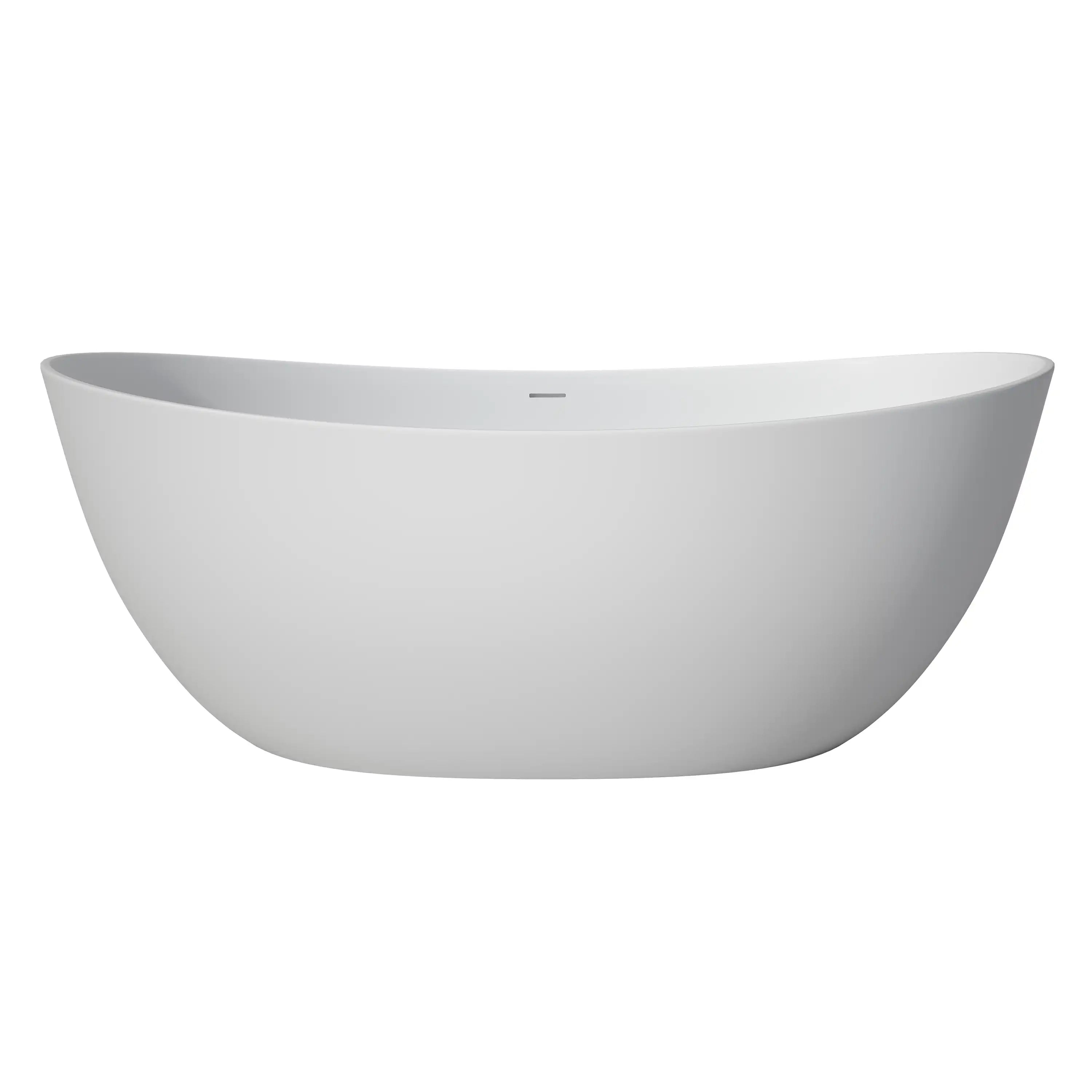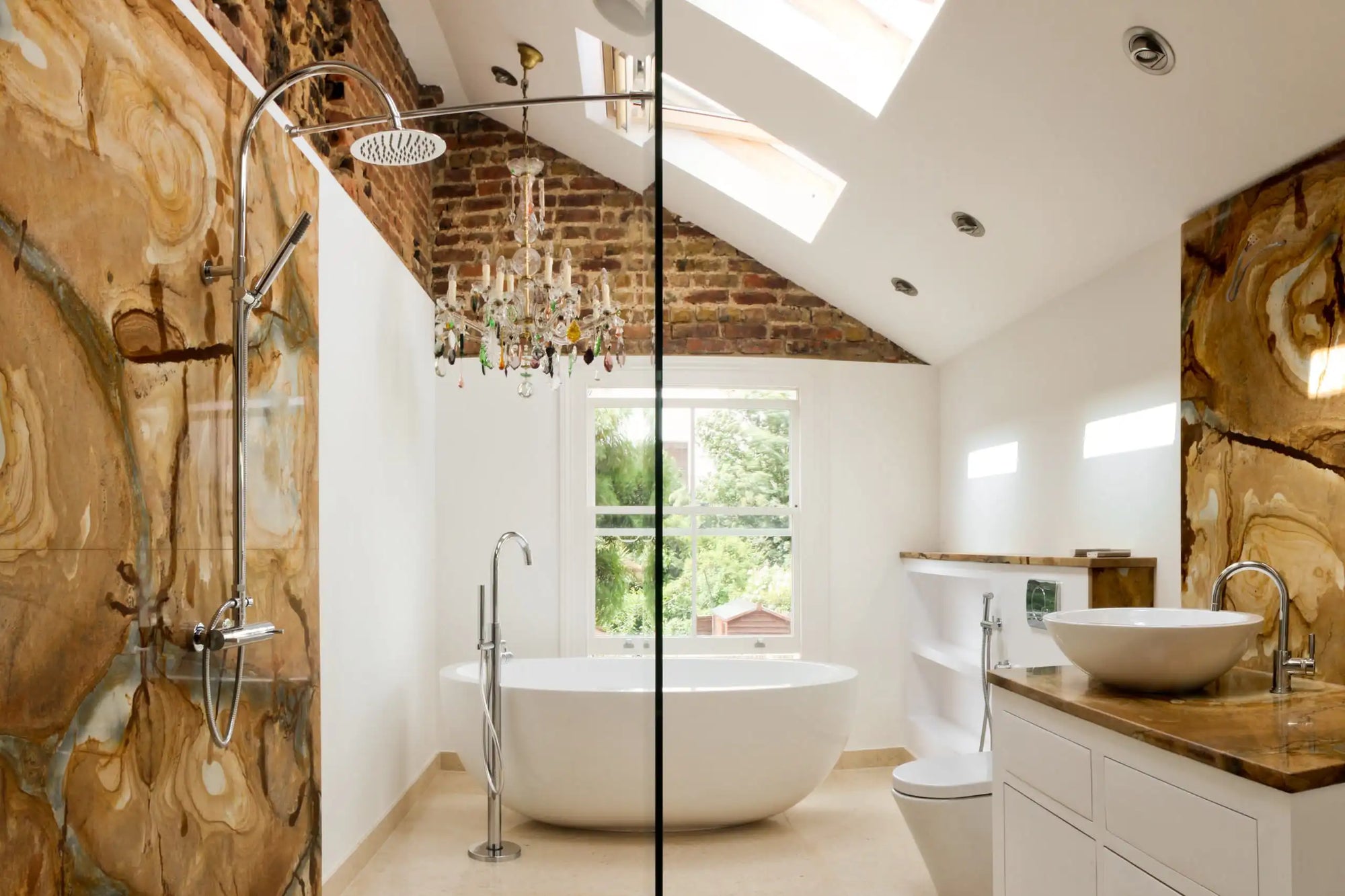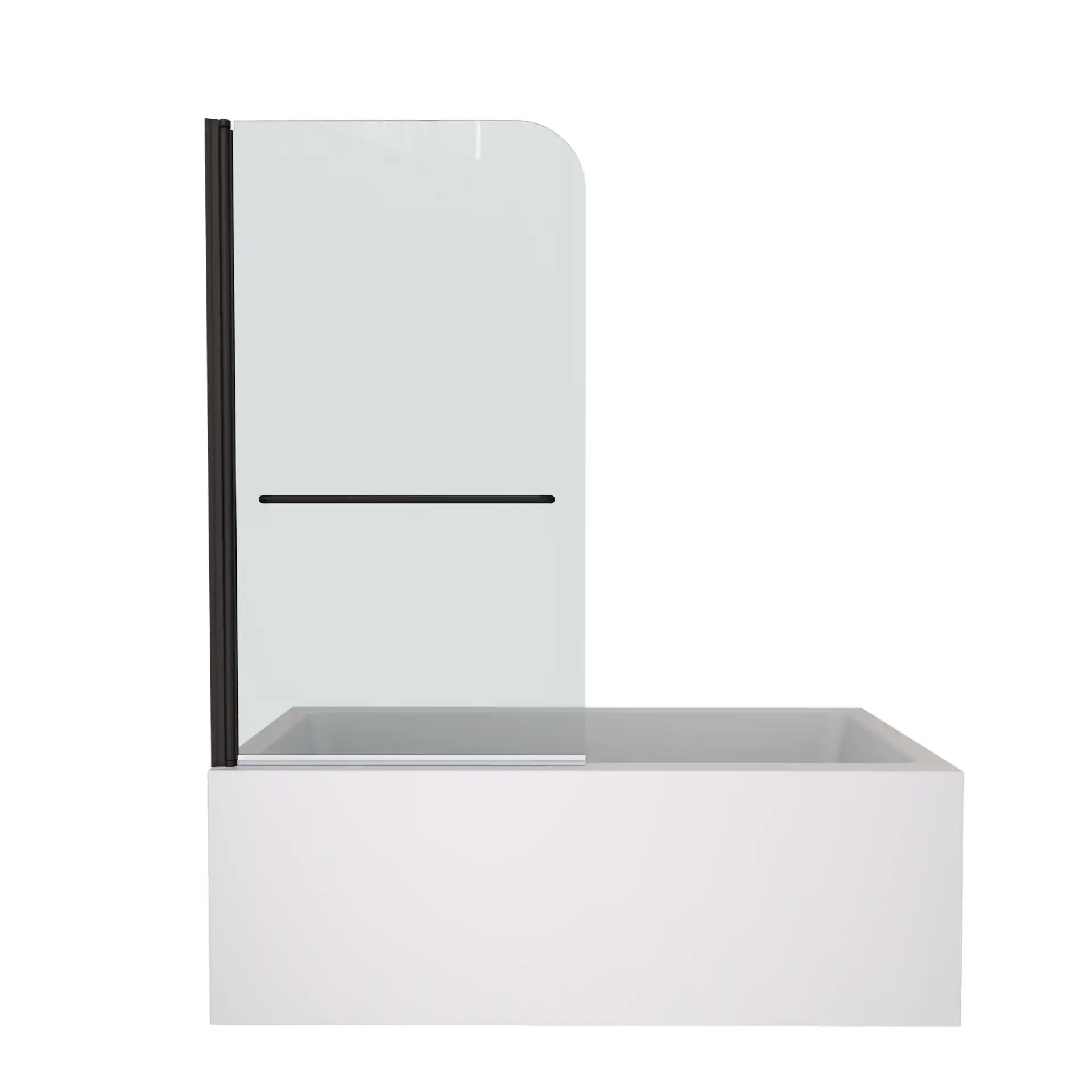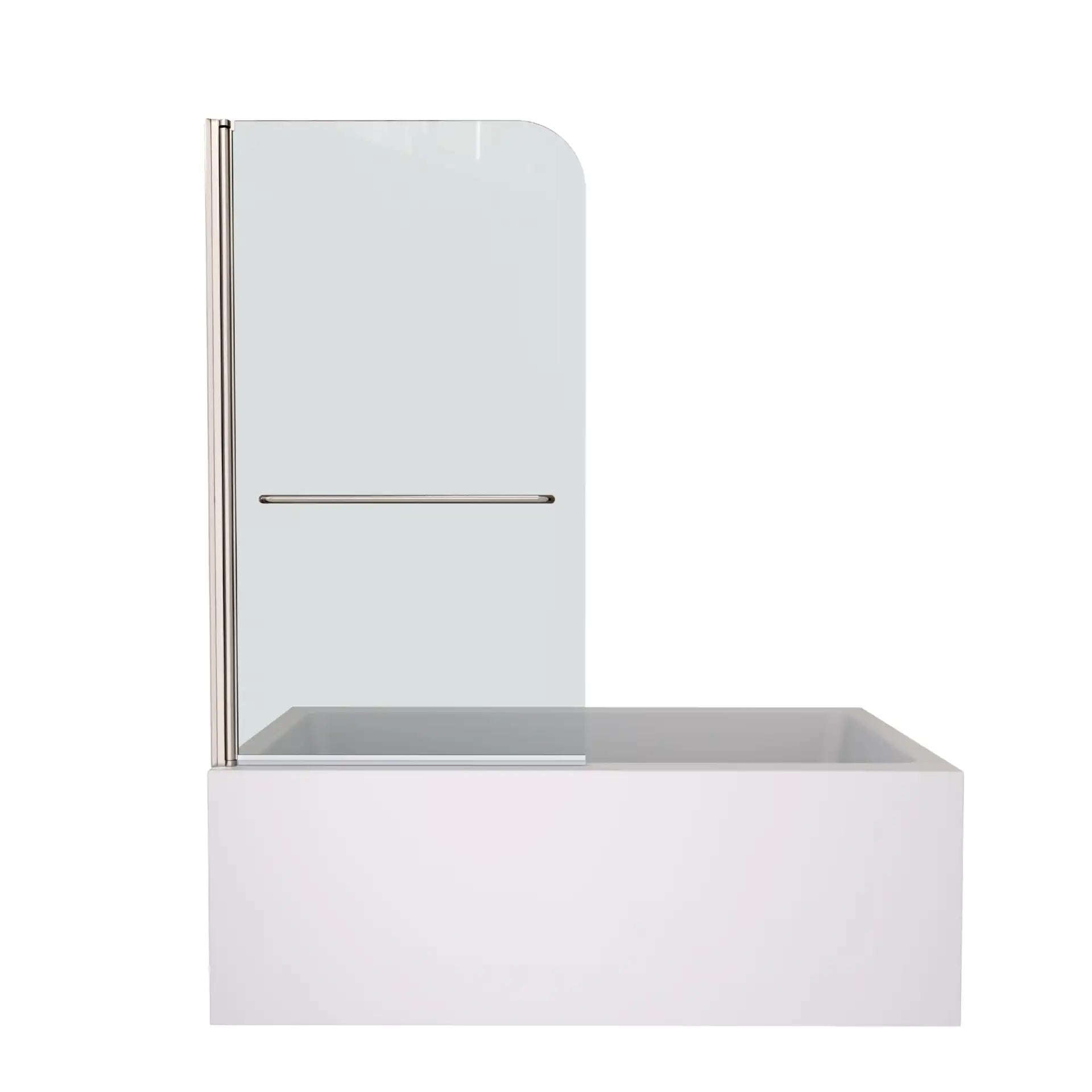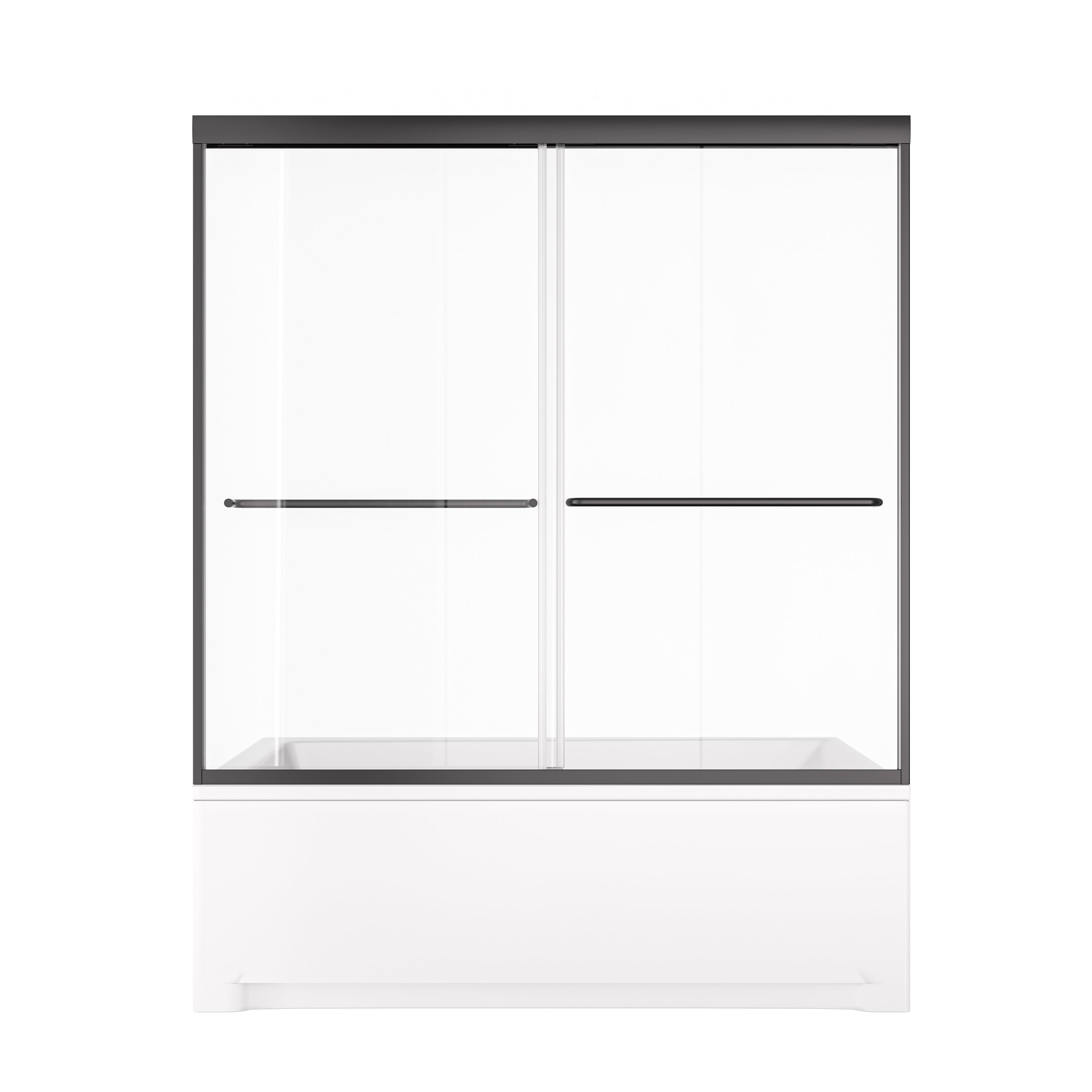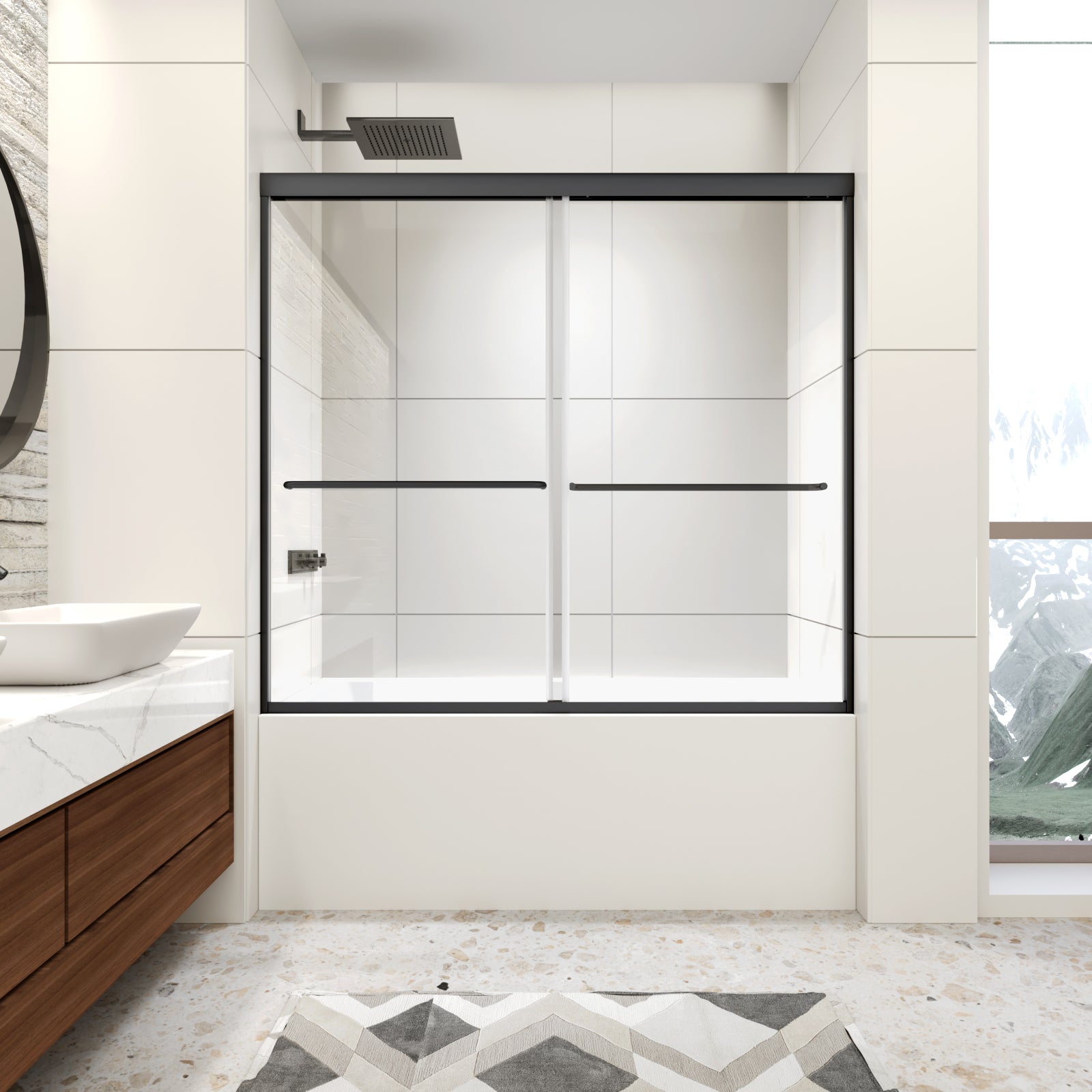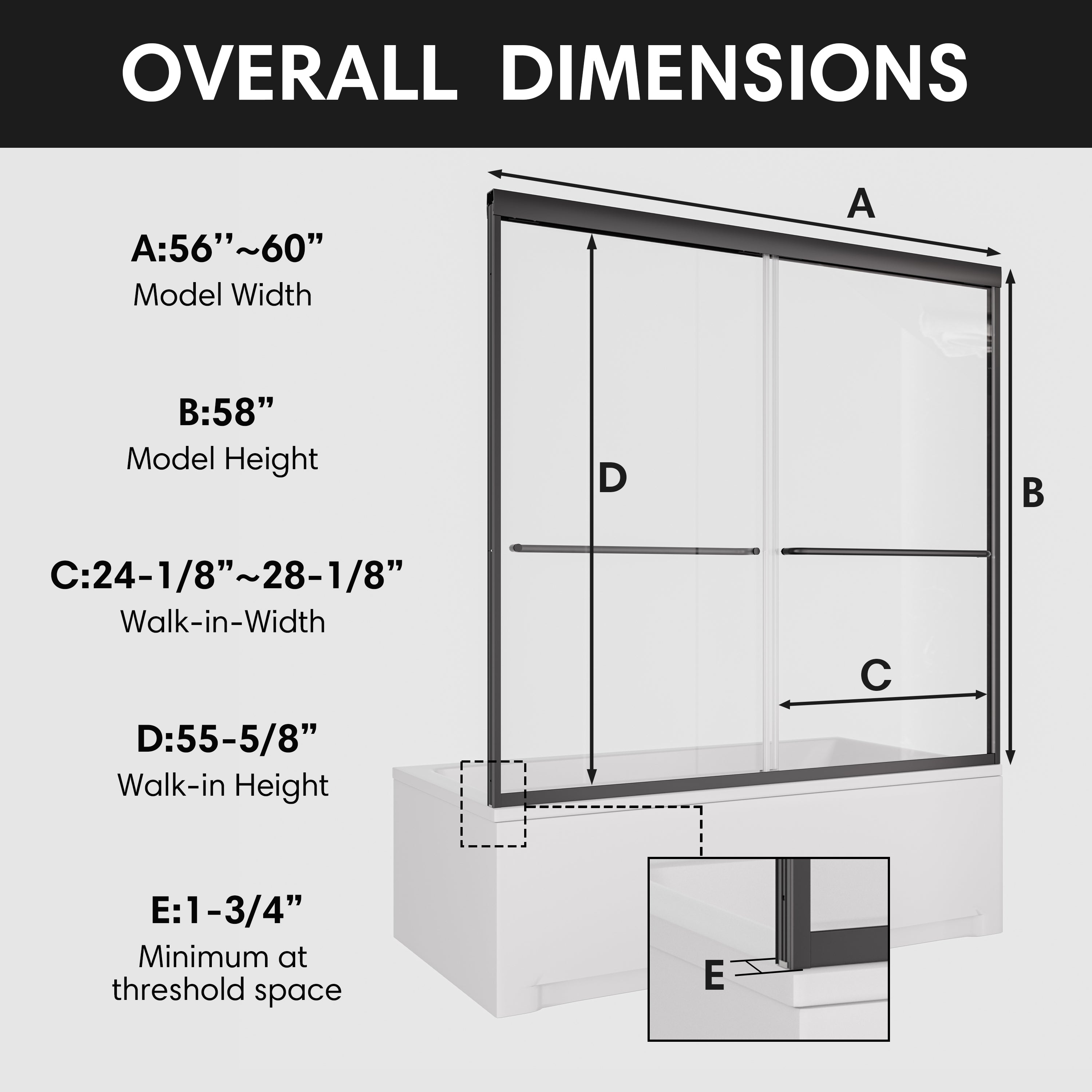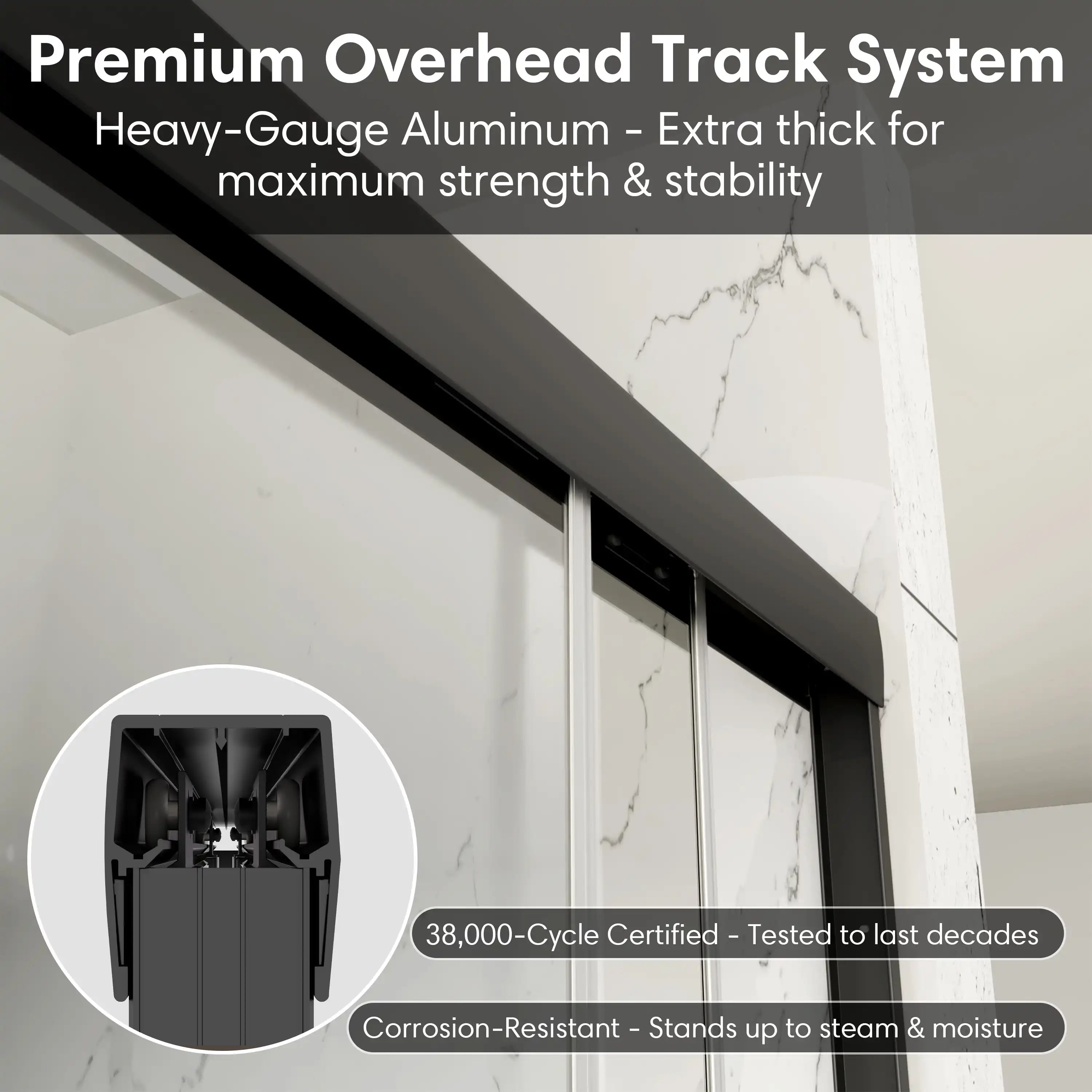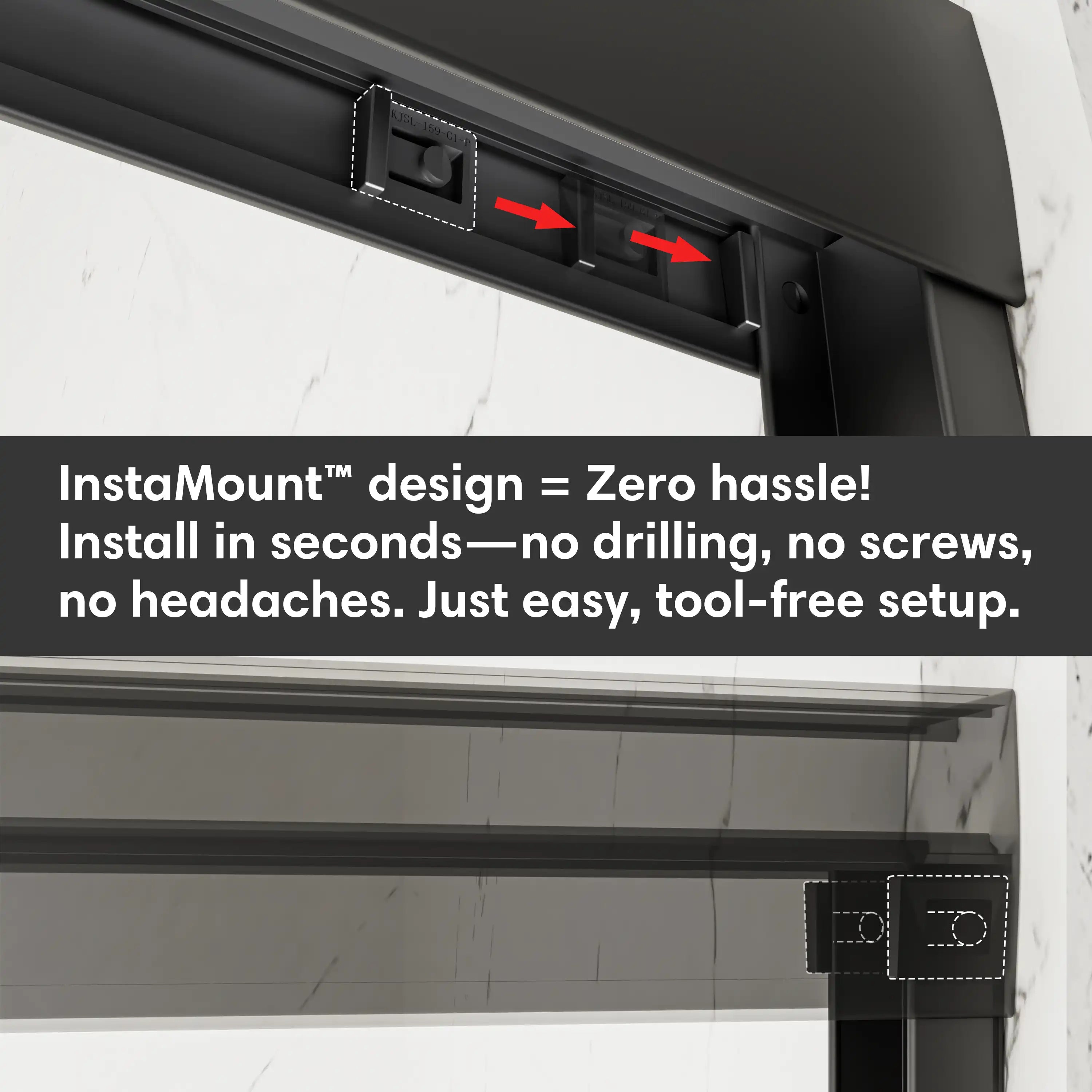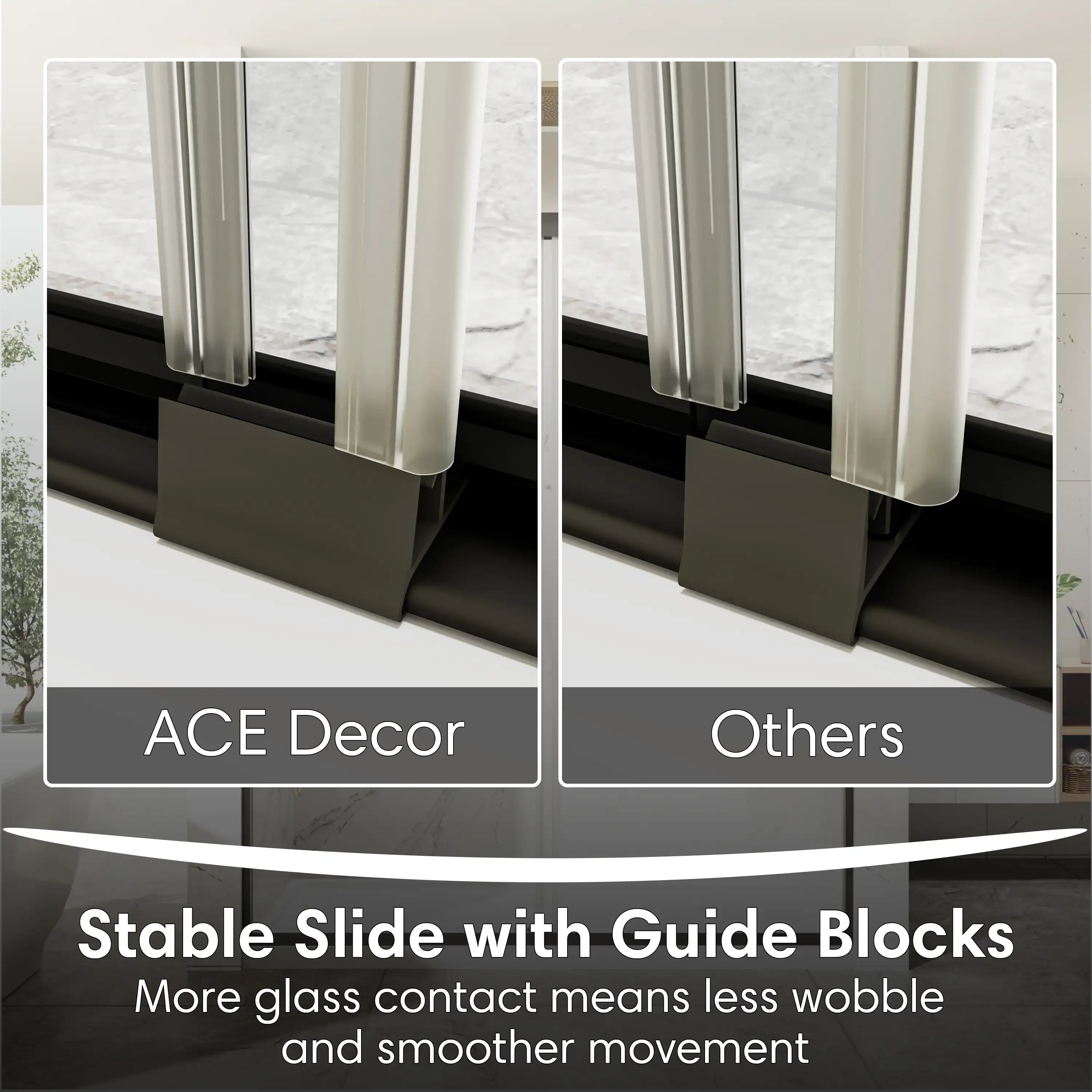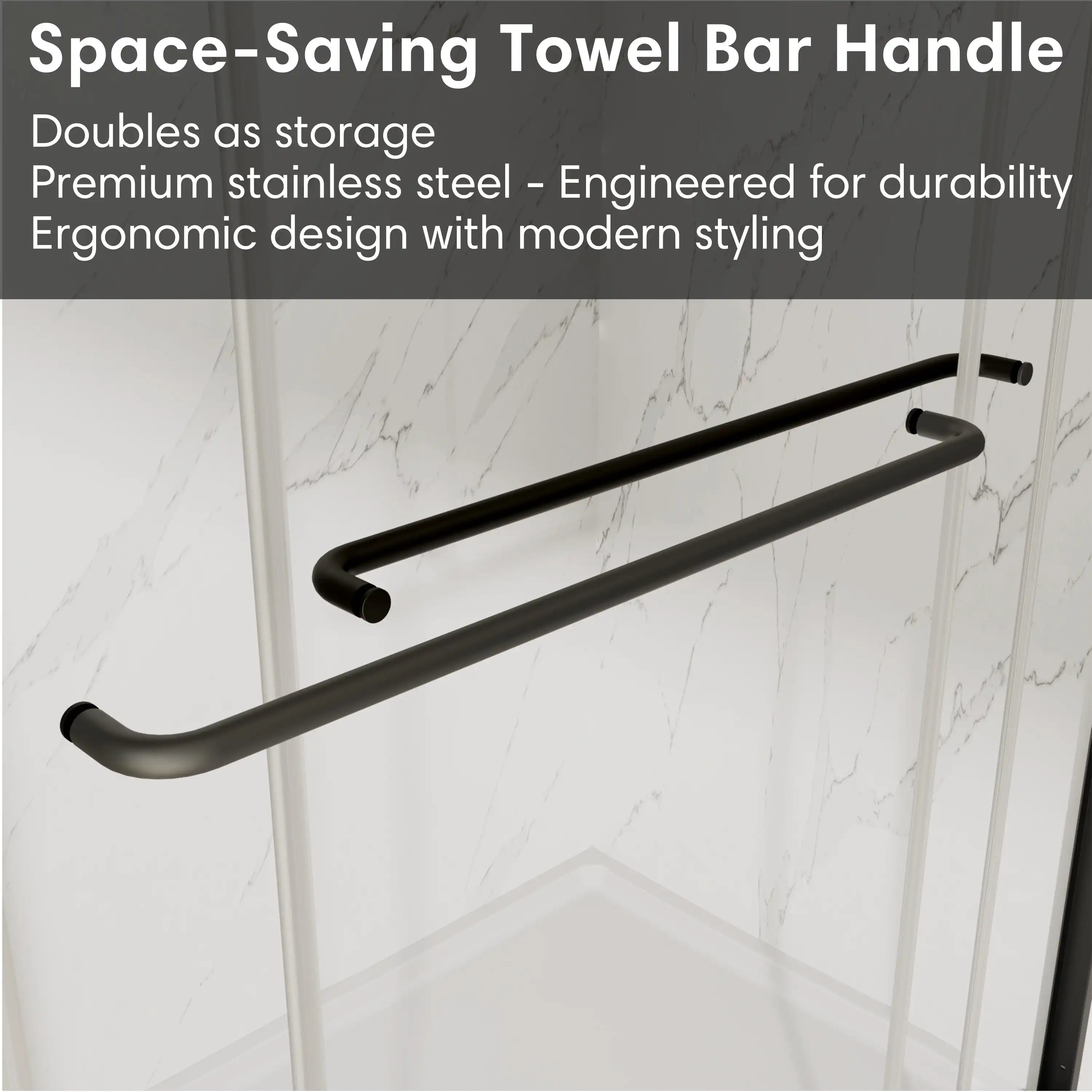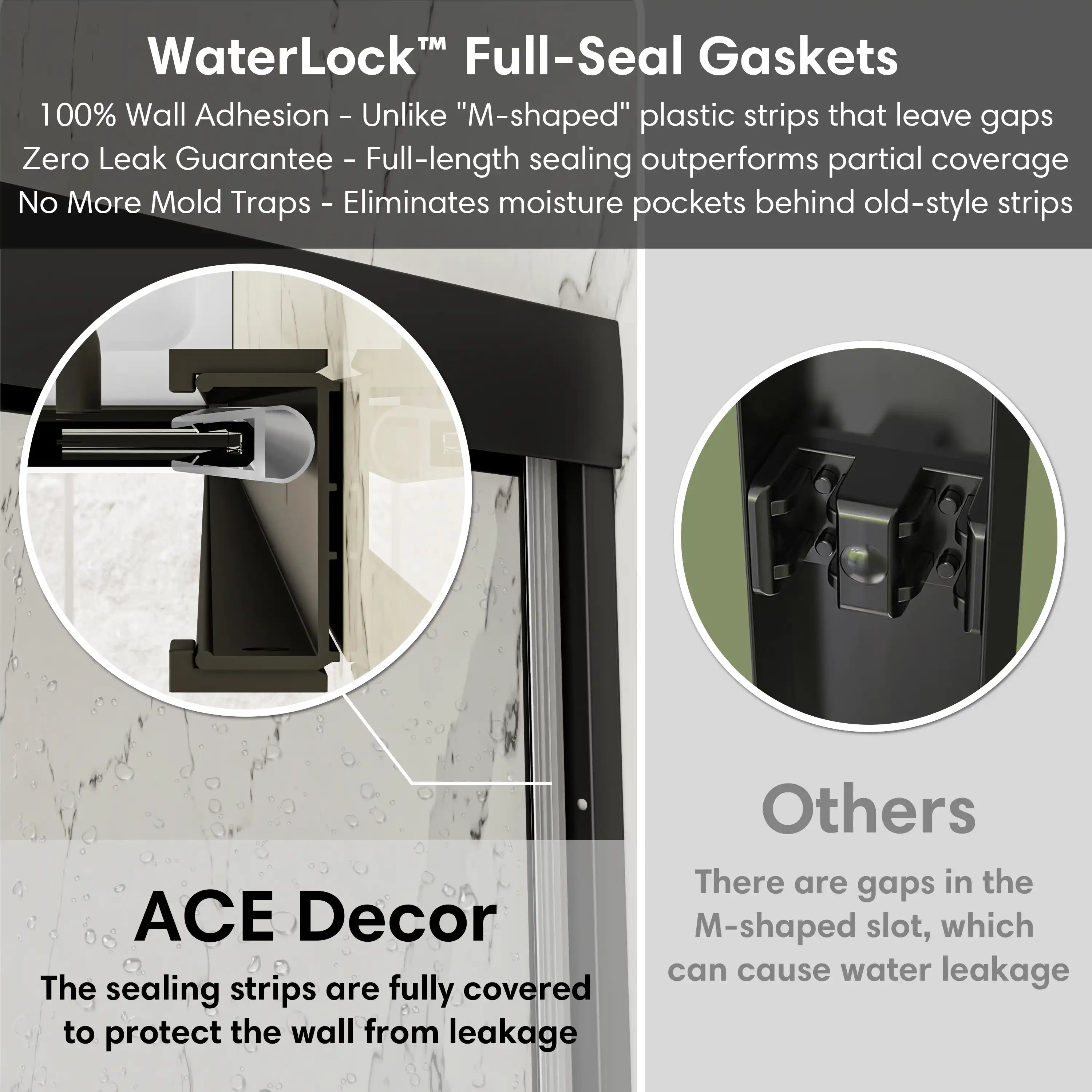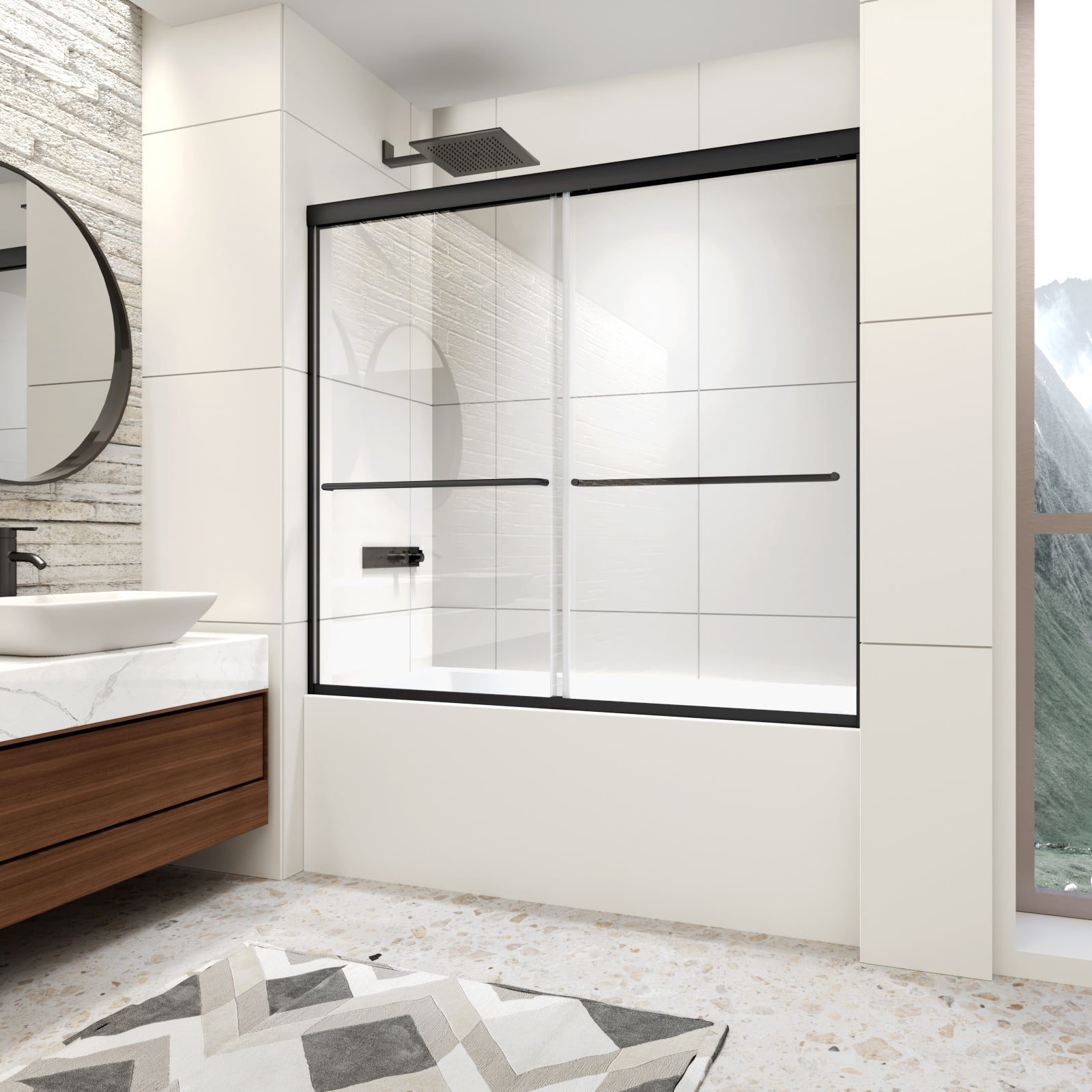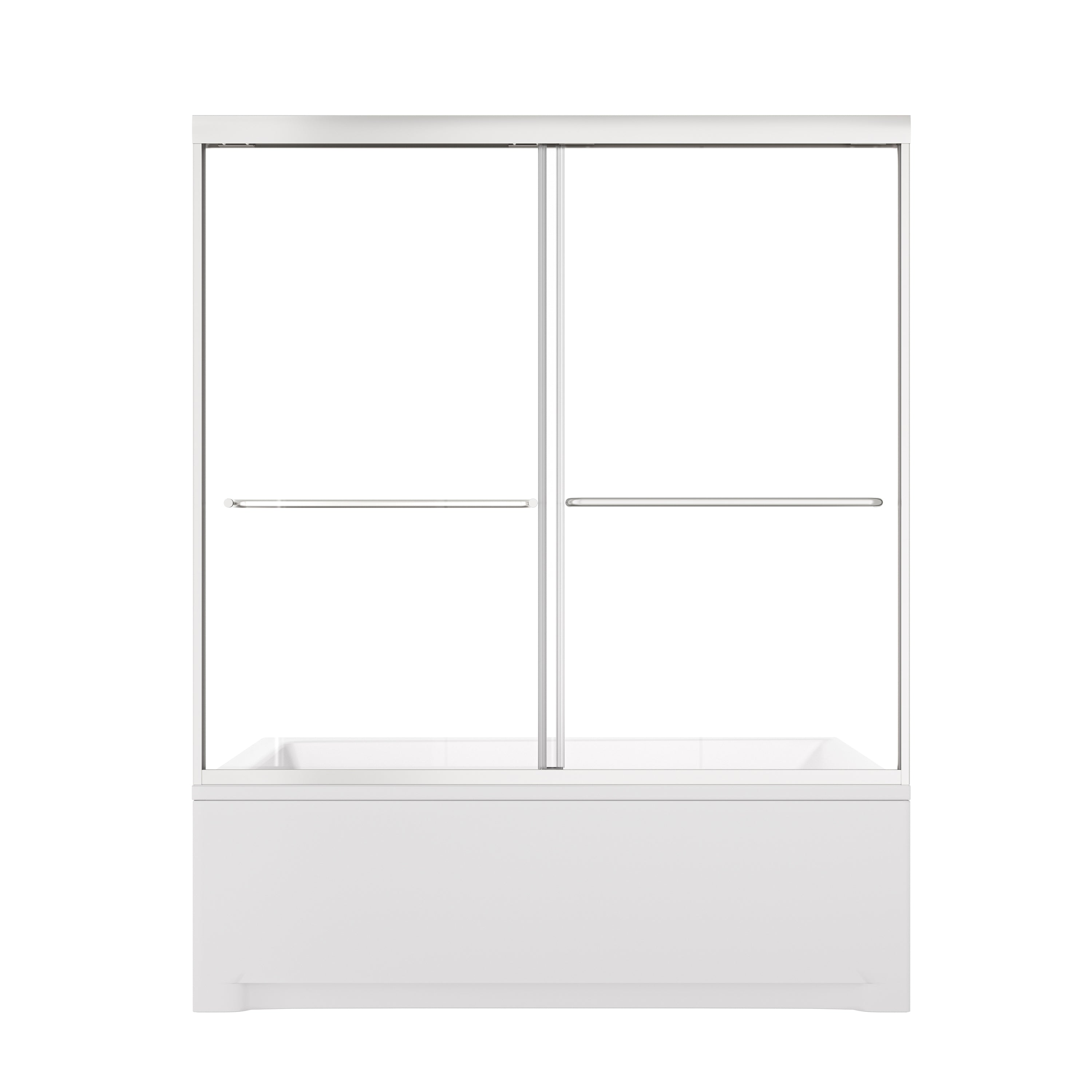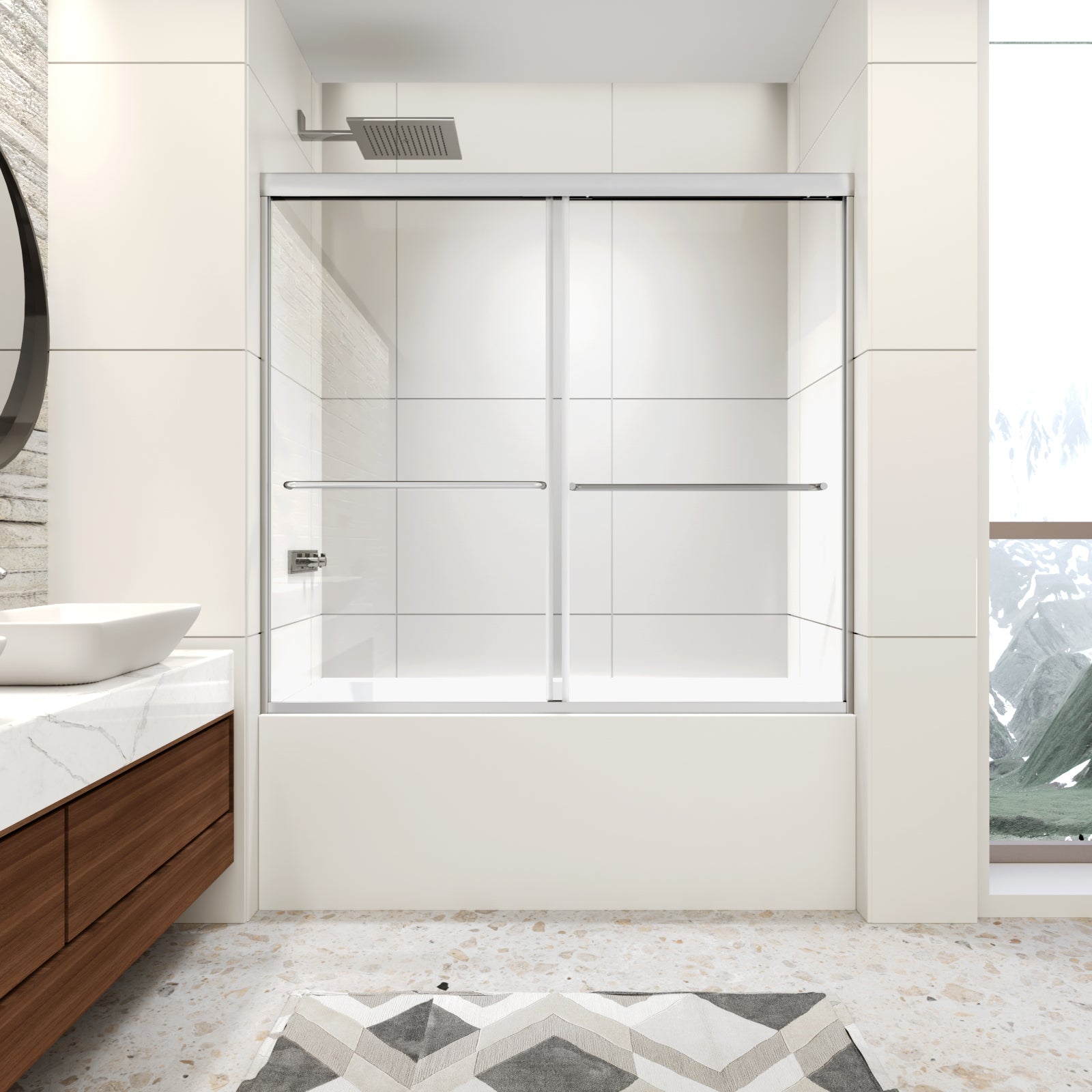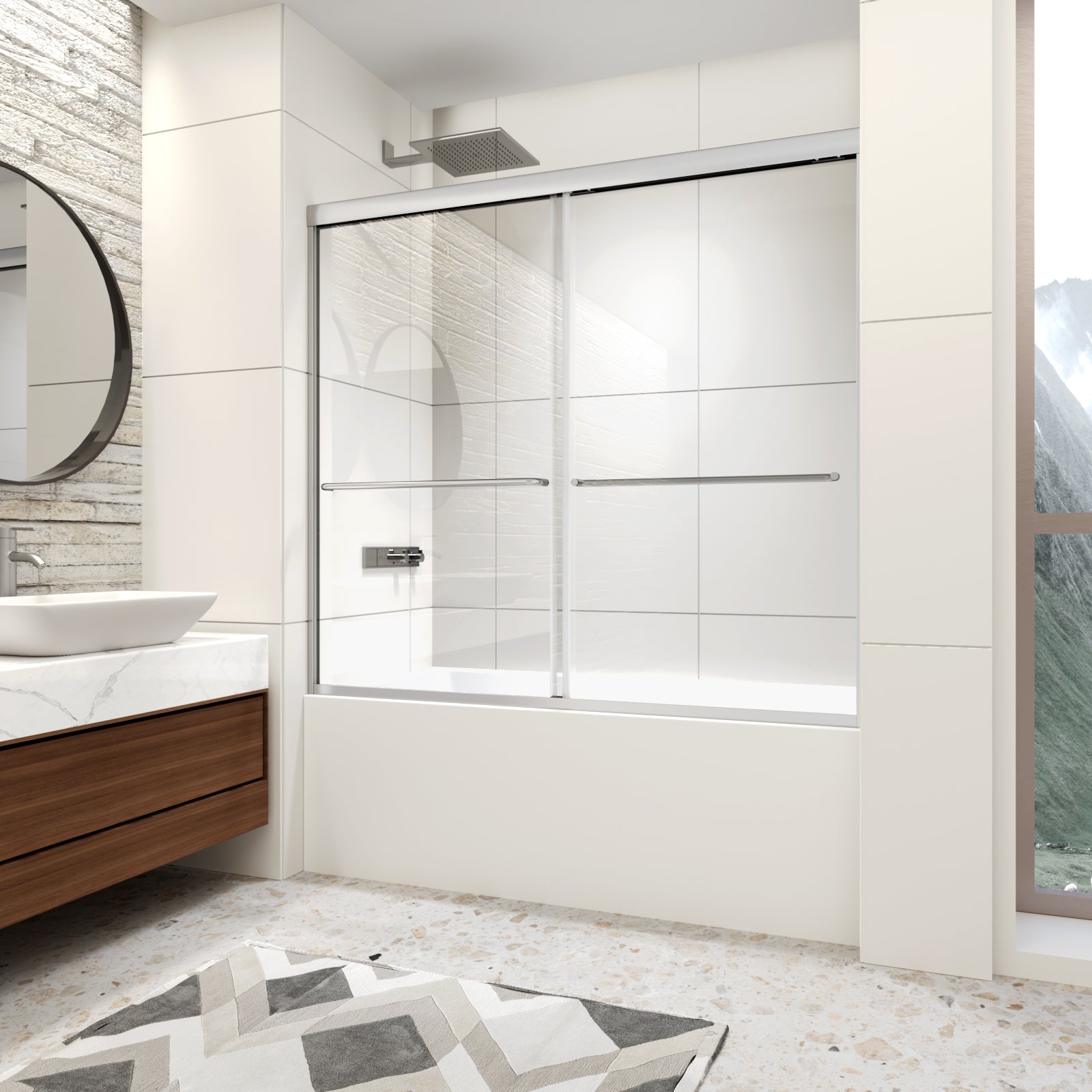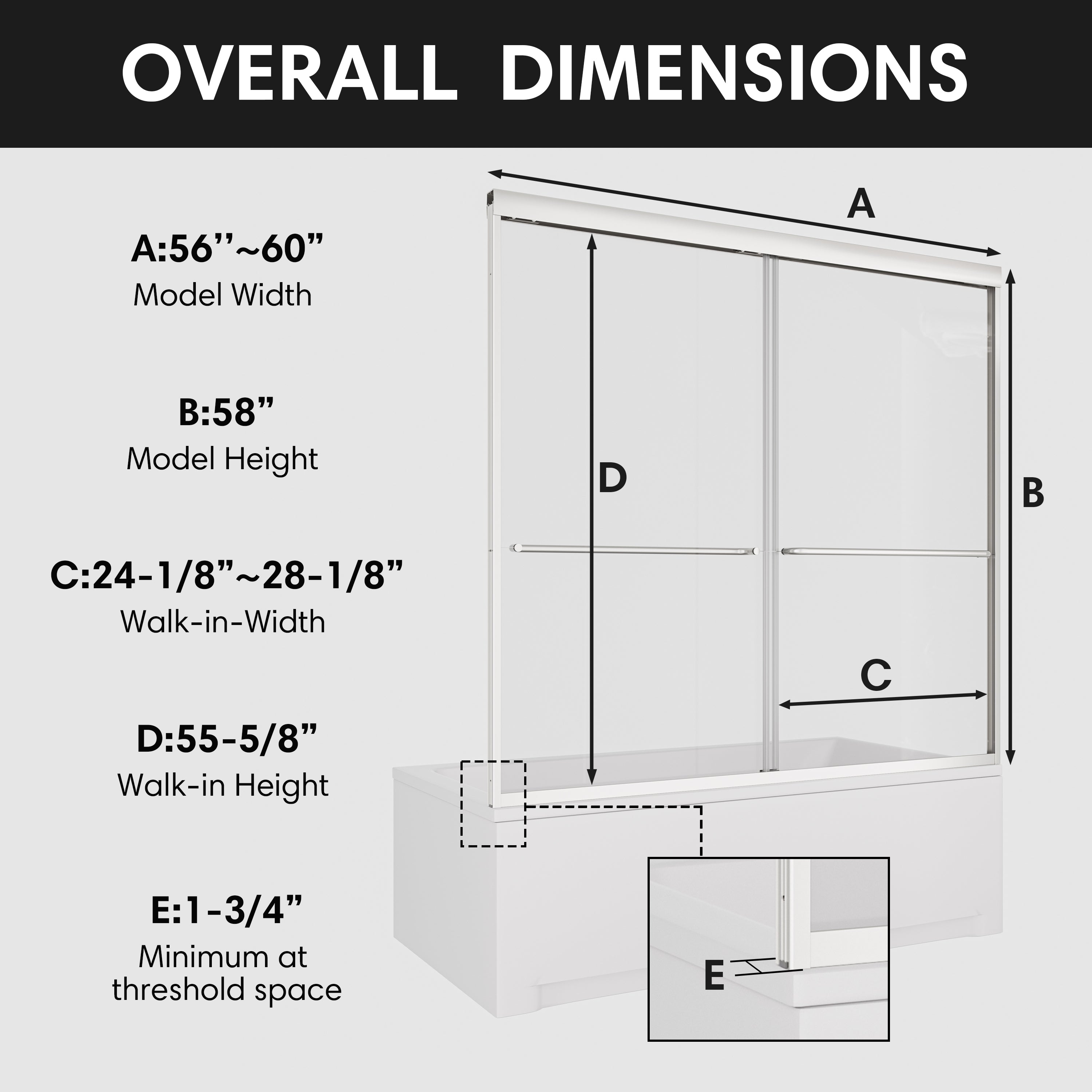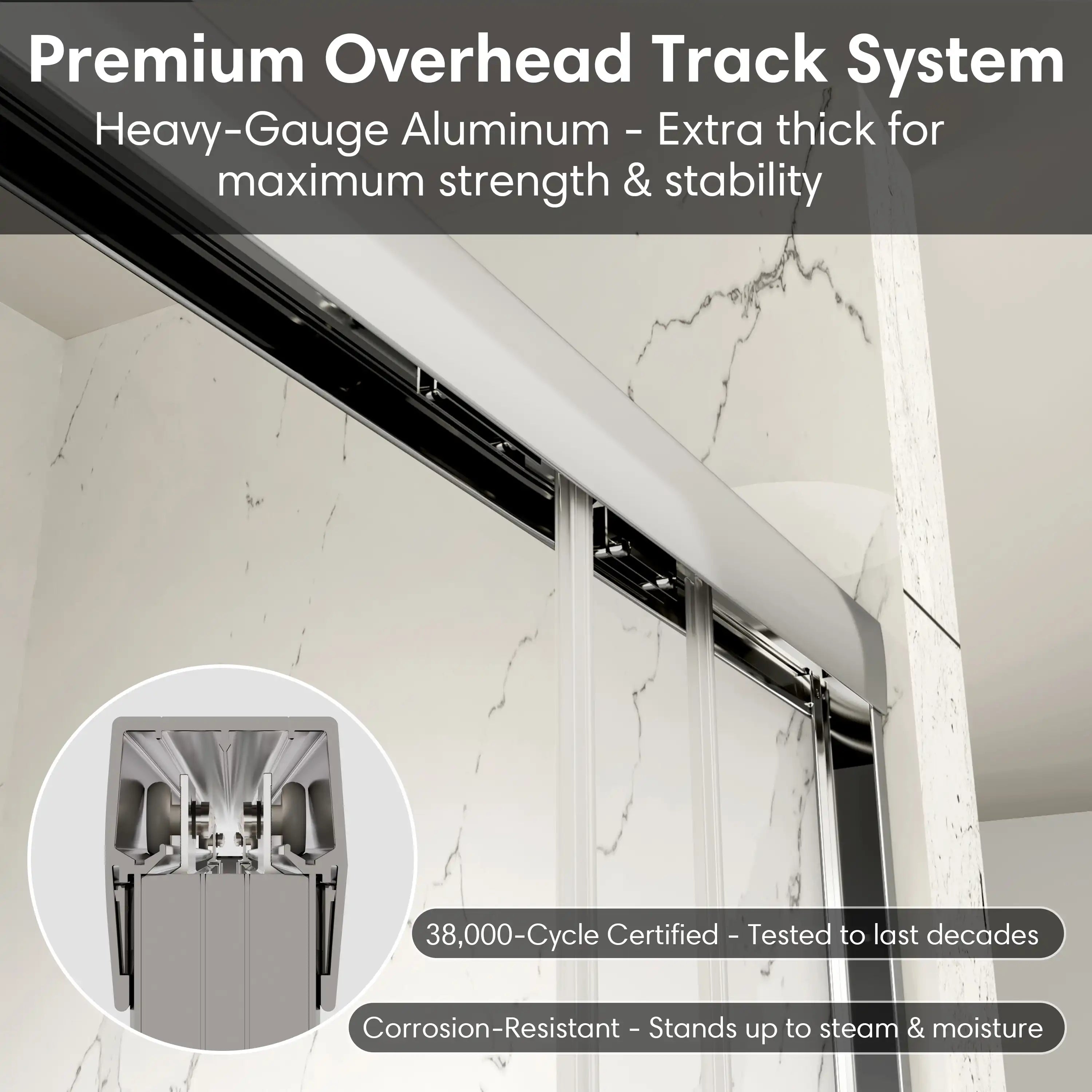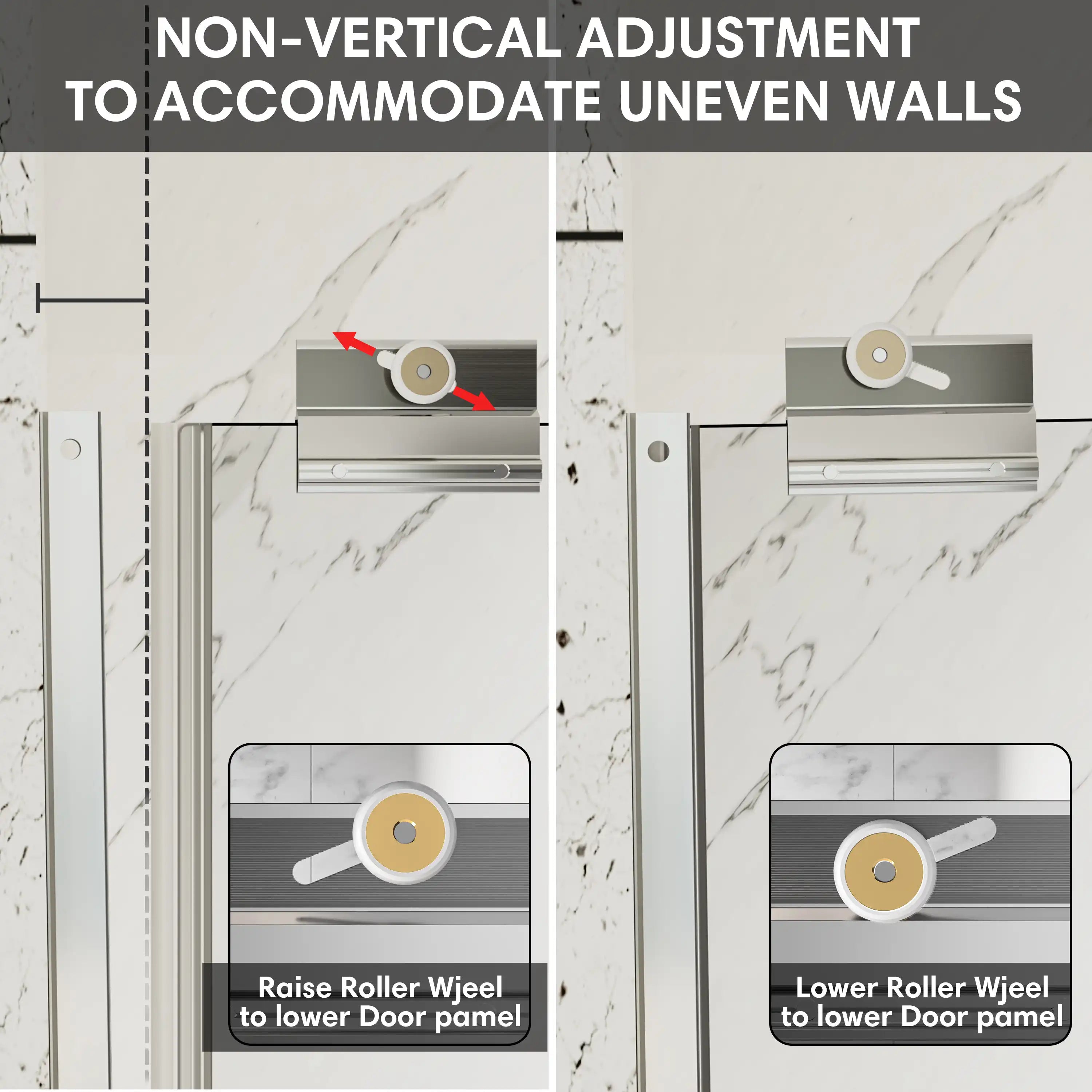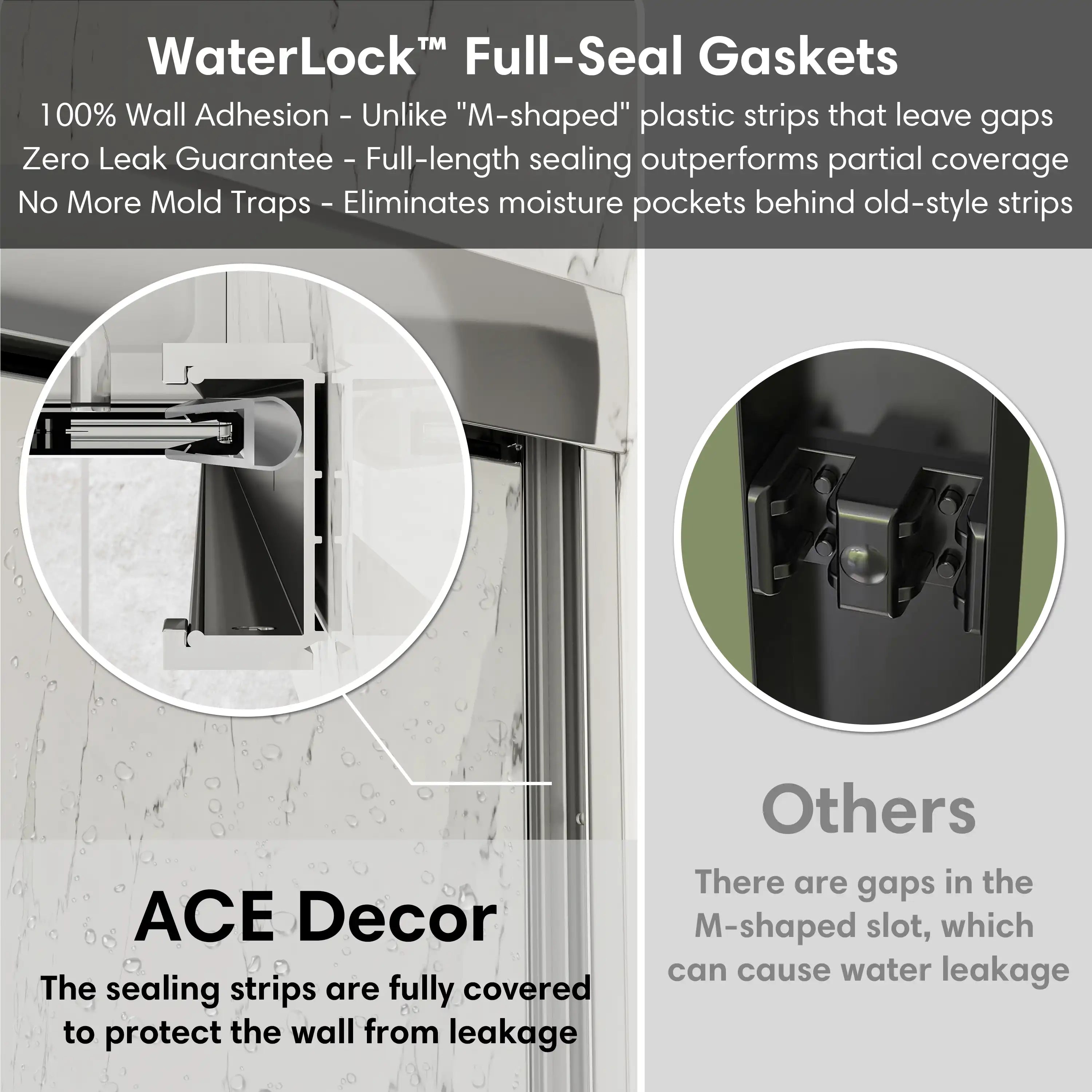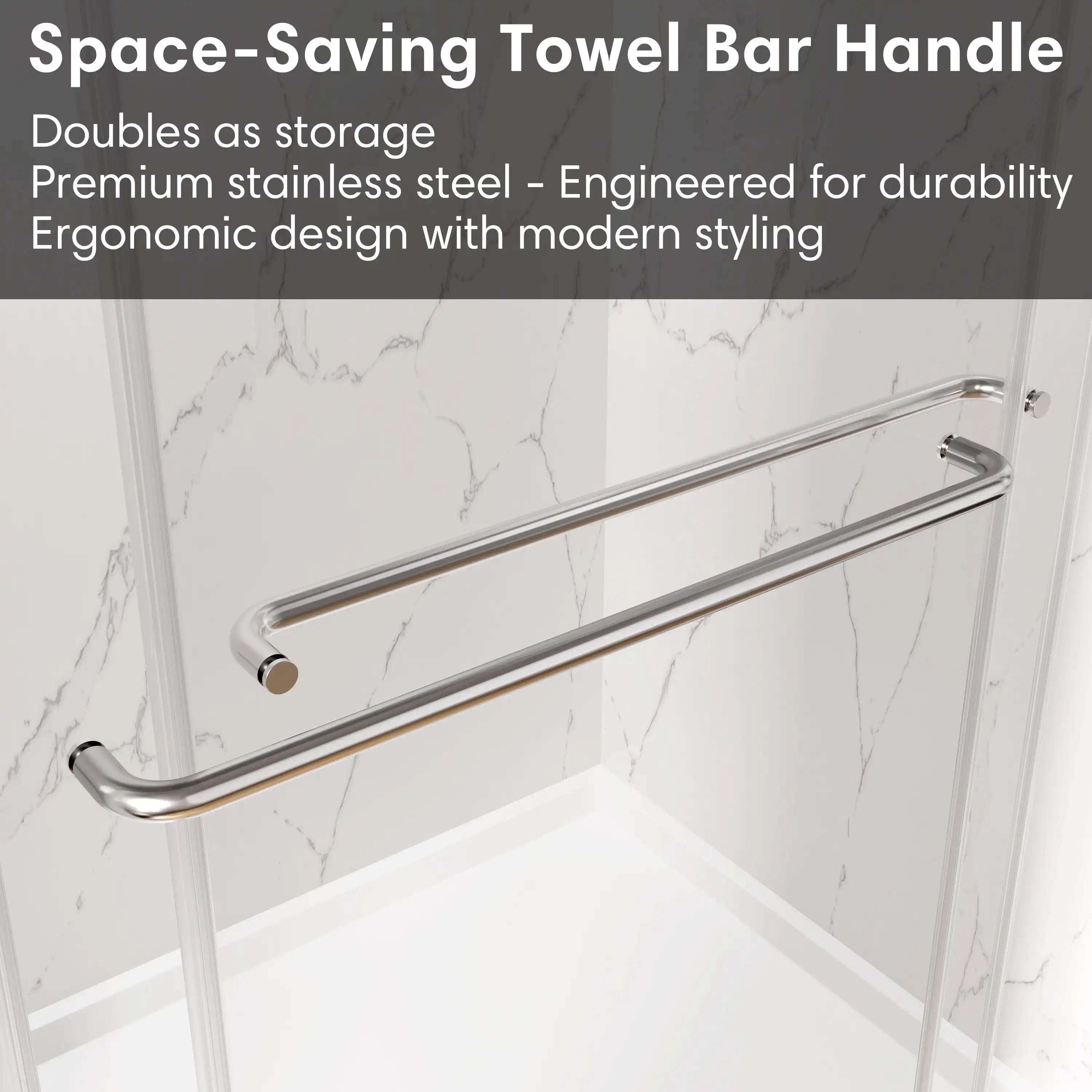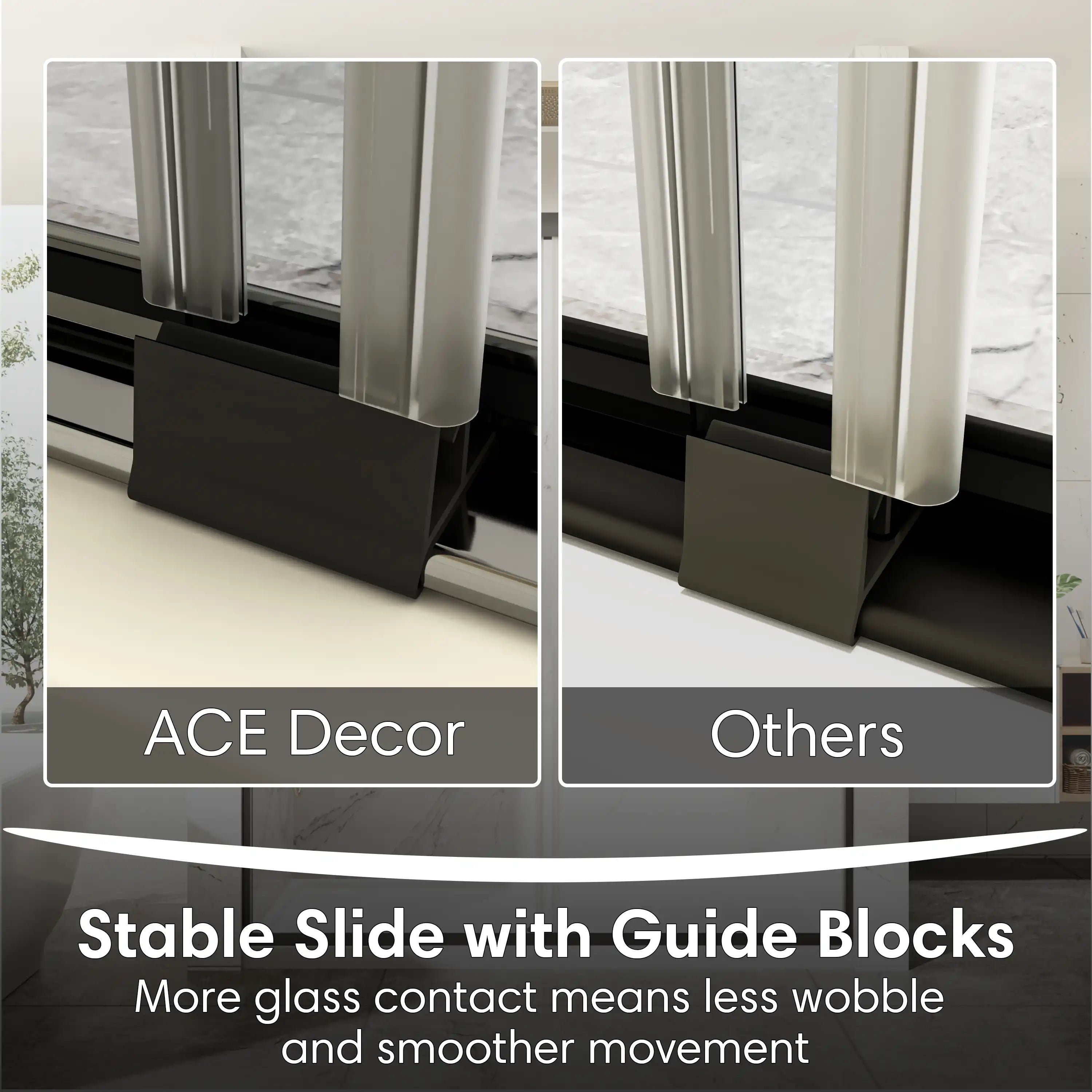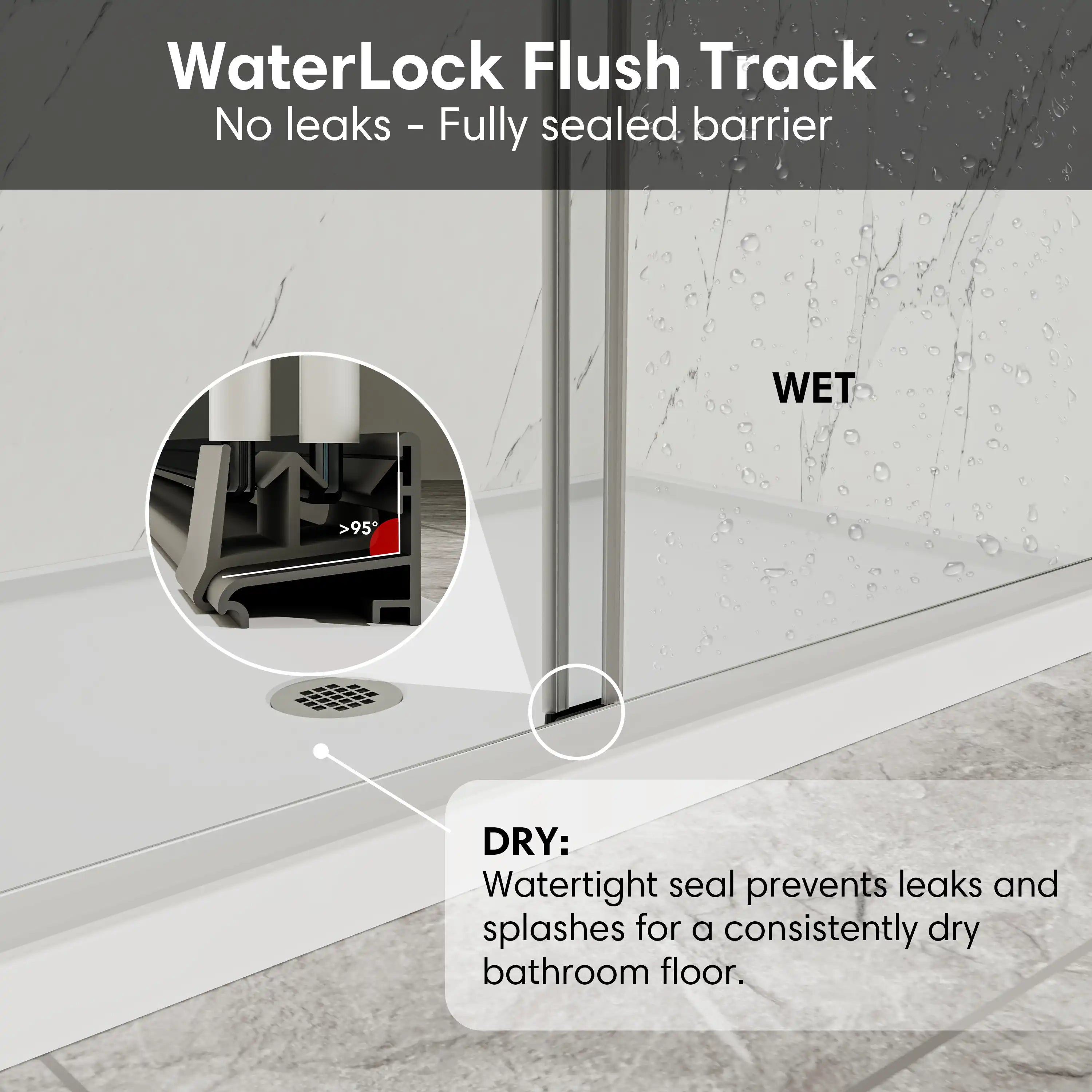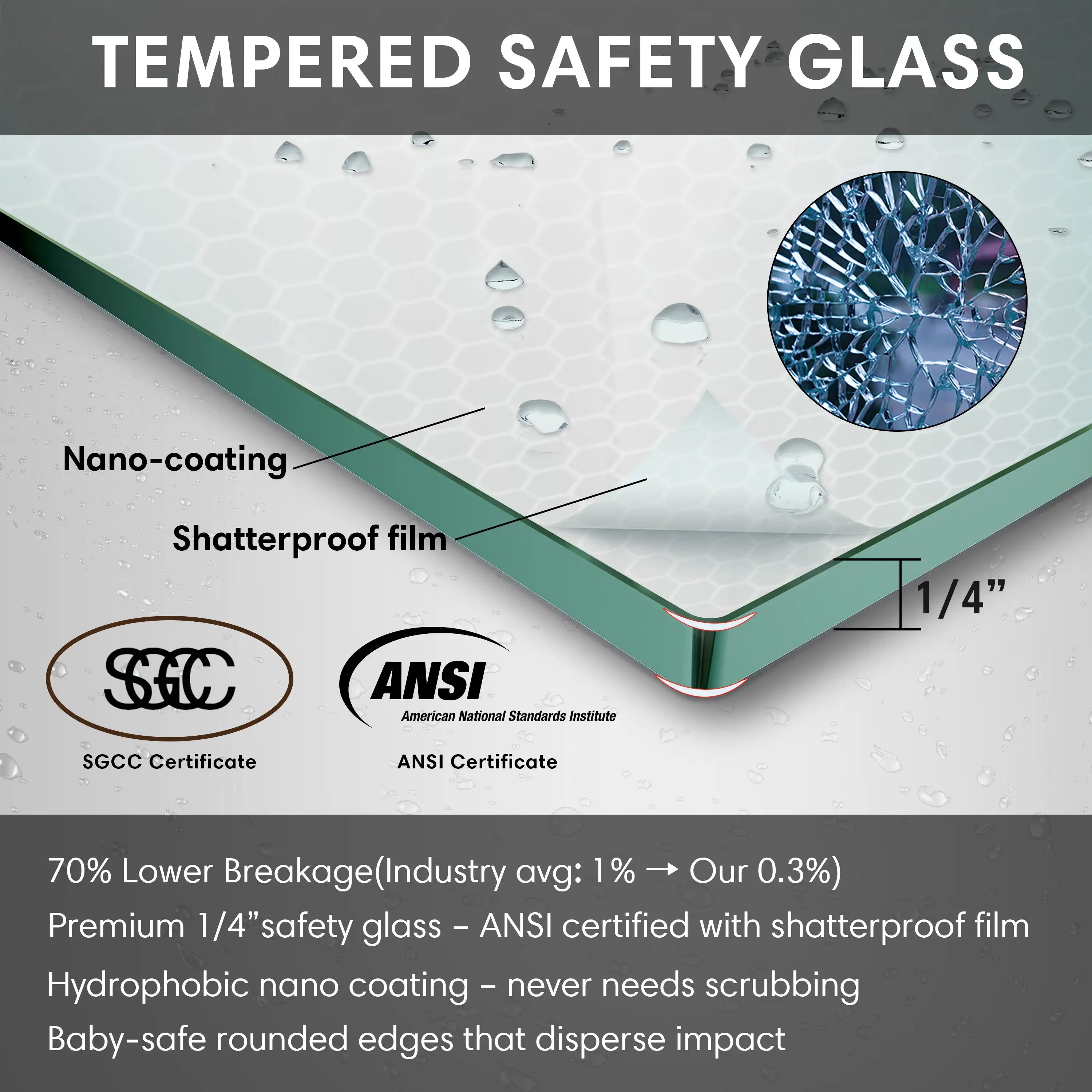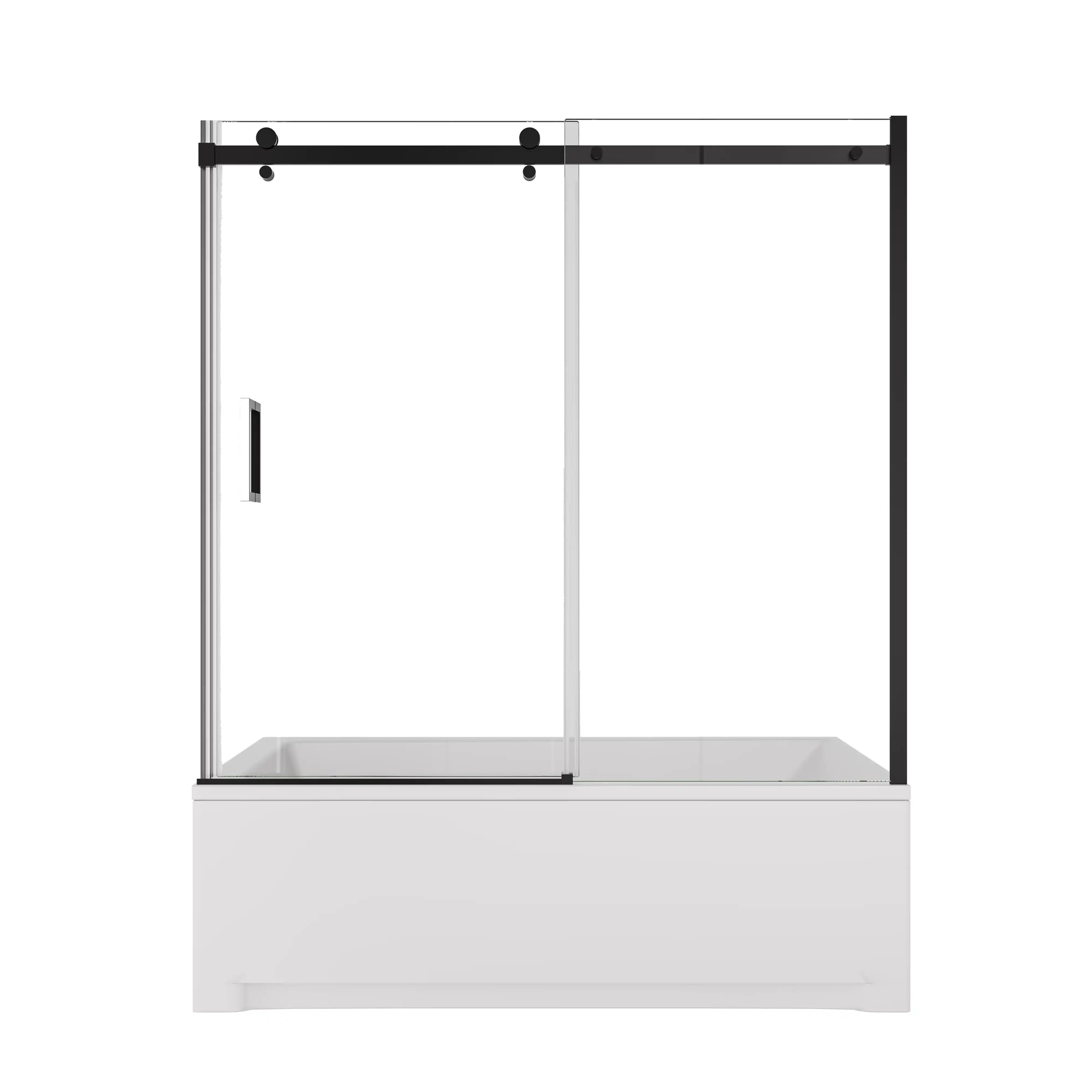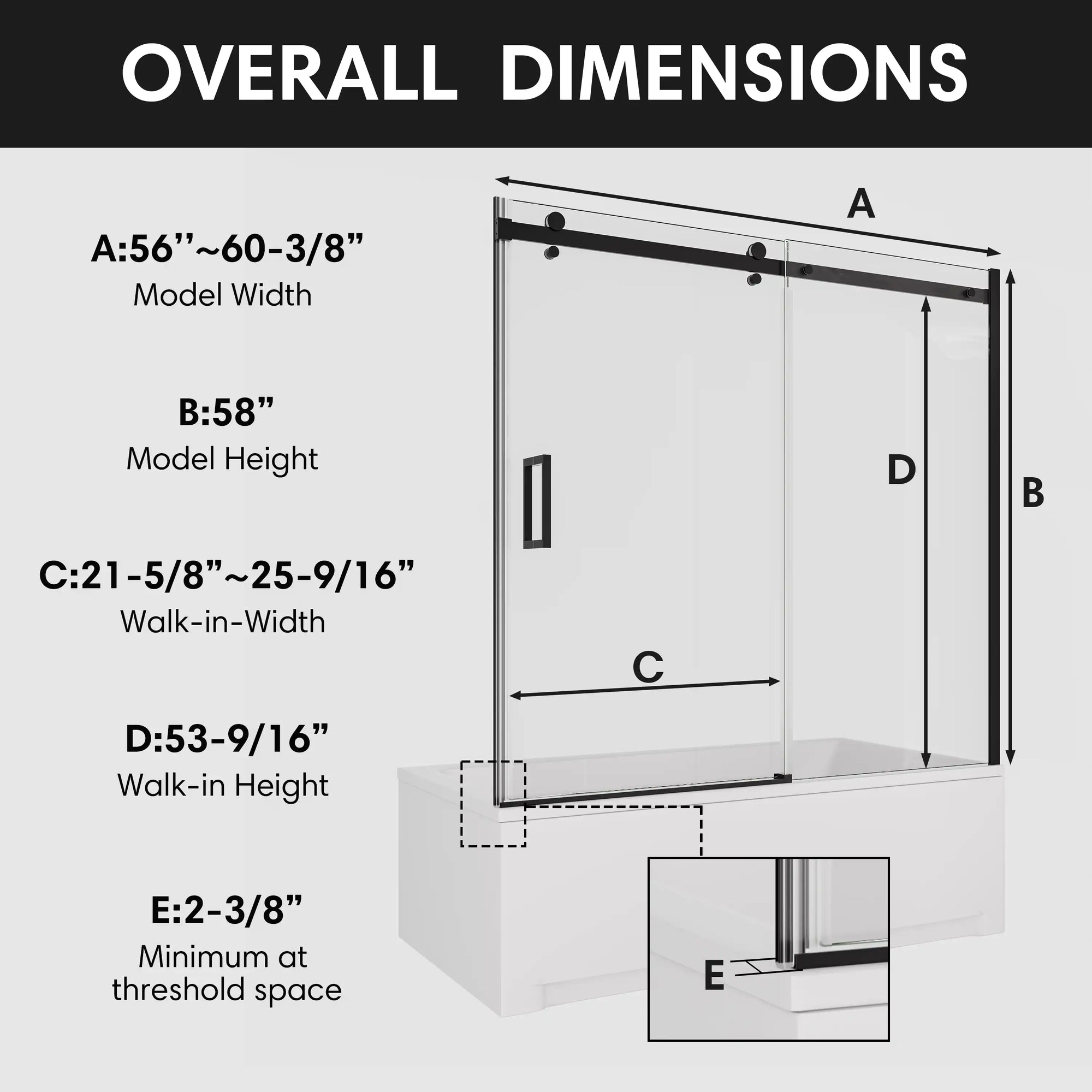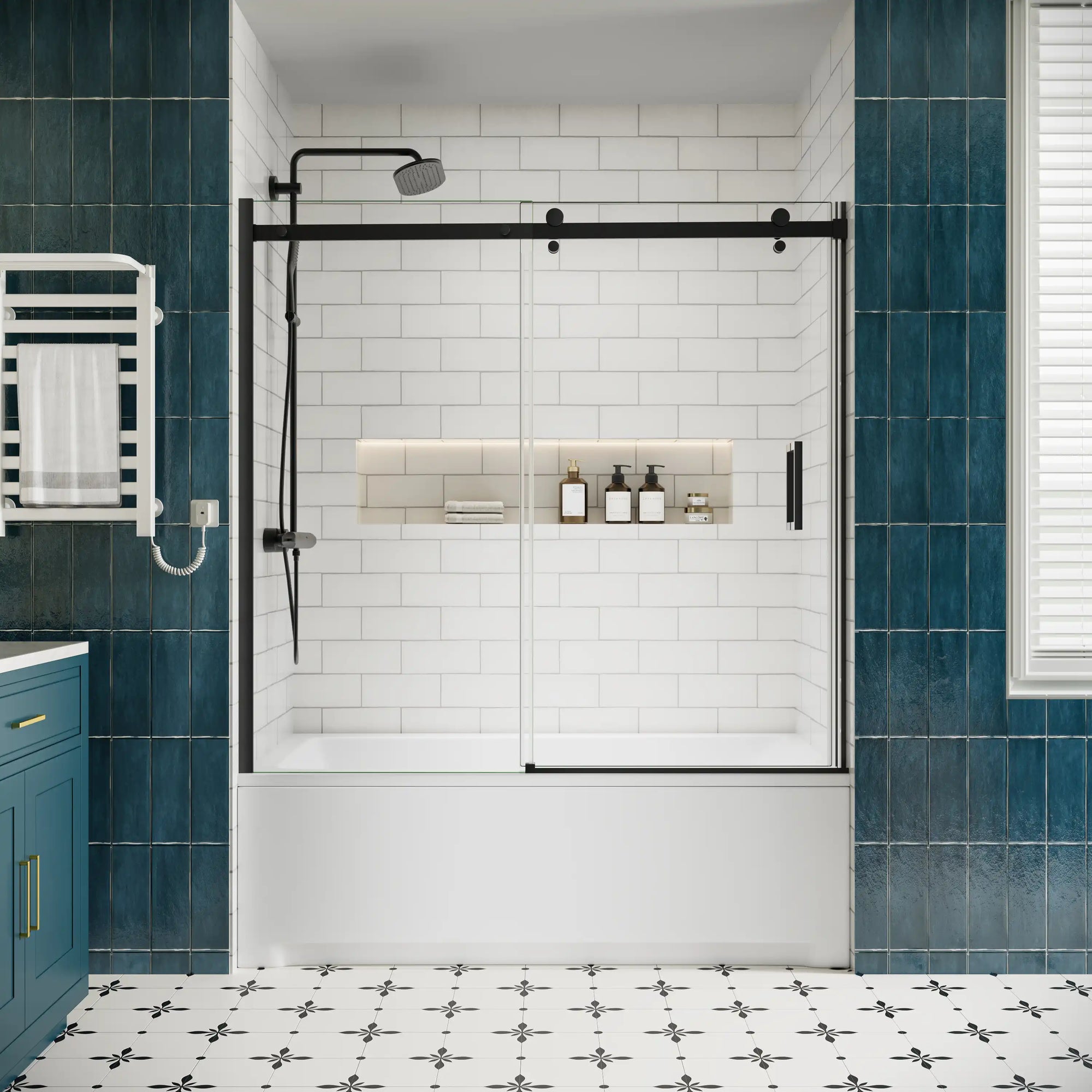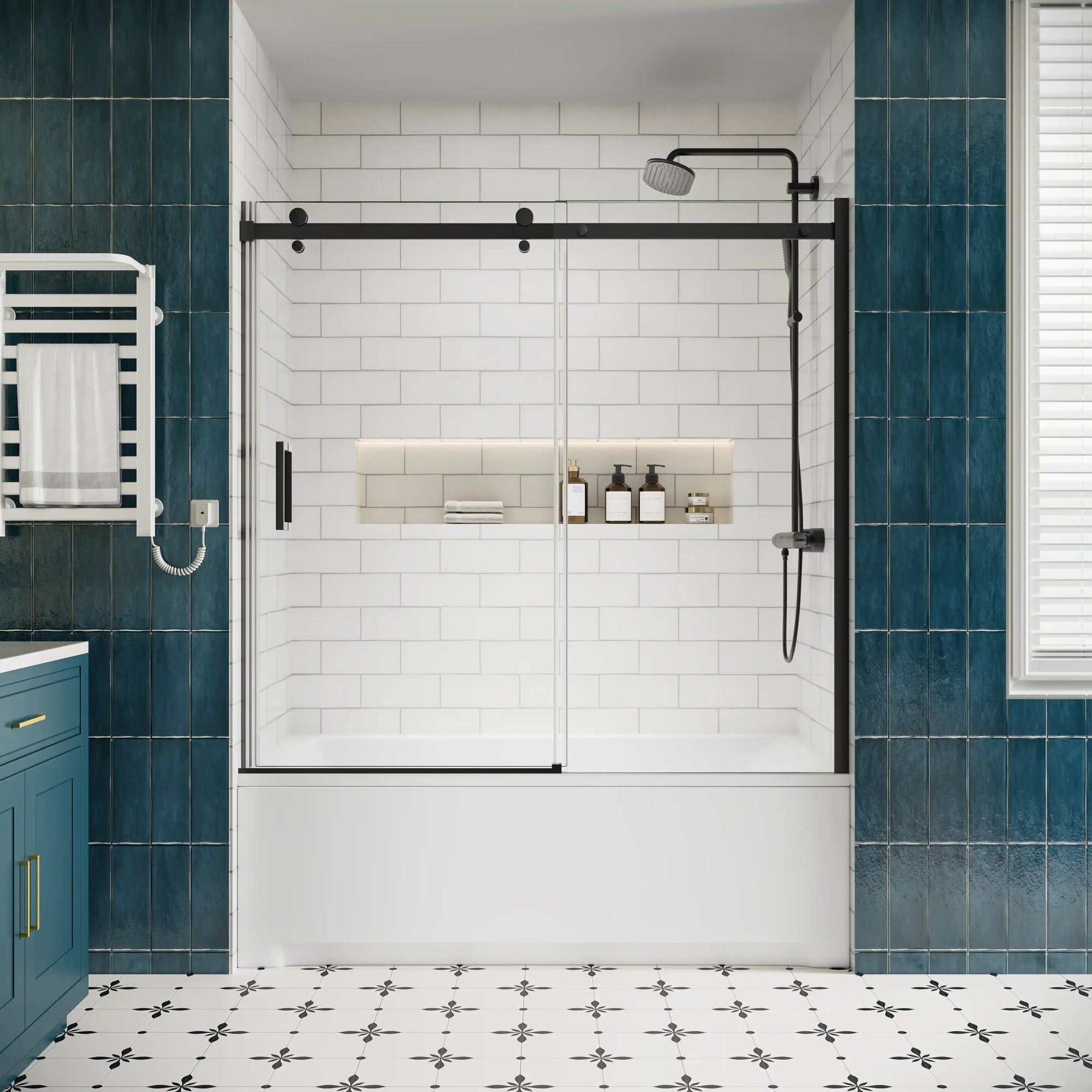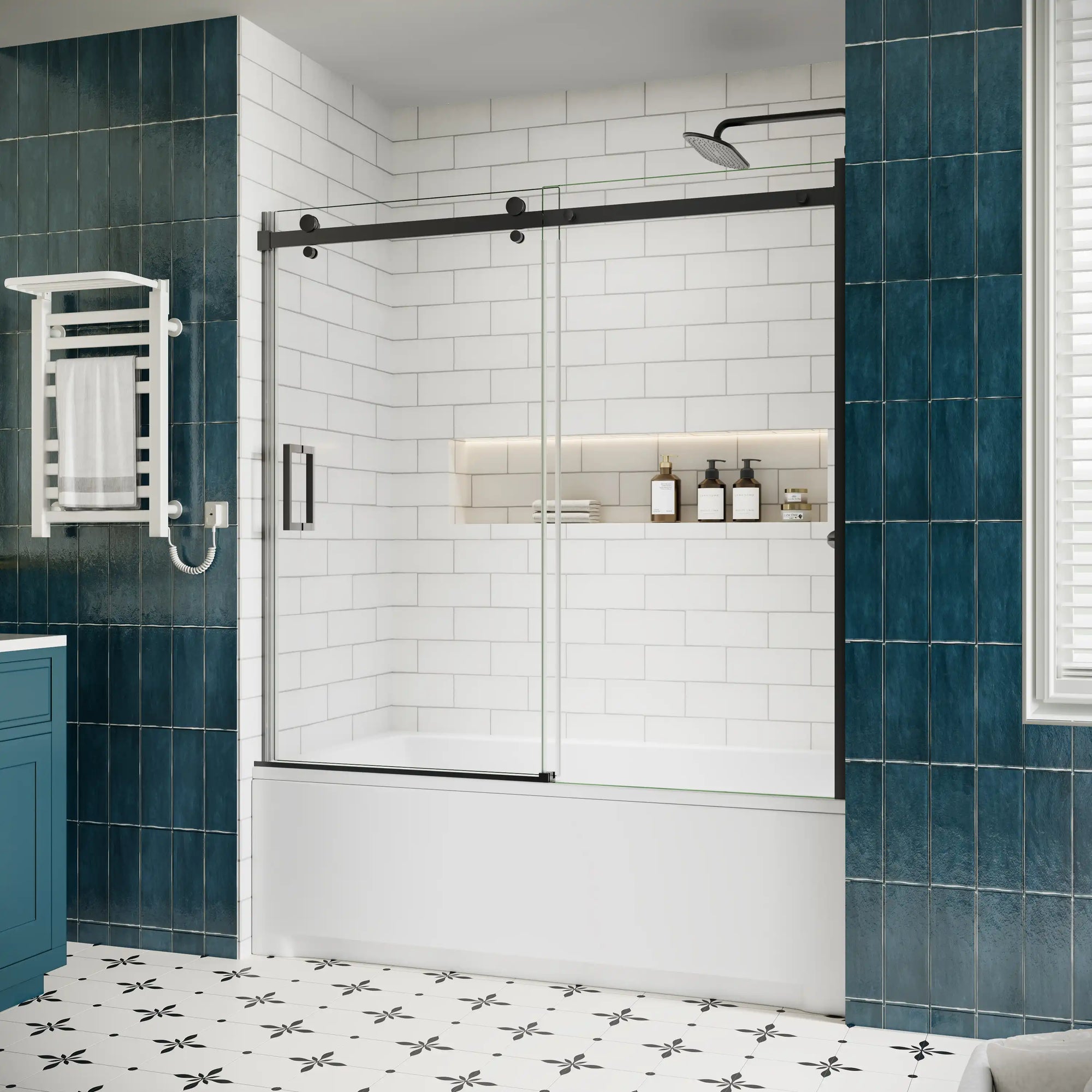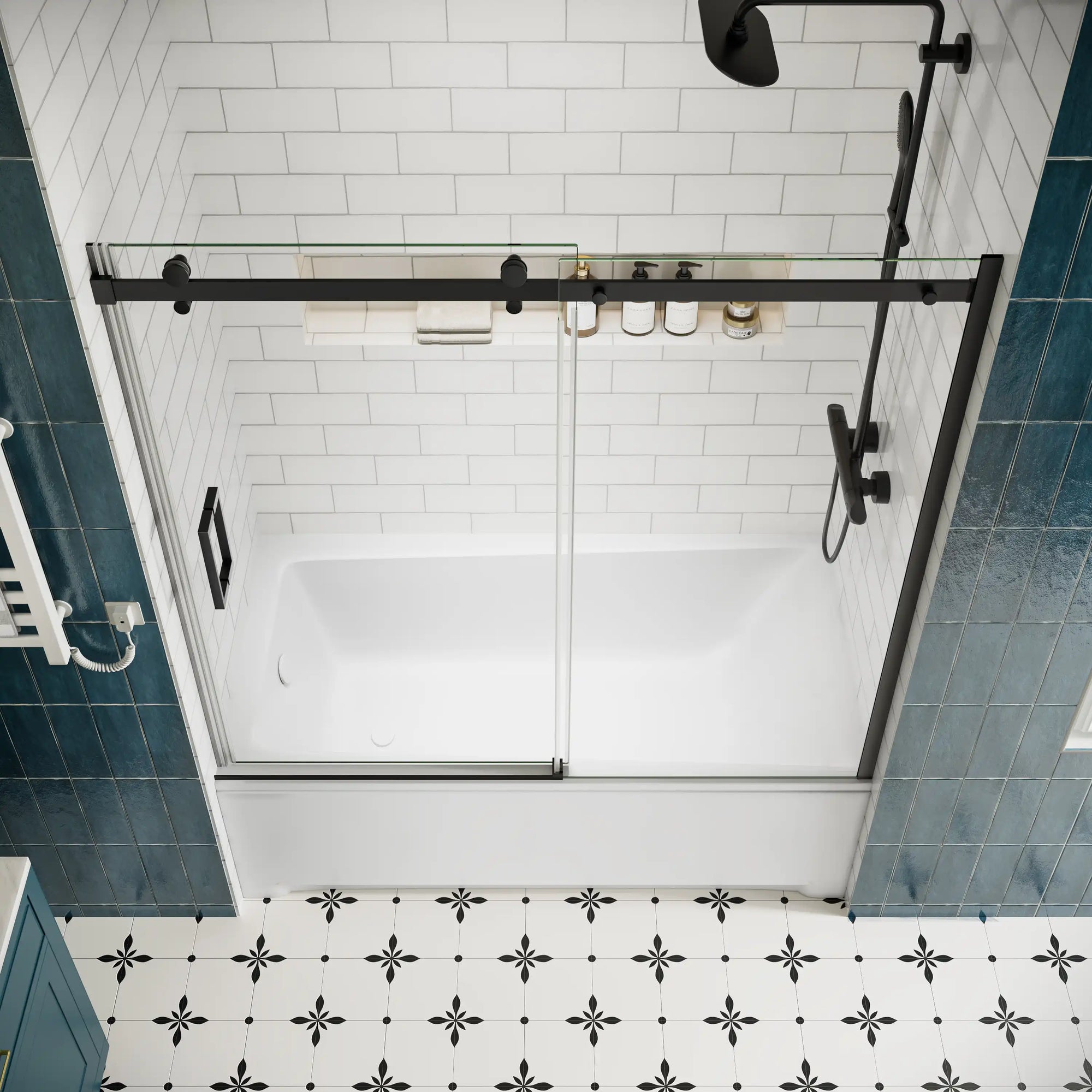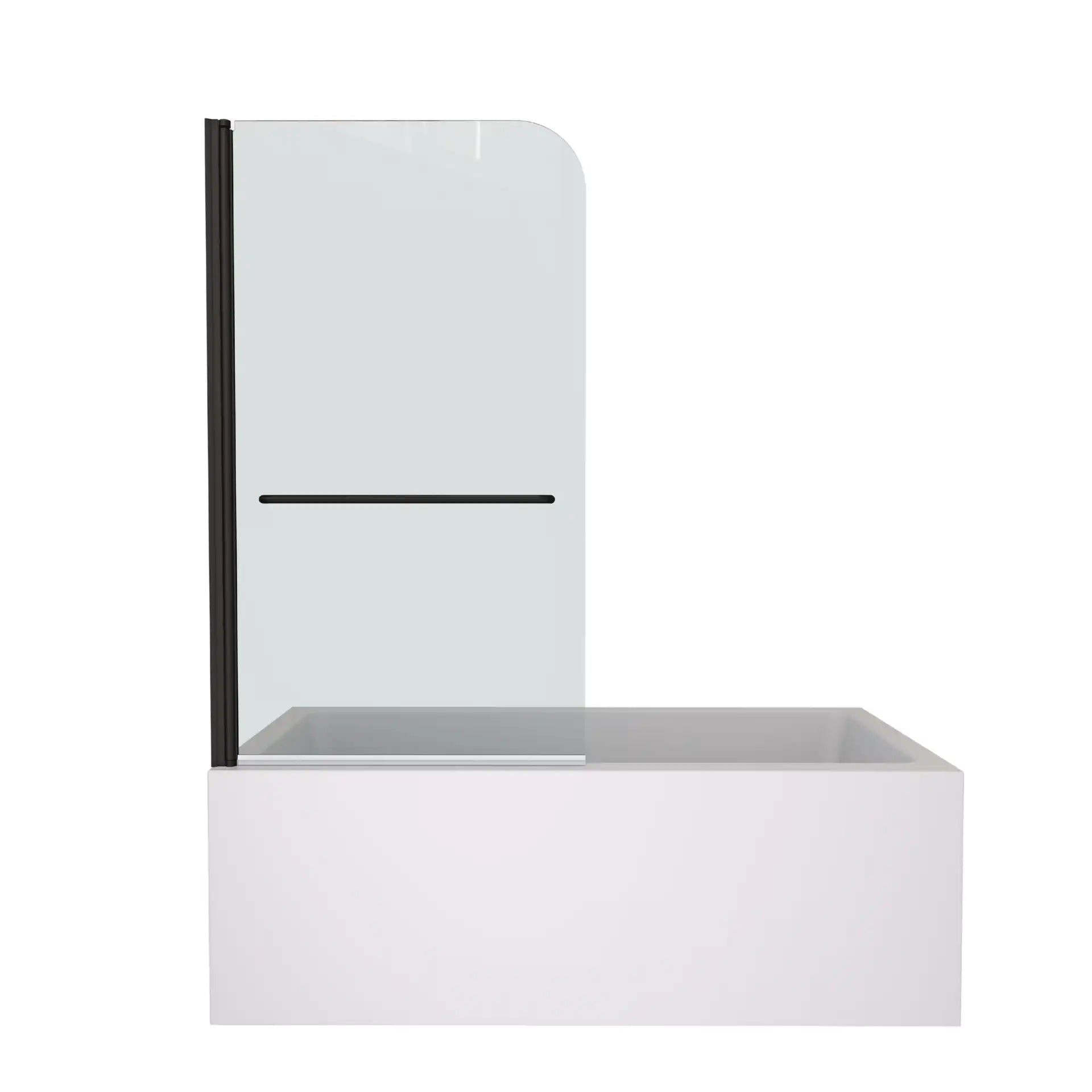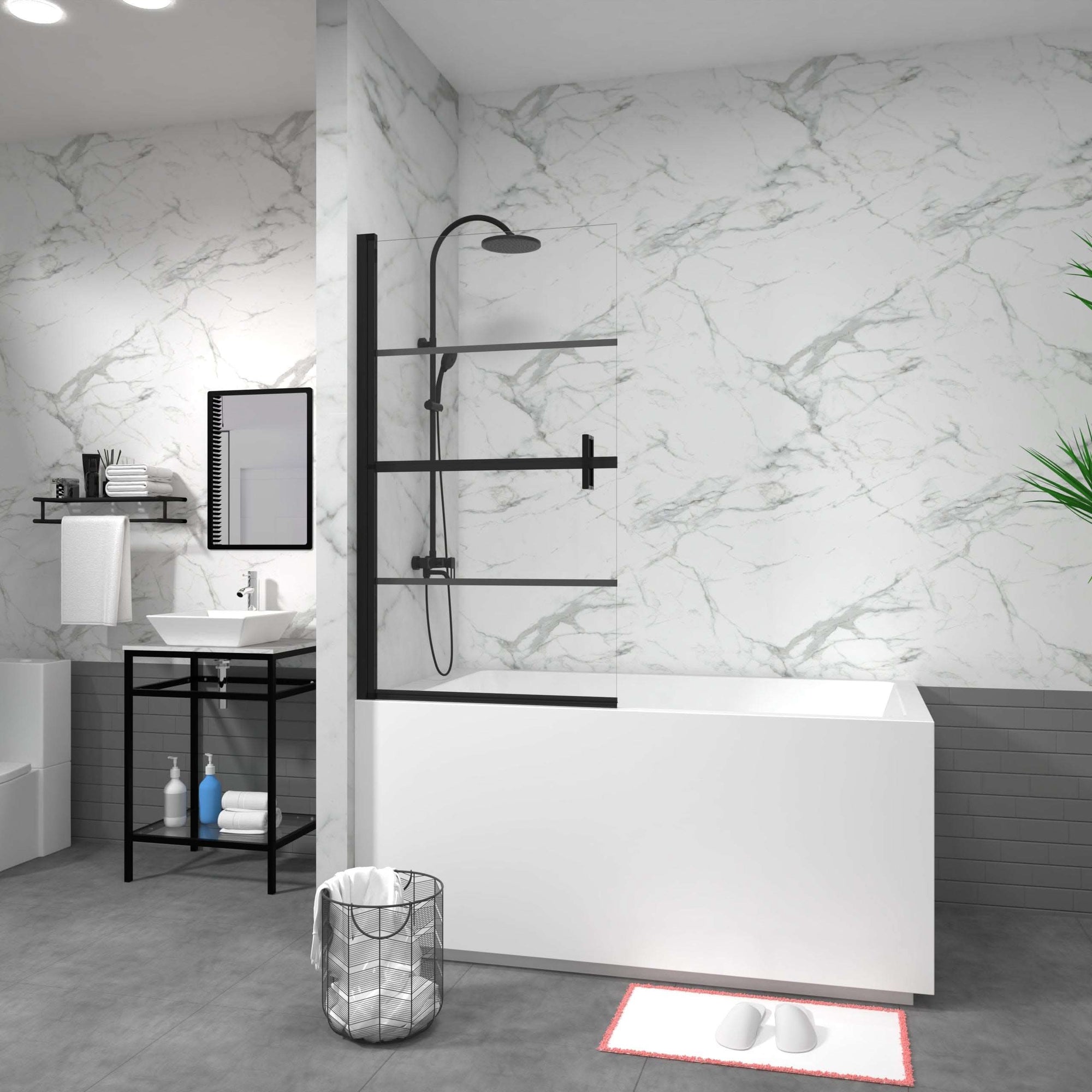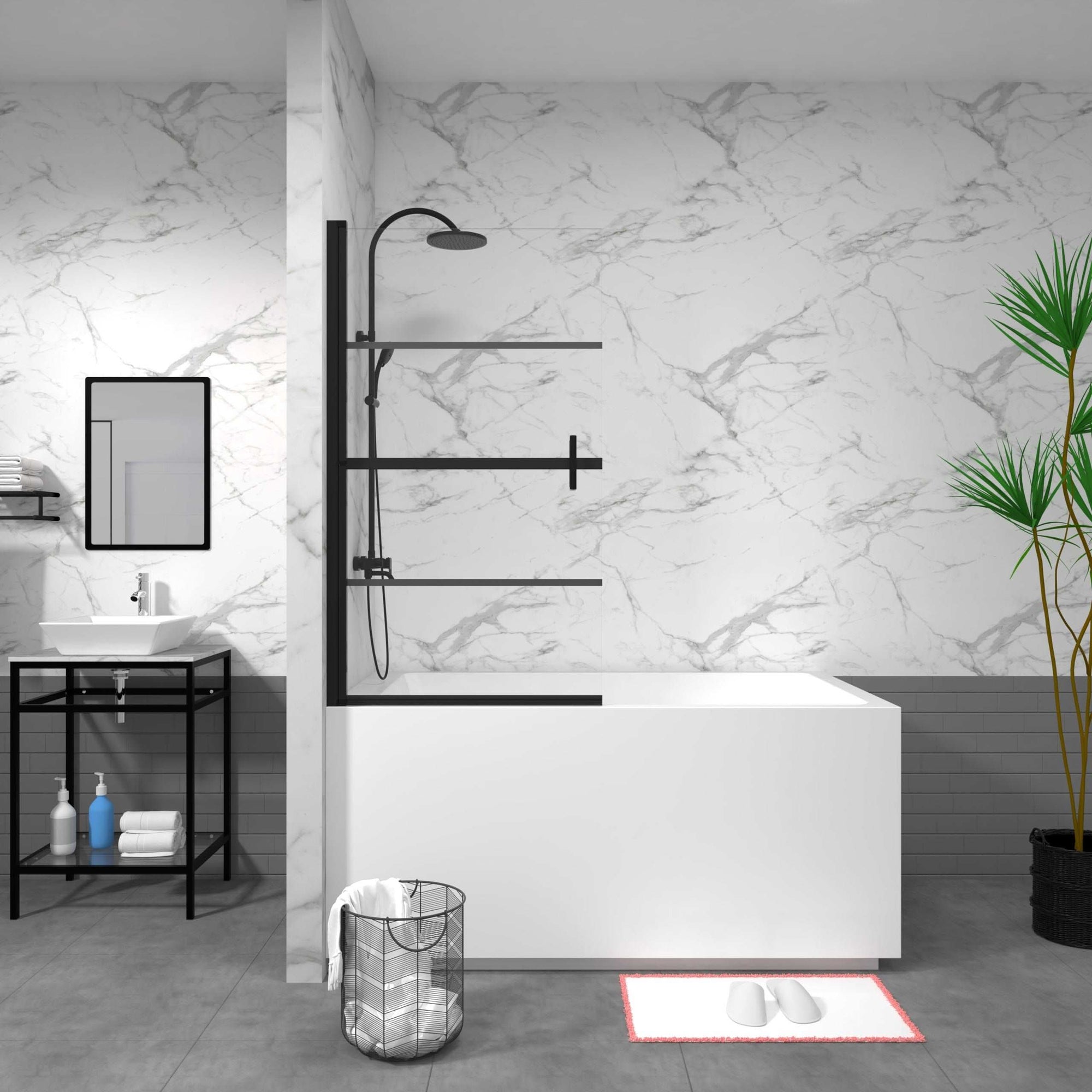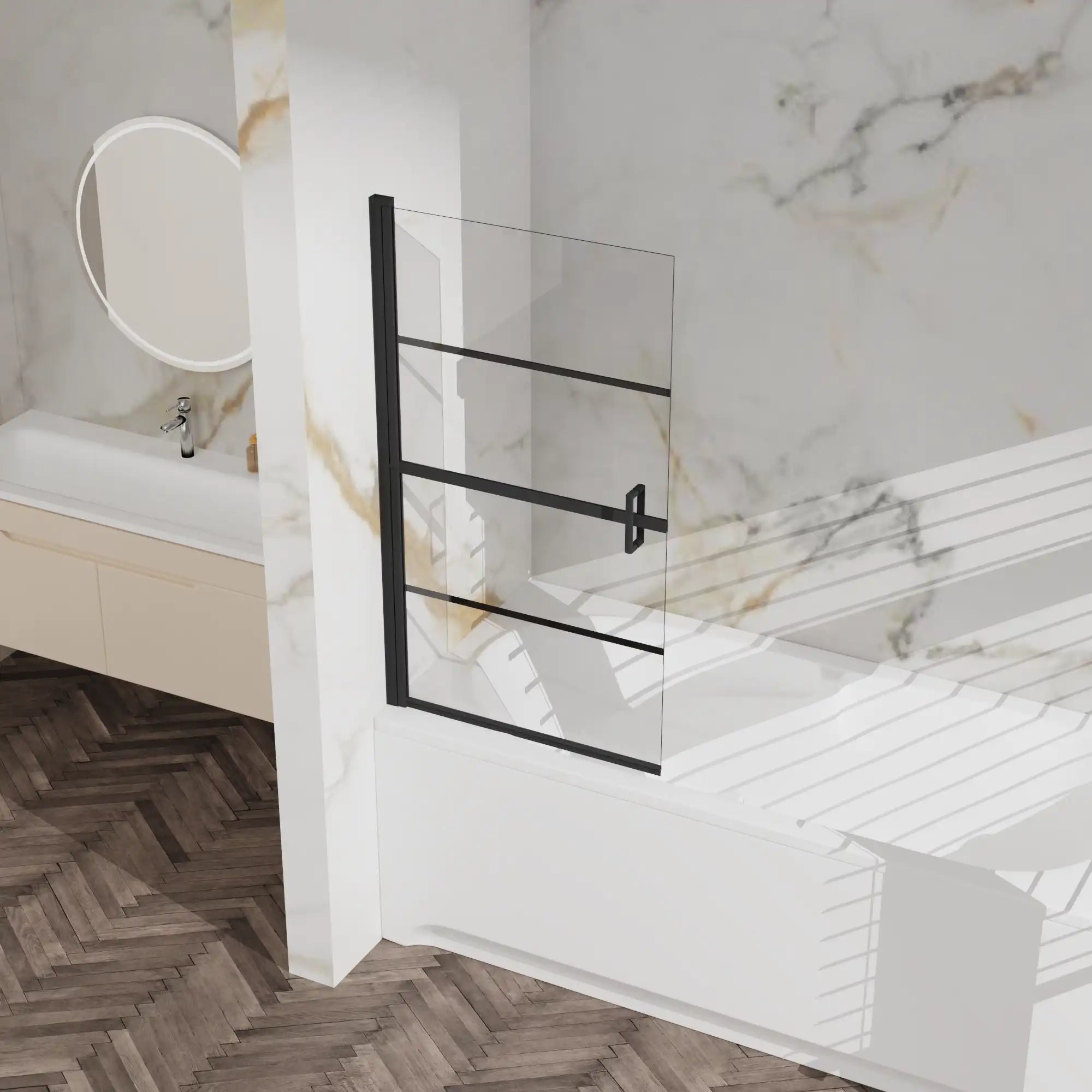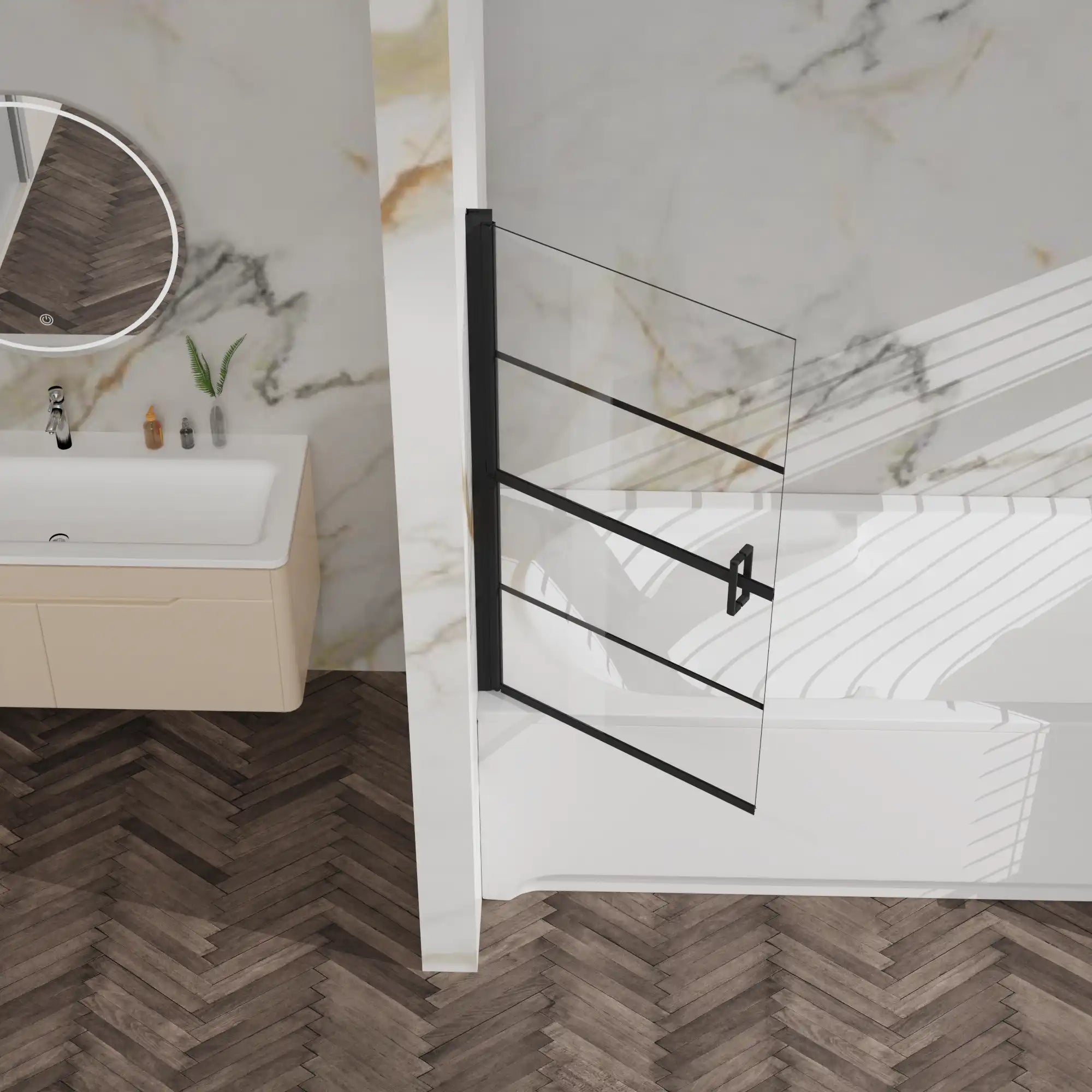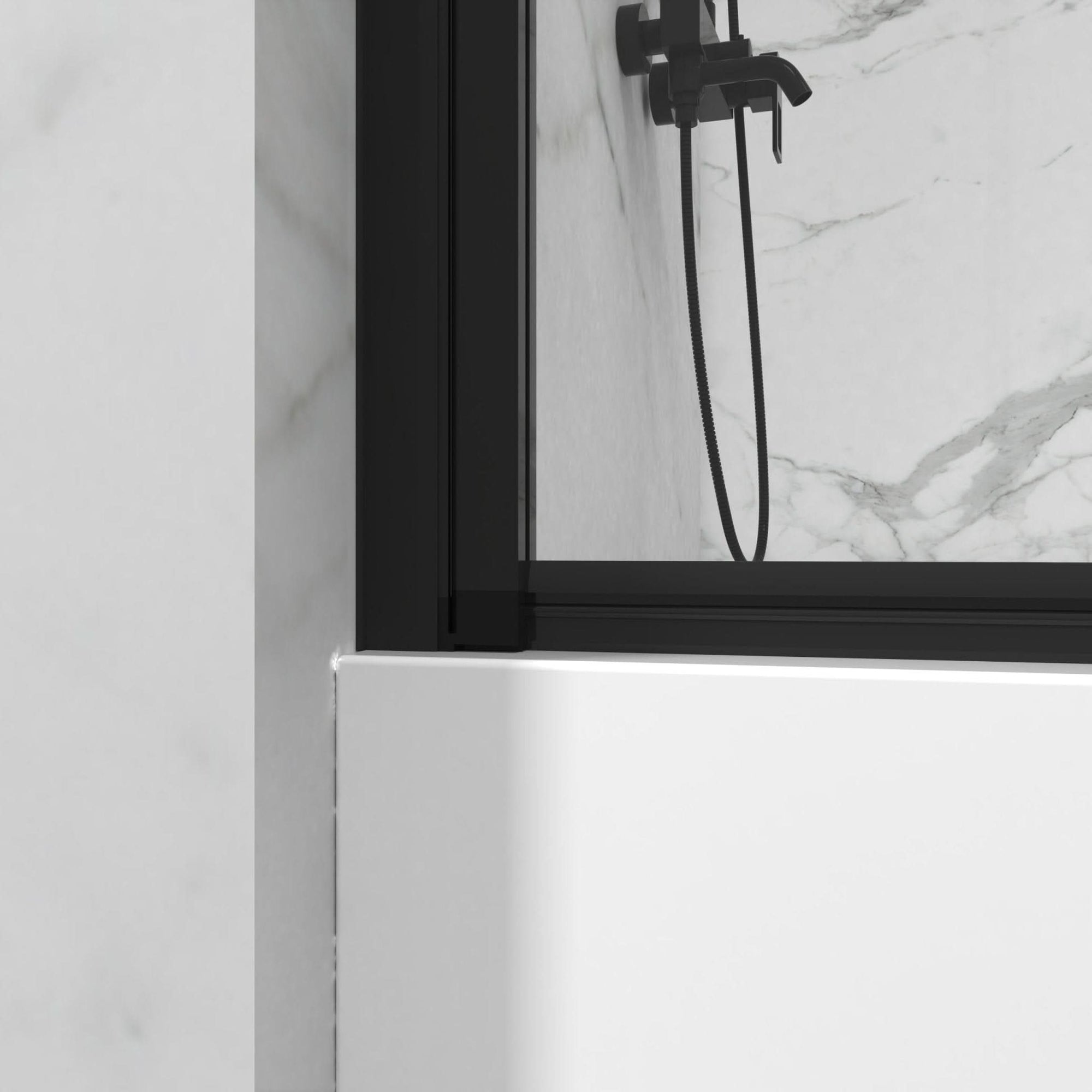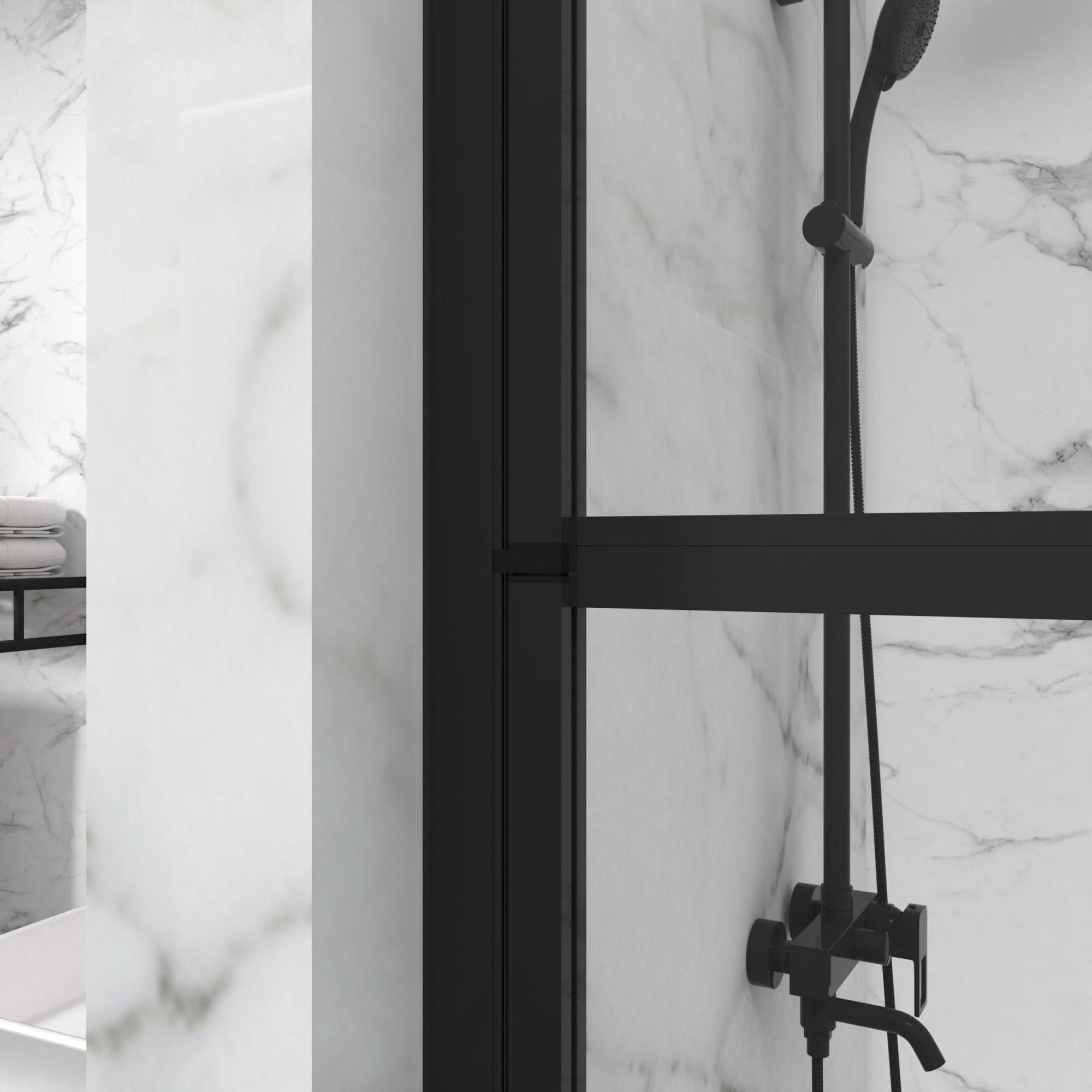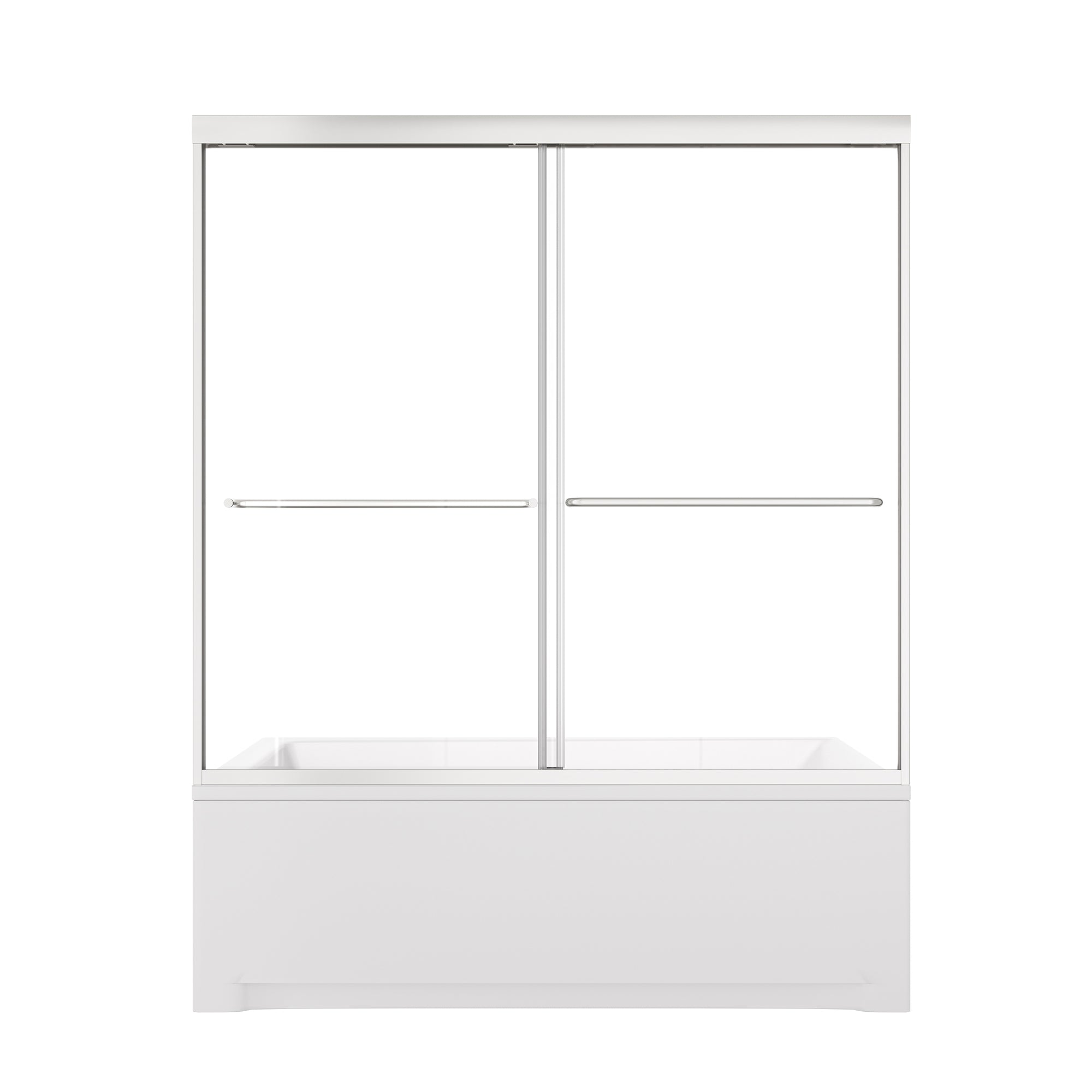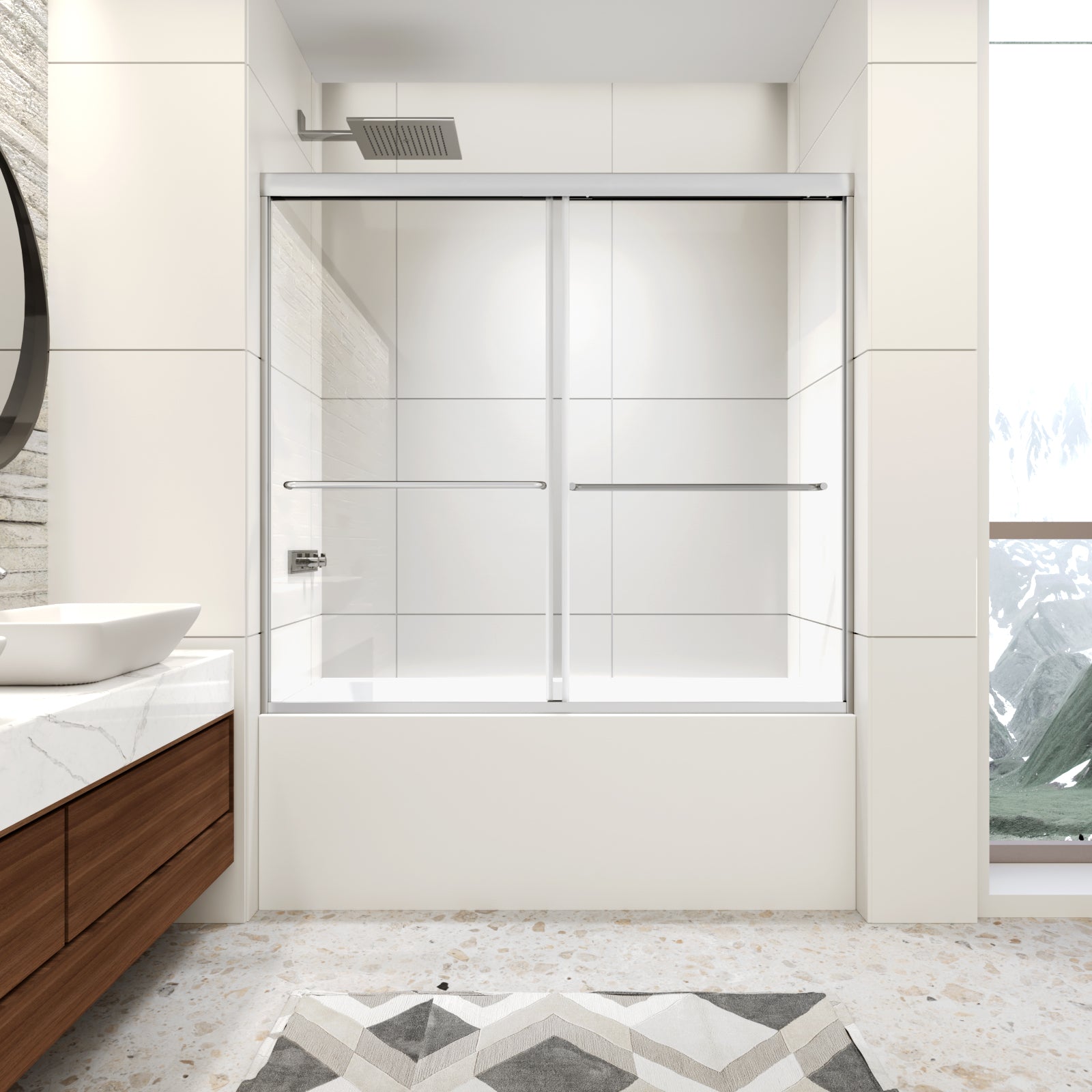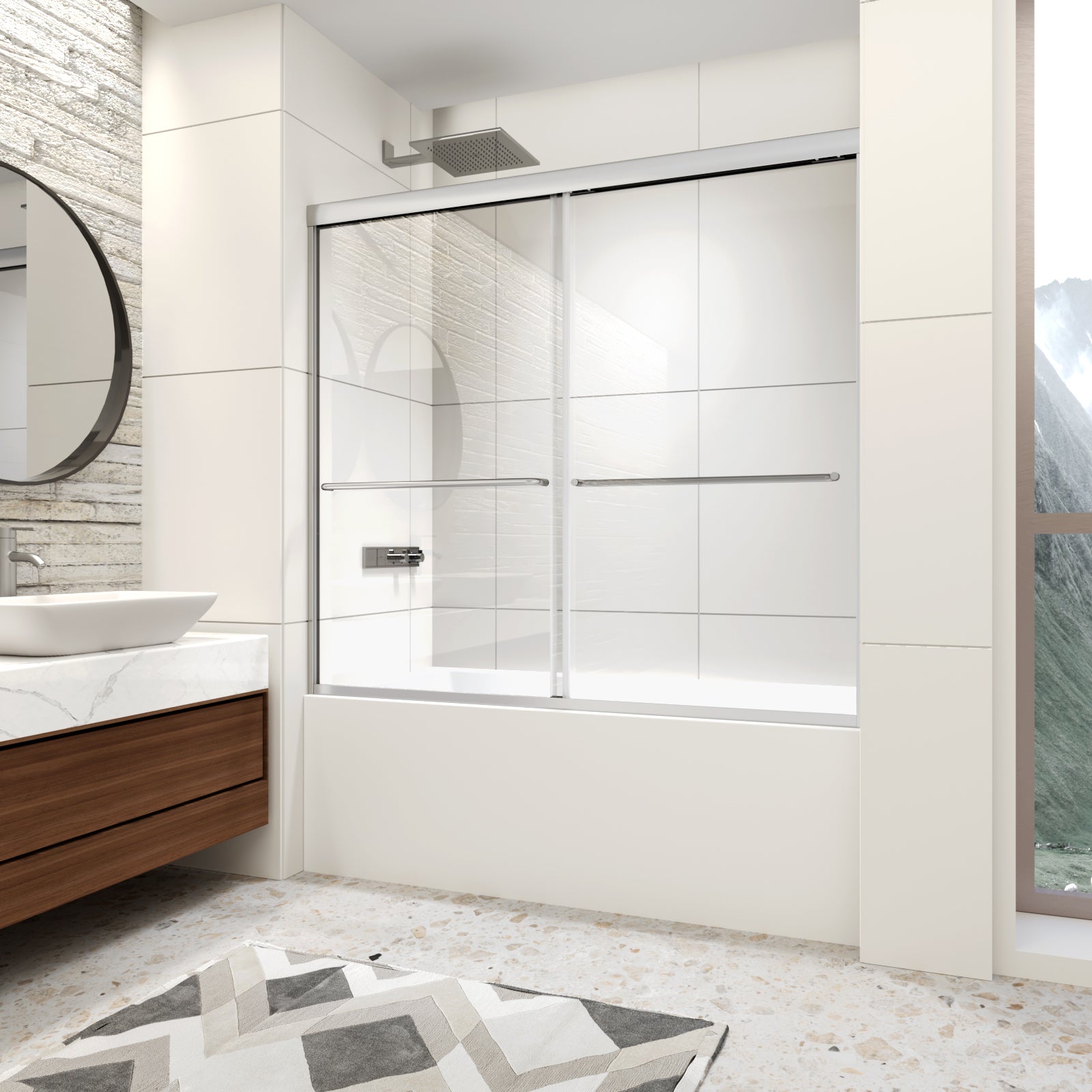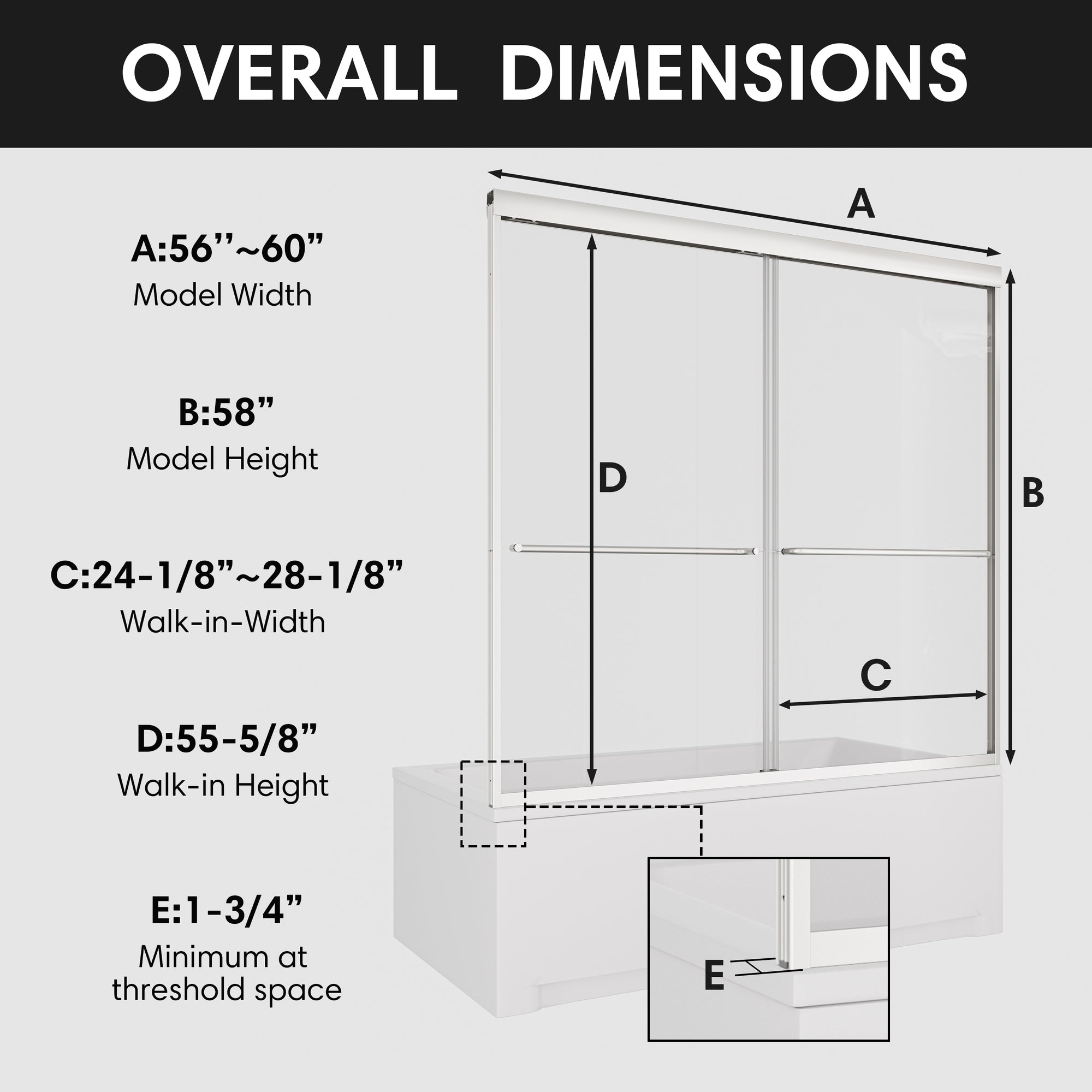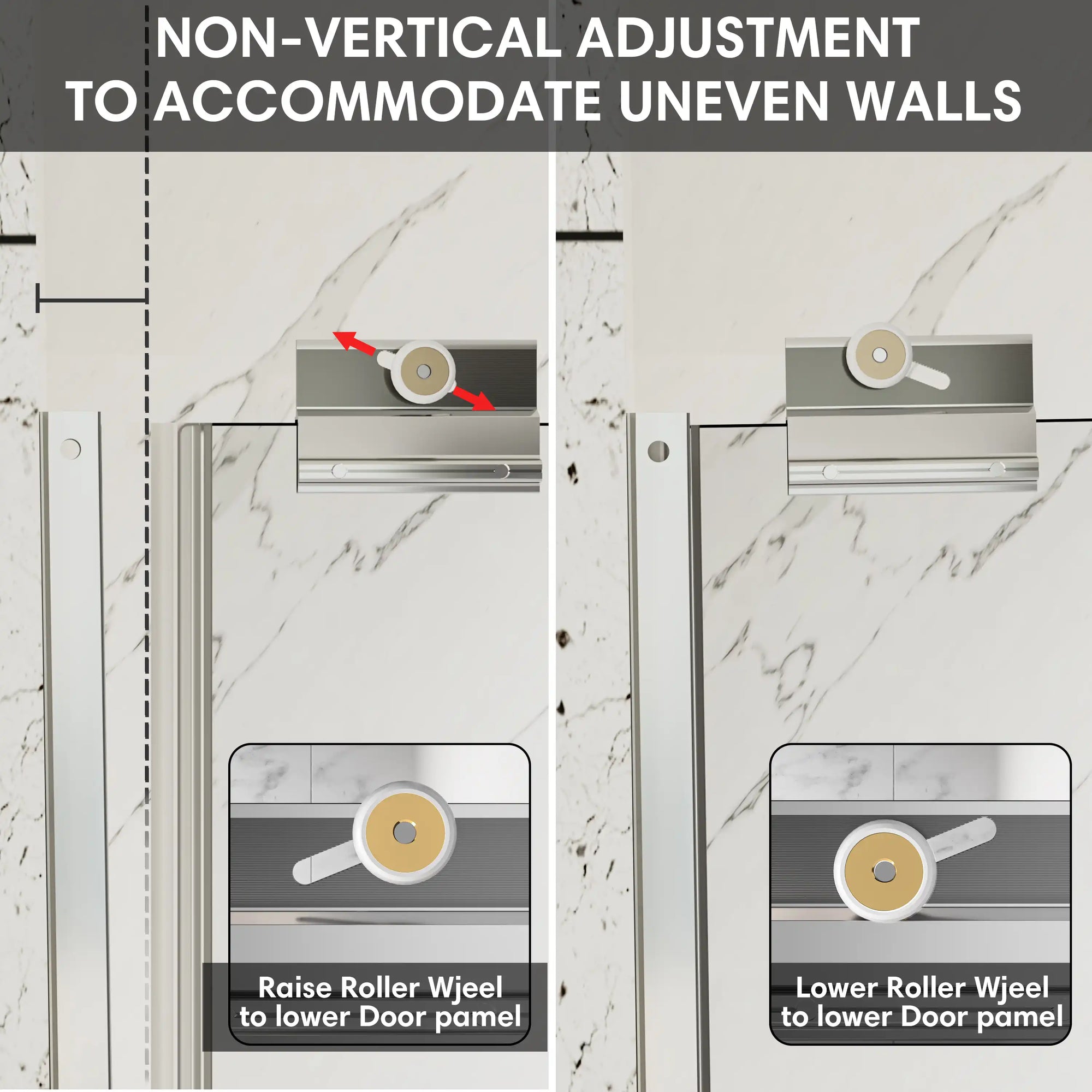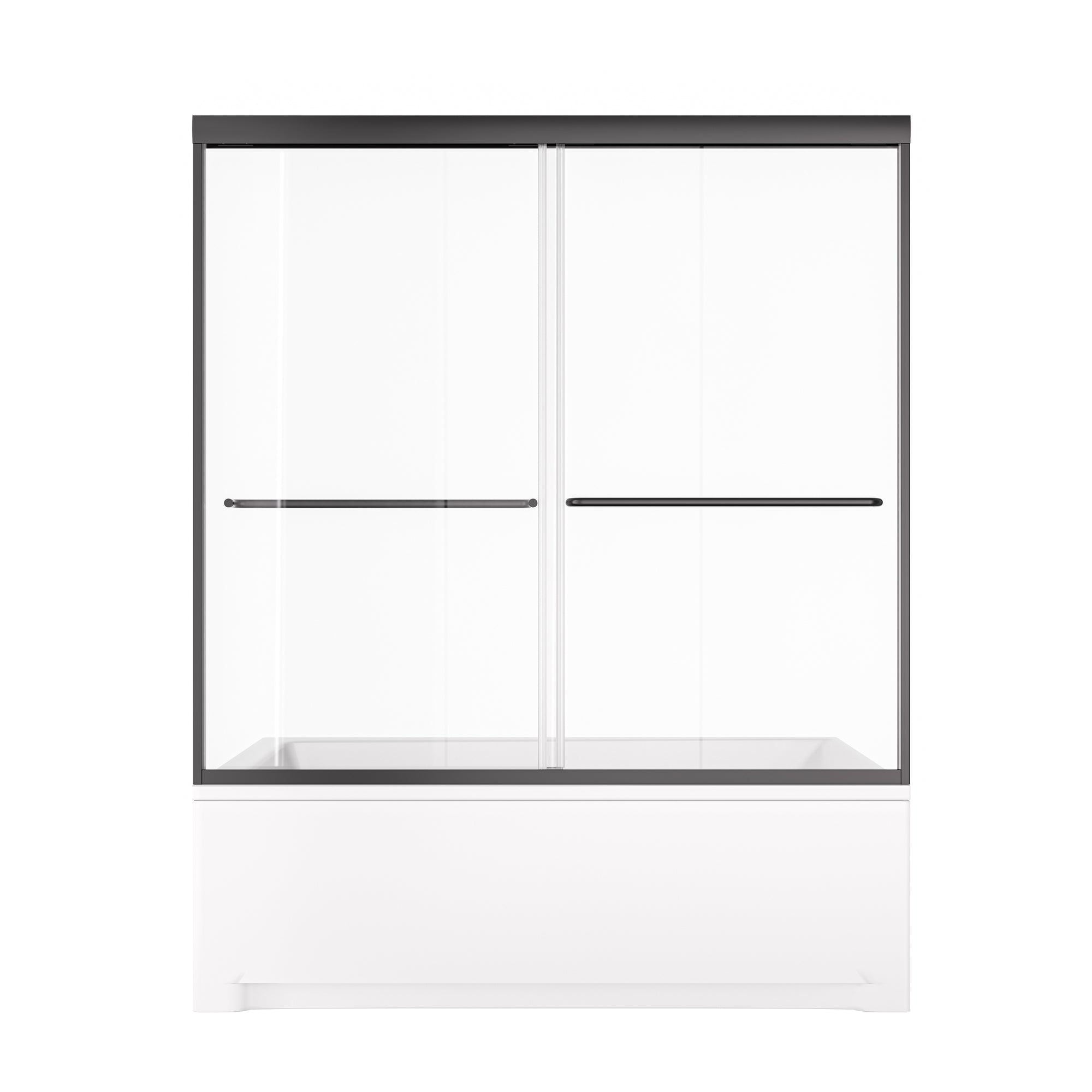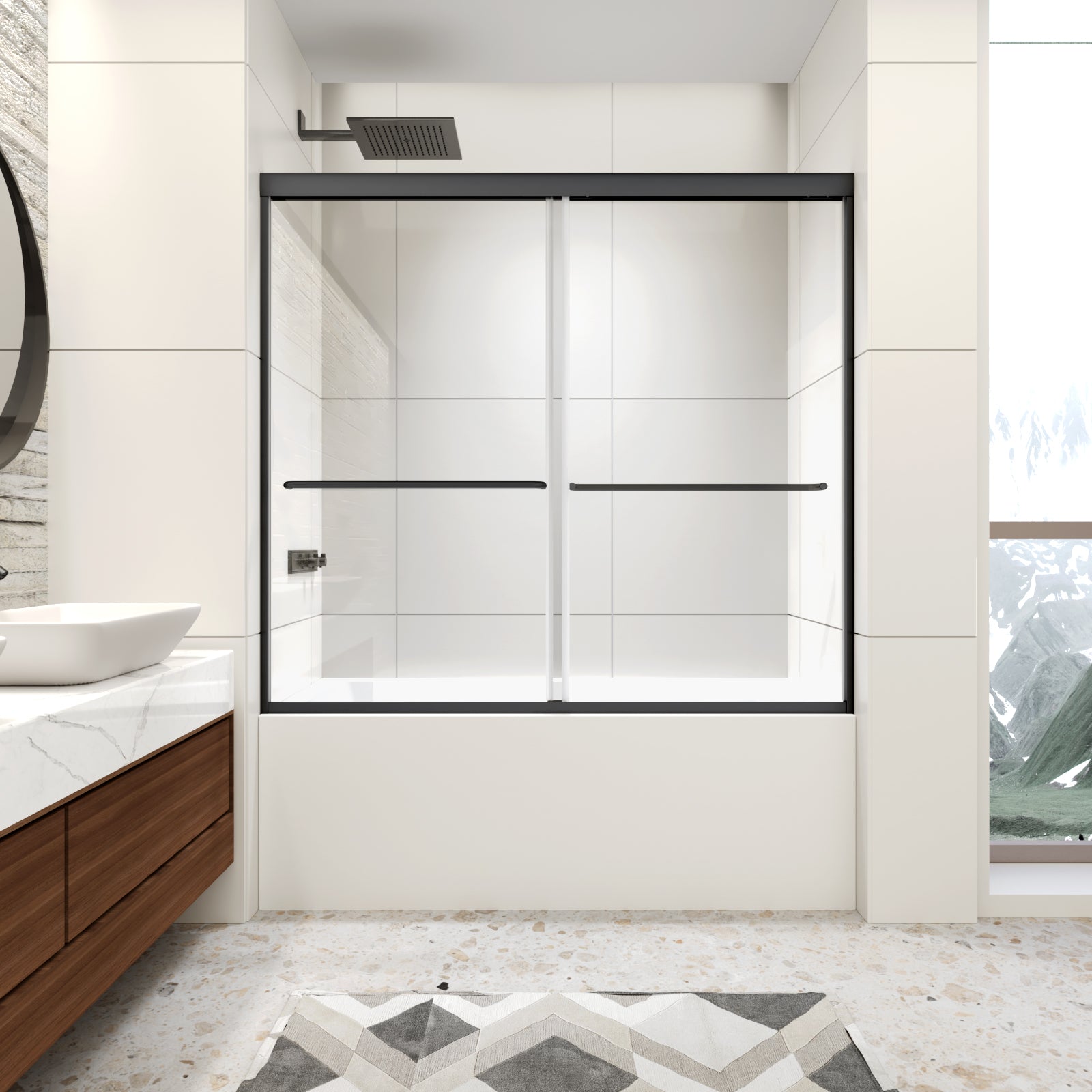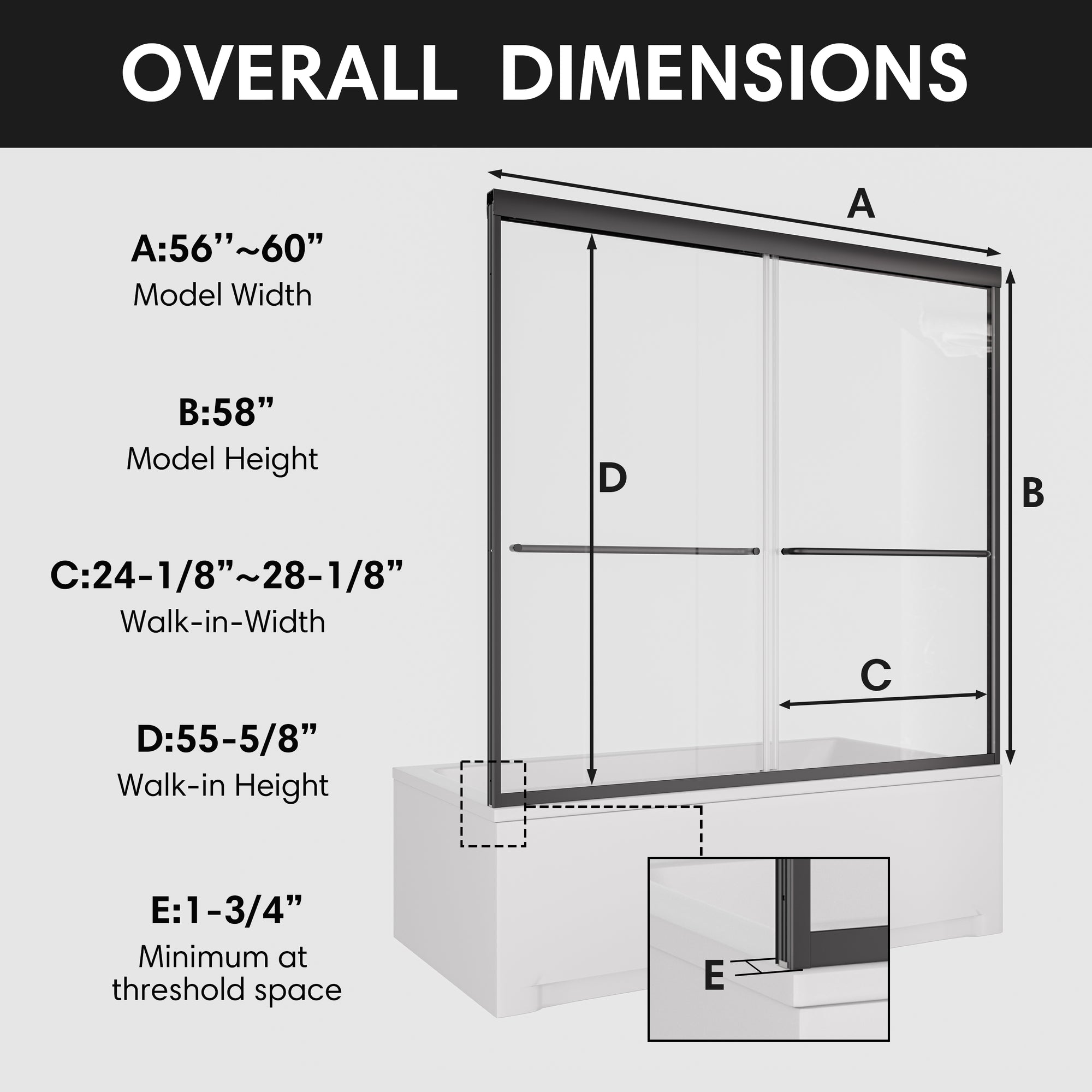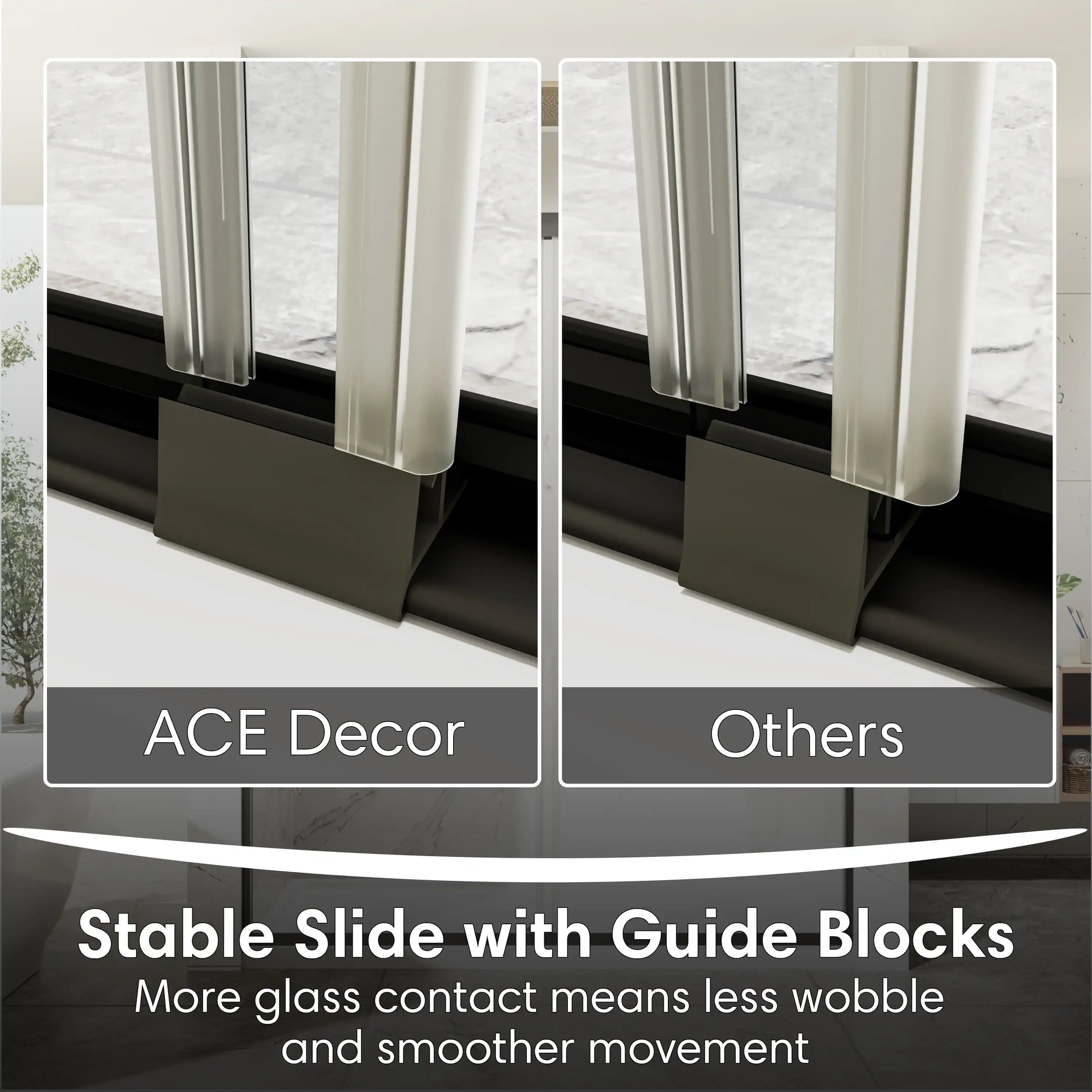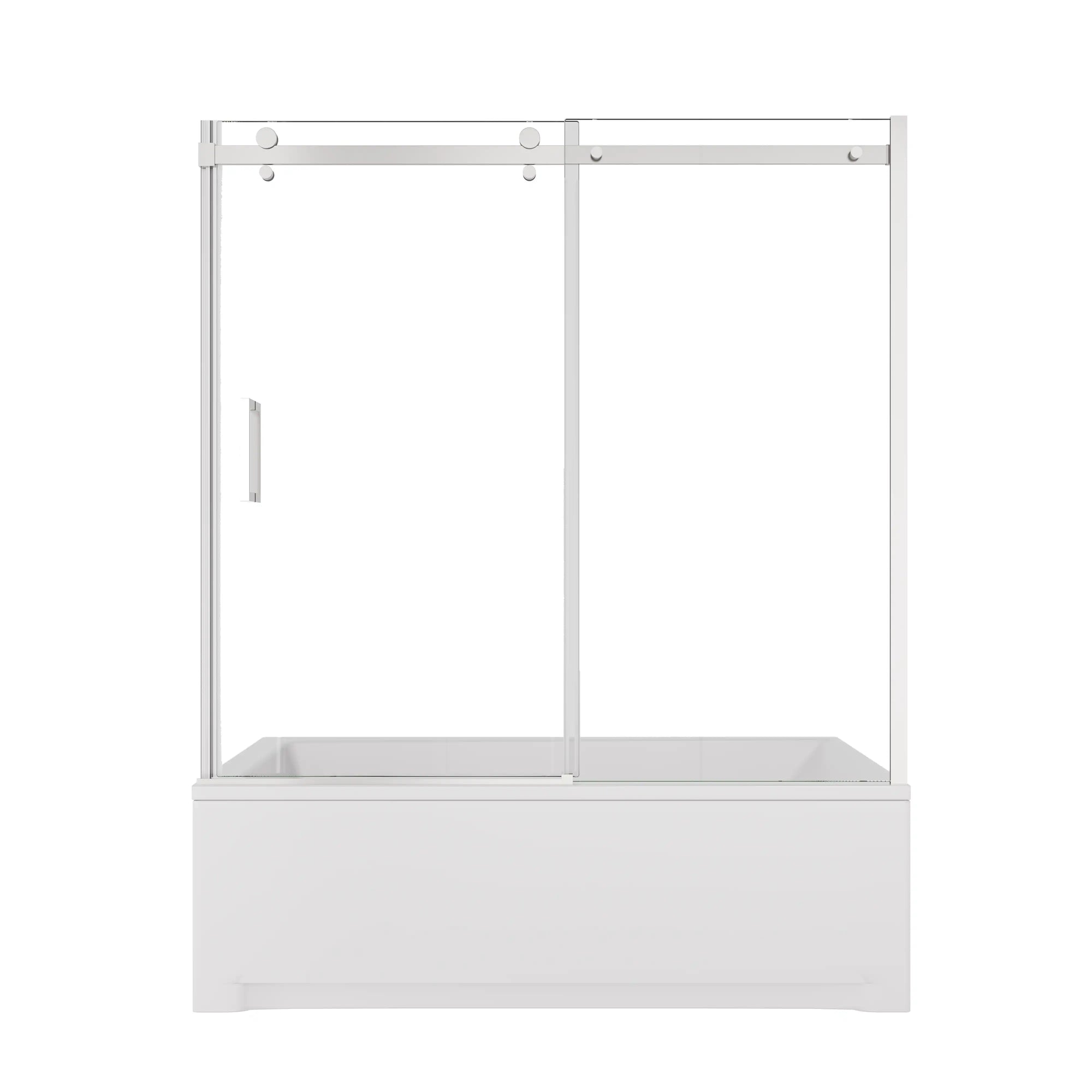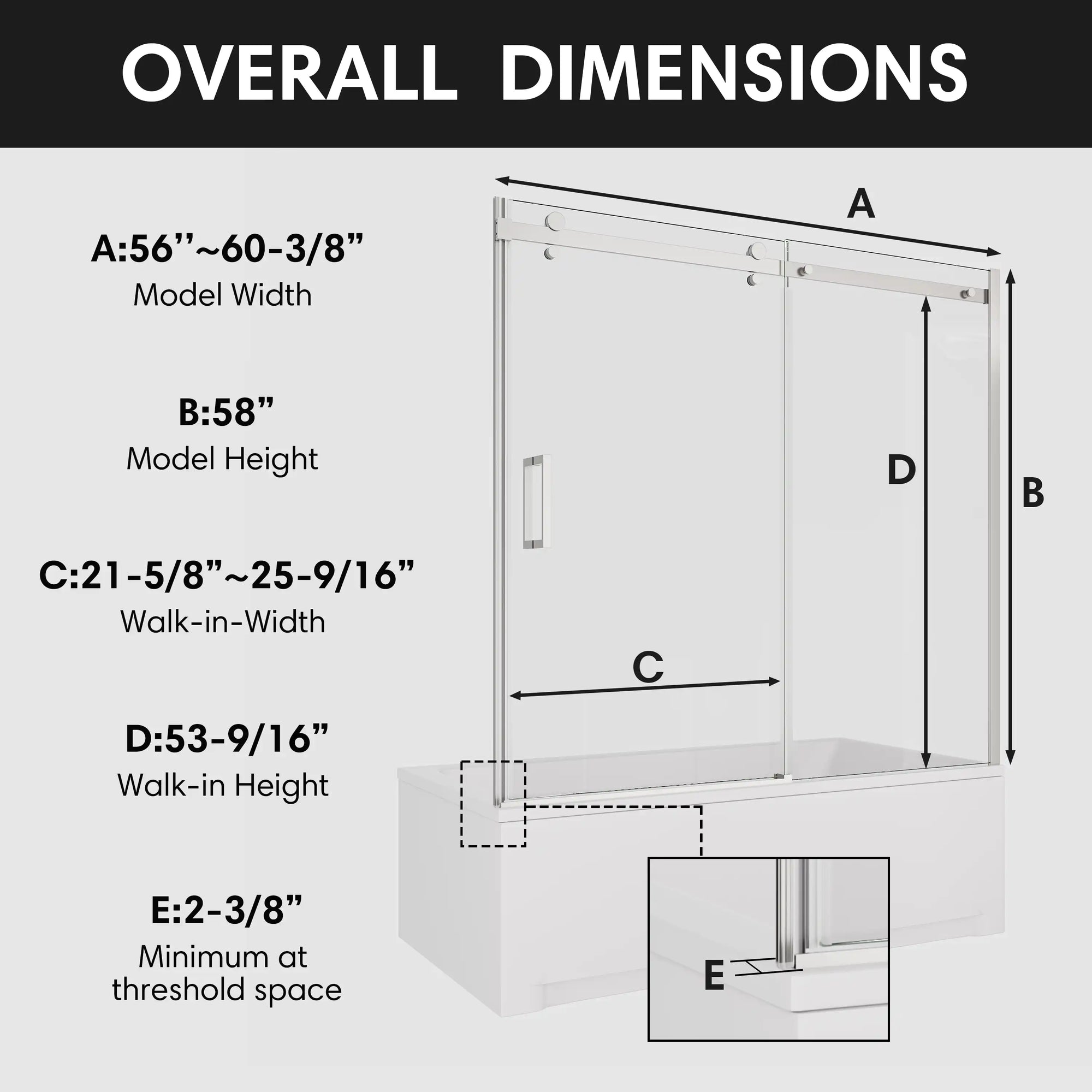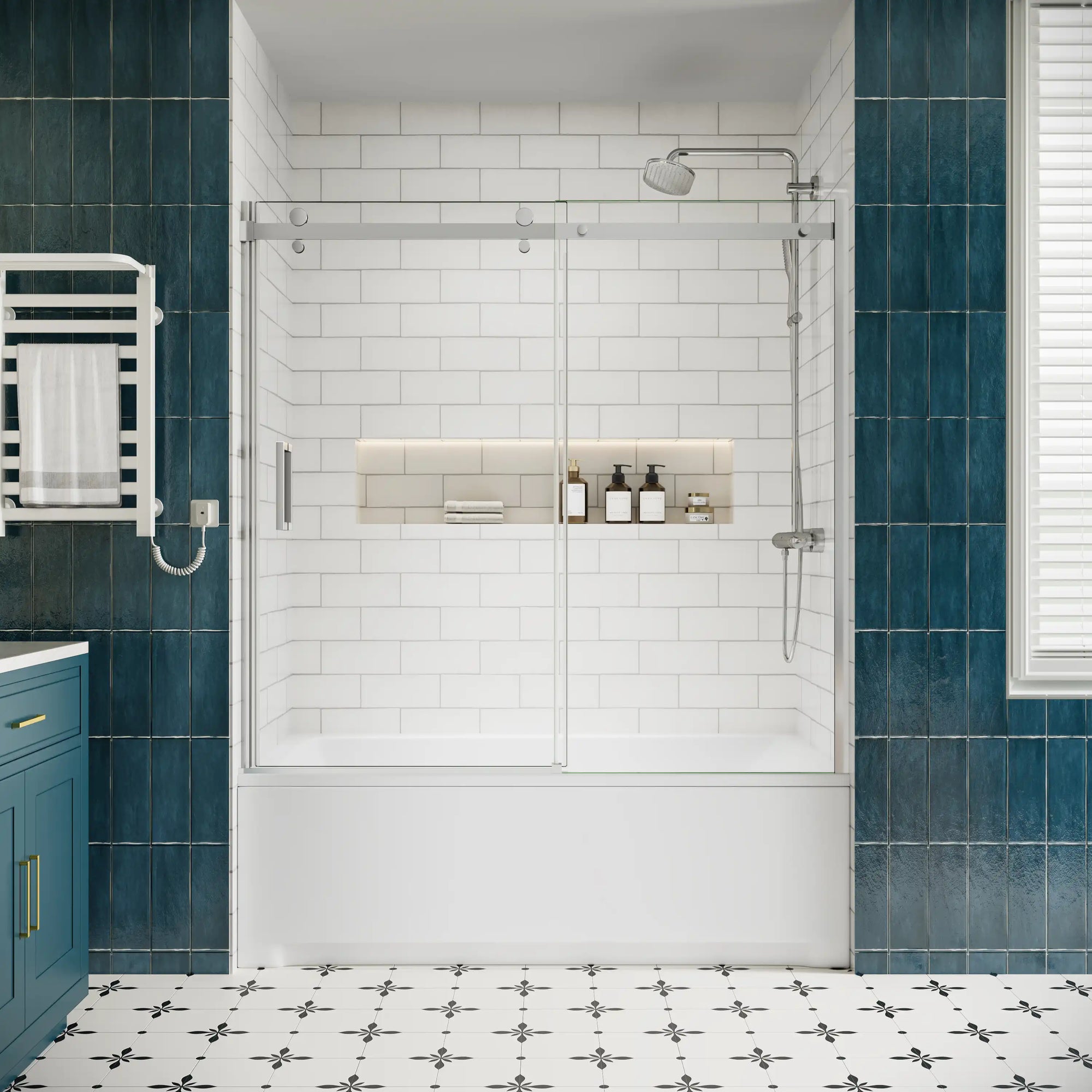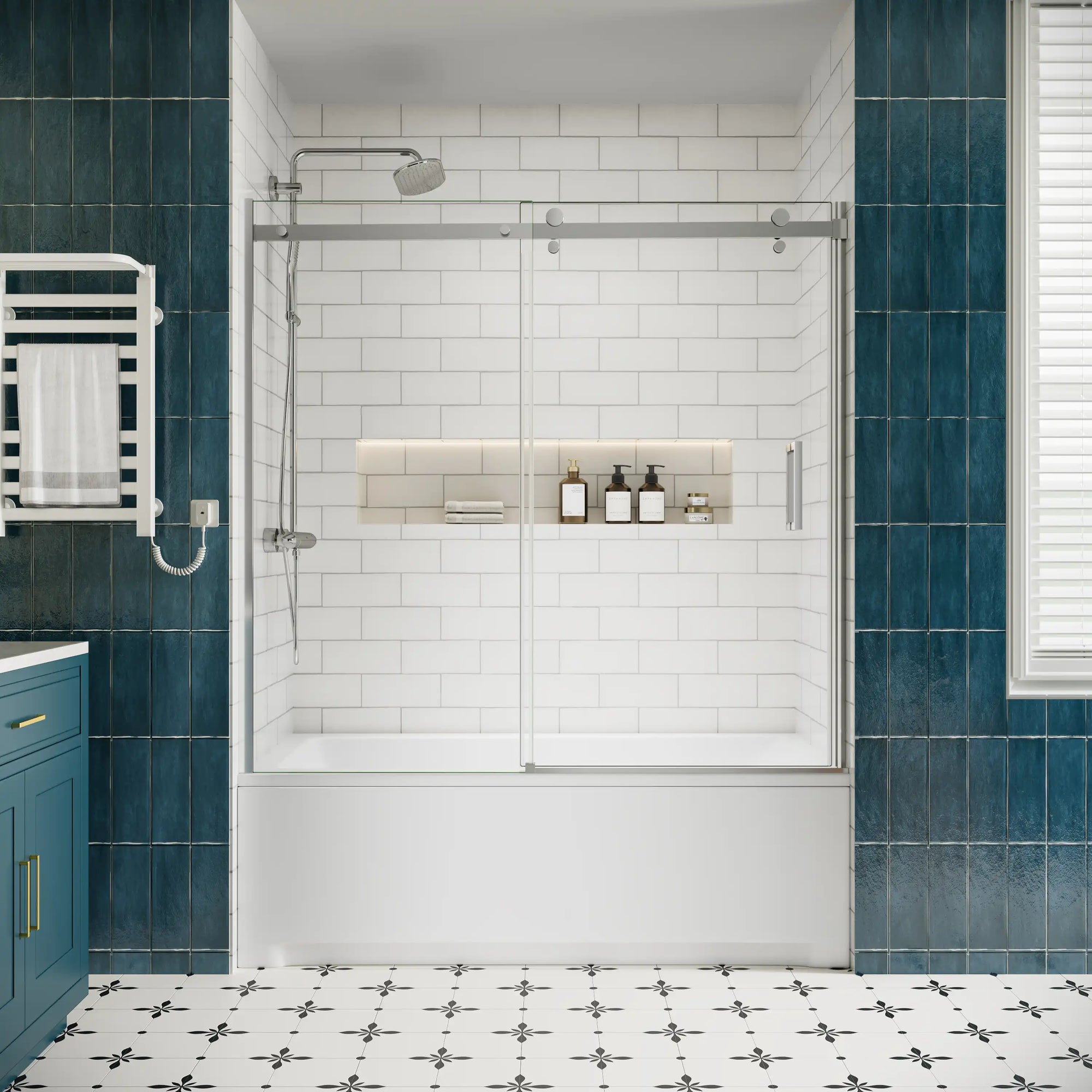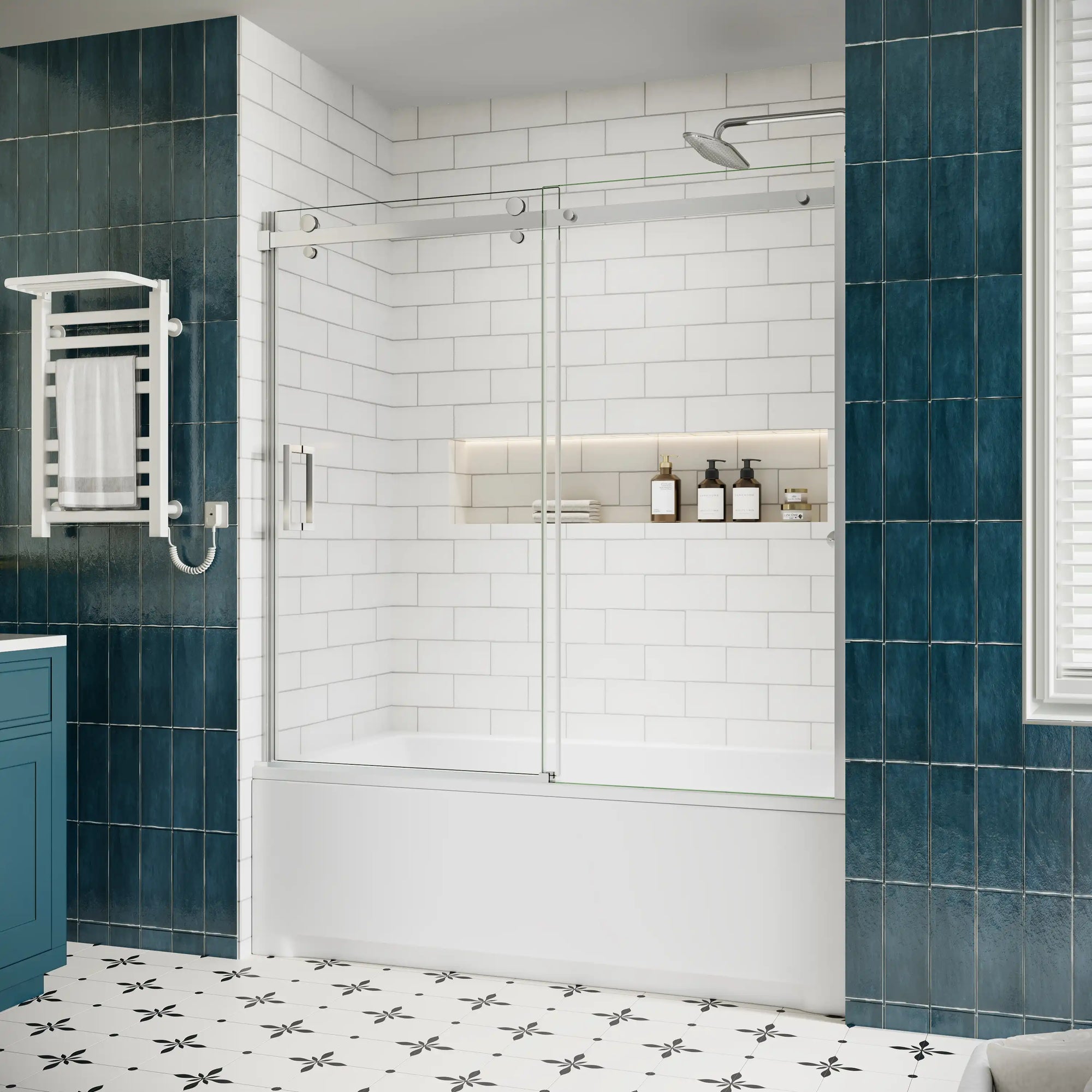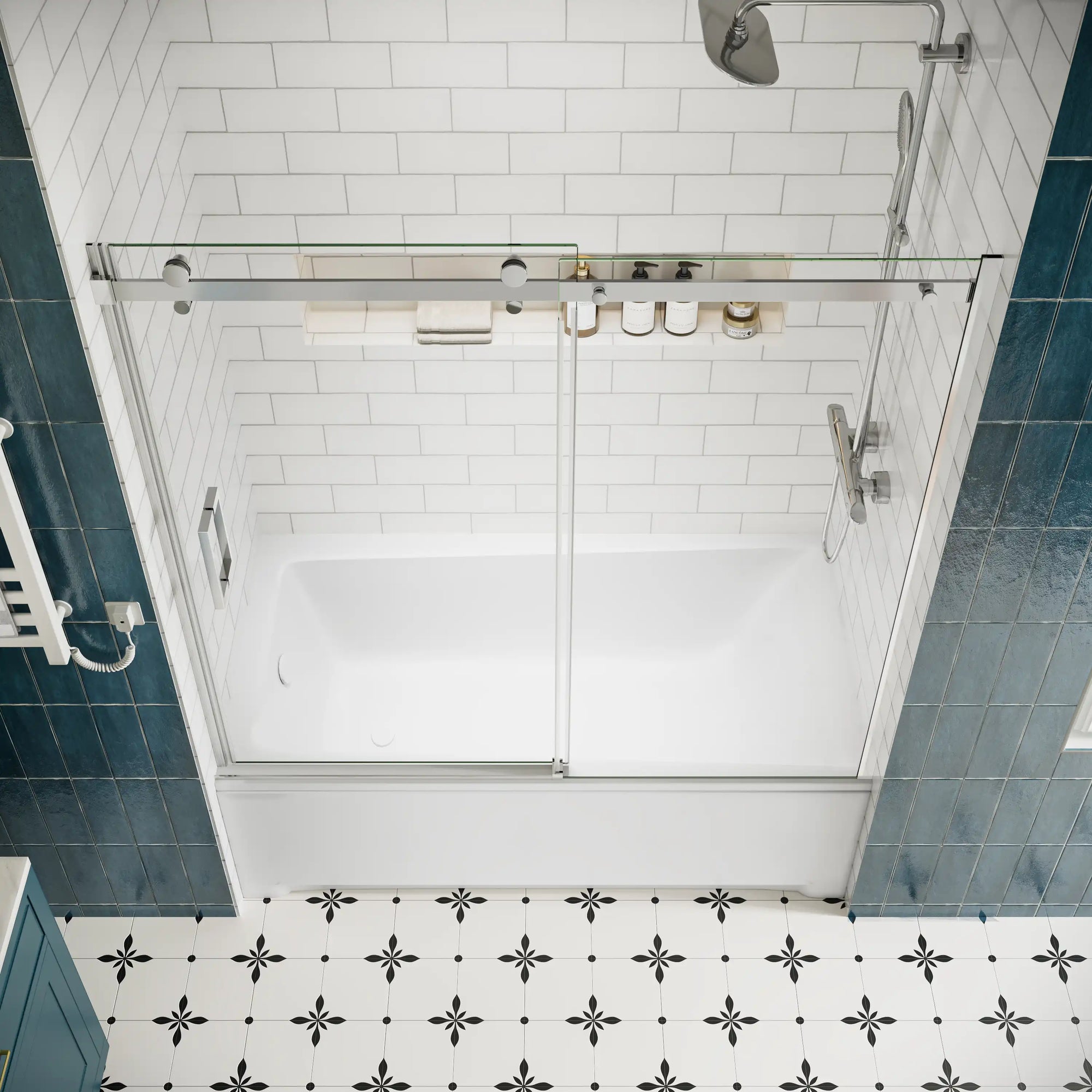There is something sacred about the space where water touches skin. A bathroom, when thoughtfully composed, is more than a place of function, it becomes a sanctuary. In this ritualistic arena, the bathtub enclosure emerges not as a mere barrier, but as a sculptural element that frames the most intimate of daily experiences. Glass and metal, light and shadow — when orchestrated well — transform the ordinary into the poetic.
This article journeys through the evolving language of bathtub enclosures, exploring their form, texture, and sensorial influence on the modern bathing space. Not with instruction, but with inspiration — as one might leaf through a coffee table book, savoring each space like a breath.
Table of Contents:
- The Art of Framing Water: Why Bathtub Enclosures Matter
- From Minimalism to Maximalism: Aesthetics and Styles in Enclosures
- Material Matters: Glass, Texture, and the Dance of Light
- Beyond Utility: Enhancing Rituals and Daily Experiences
- The Harmonious Fit: Choosing the Right Enclosure for Your Space
- Conclusion: Crafting Quiet Luxury, One Panel at a Time
- FAQ: Expert Responses to Common Questions
The Art of Framing Water: Why Bathtub Enclosures Matter
Water in motion is a wild thing. It seeks to escape the boundaries we set — to sprawl, splash, shimmer. A bathtub enclosure gently reins in that motion, offering structure without suppression. Its purpose is practical, yes — containing water, protecting floors — but its presence speaks louder in the silence it frames.
Think of a freestanding tub nestled beneath a sheet of curved glass. The enclosure is a silent keeper of specificity, of the steam hush, of the shimmer of dawn light diffracting off its surface. It's less about preventing a wet floor, more about defining a ritual — drawing a soft, elegant boundary around personal time.
In modern design, the absence of clutter is a kind of luxury. A minimalist enclosure, frameless and clear, preserves sightlines and serenity. In tighter spaces, it becomes the difference between chaos and composition. Function and form, seamlessly choreographed.

From Minimalism to Maximalism: Aesthetics and Styles in Enclosures
Time flows, just like water when it comes to design. Gone are the days when the bathtub enclosure stood silently aside; it now proclaims a style, it has a soul as well. Whether echoing the clean geometry of Scandinavian restraint or the bold curves of Art Deco revival, these enclosures have entered the lexicon of taste.
Minimalism favors the barely-there: narrow metal trims (sometimes none at all) perfectly matching the lines of the tub and wall. Black accents lend the deliberately gallery-like sharpness; brushed gold warms the tone, like candlelight over marble.
But maximalism is no stranger here. Arched glass panels, fluted textures, smoked tints — they tell stories of layered experiences. The enclosure becomes not just a divider, but a centerpiece. A narrative of intimacy, of indulgence. The bathroom turns from a backstage utility to a main stage composition.
Good enclosures follow personality. They don't clash with tiles or faucets — they coexist. They reflect, diffuse, accent.
Material Matters: Glass, Texture, and the Dance of Light
A bathtub enclosure is a canvas — and glass is its primary medium. However, glass is never simply just "glass." Each of those variables comes into play when creating an atmosphere — its finish, interaction with the light, and a tactile whisper.
Translucent glass appears to go on forever, allowing the eye to roam, and making narrowest of bathrooms feel roomy. A quiet in the noise, a sigh in the vision. Frosted or sandblasted glass, on the other hand, provides privacy and just a touch of mystery — shadows move behind the nebulous material, transforming action into shadow and silhouette.
Then there’s the rising trend of textured glass: ribbed, fluted. These not only catch light like crystal ware on a breakfast table but add a vintage, tactile quality to an otherwise modern space. Light filters through, not directly, but romantically.
Every material decision is a mood. And in the world of bathtub enclosures, even the invisible has a texture.

Beyond Utility: Enhancing Rituals and Daily Experiences
Bathing is not an errand — bathing is a break. A breath caught between the clamor of the world and the hush of the self. To hold space for these pauses to happen uninterrupted, a well-designed bathtub enclosure does more than keep water inside.
Imagine a morning ritual: soft towel underfoot, warm light filtering through steam-kissed glass. The enclosure is there, framing the moment — not imposing, not interrupting. Just present, like a translucent guardian of calm.
This is how design transcends use. A good enclosure respects your time, protects your space, and elevates your habits. It’s not about bathing better. It’s about bathing beautifully.

The Harmonious Fit: Choosing the Right Enclosure for Your Space
Every bathroom, and its owner is unique. The ideal bathtub enclosure is not done to a list, but as an item selected like a cut piece of clothing. Tailored to proportions, conscious of the time as it moves, in a conversation with surrounding materials.
In an urban apartment, nothing opens up possibilities like a sliding or pivoting enclosure that accesses new space without crowding. Flooding a countryside home with abundant square footage, a custom curved piece of glass can breath fluidity and sculpture.
Light is a designer in itself — ask where the sun falls, and your enclosure can amplify it. Ask how you move through the room, and the right design will never be in the way. Ask what feeling you wish to preserve: openness? Privacy? Drama? And let that answer shape your choice.
Because when a bathtub enclosure fits well — not just in size, but in spirit — the entire room breathes better. It becomes a sanctuary. A room of one’s own.

Conclusion: Crafting Quiet Luxury, One Panel at a Time
In the age of sensory overload, the bathroom remains one of the last refuges of solitude. And in that sacred refuge, the bathtub enclosure plays a subtle but vital role. It defines without dominating, enhances without overwhelming. It is clarity, containment, and calm — in a single gesture of design.
To choose the right enclosure is to compose a daily ballet of light, steam, silence, and touch. It's not a technical decision, but an emotional one. And when chosen well, it doesn’t just frame your bath. It frames your peace.
FAQ: Expert Responses to Common Questions
Q1: How do I choose between clear and frosted glass for my bathtub enclosure?
A: Consider your balance between openness and privacy. Clear glass enlarges space visually and lets in maximum light. Frosted or textured options provide modesty and soften the mood, ideal for shared or multi-use bathrooms.
Q2: Are frameless bathtub enclosures durable enough for daily use?
A: Absolutely. High-quality frameless enclosures use tempered safety glass and precision hinges to ensure both elegance and longevity. Their minimalist design also makes cleaning and maintenance easier.
Q3: What styles of bathtub enclosures are trending in 2025?
A: Frameless glass without textures, and warm-toned metal accents (like champagne bronze or brushed gold) are rising.
Q4: How do I make my small bathroom feel bigger with an enclosure?
A:
How to Elegantly Fit a Bathtub in Shower Enclosure Without Compromise
Pro Guide to Choose a Clawfoot Bathtub Shower Enclosure for a Stylish Bathroom!
Engineering the Perfect Bathtub Trackless Shower Door: Design and Material Considerations
